It’s a busy time of year right now with all the decorating, gift-buying, and holiday food prep–it’s a good thing my wife’s got all that covered so I can finally bring you some AZ stories. Actually, writing the annual Christmas letter is about my only task this time of year, and much to my wife’s chagrin, this remains a grossly unfinished task. Please don’t tell my wife I’m blogging right now.
So where were we with AZ? Oh yes, our family had departed Green Valley after a two-day stay and were about to go on a loop tour around the Santa Ritas, heading down to Nogales and back up through Patagonia and Sonoita. There were only a couple birds on the agenda for the day. The first (and also most exciting prospect) was checking on a Barn Owl day roost–somewhere in southern Arizona. 🙂 For some reason, Evan has latched on to this species and was one he really wanted to see. He’ll refer to it by its scientific name, Tyto alba, and he’s been known to play its blood-curdling scream on his iPod in our house.
Once we got to the Owl’s roost, I walked up to this tower of sorts and looked up into the rafters. Immediately I locked eyes with my Barn Owl lifer, tucked way up in the shadows! Just as I started to point it out to Evan and my dad, the Barn Owl flushed out of the opening right toward us! Of course I wasn’t ready with the camera, but our looks at this Owl were hard to beat. Evan, bug-eyed, said in an astonished voice, “Whoa, Tyto alba just flew right by me!”
With no photo, the sighting was bittersweet for me. But a Barn Owl seen is way better than no Barn Owl, so off to Patagonia we went. In this city (and southern AZ in general), birders are the norm and not the nerd-freaks that people think of us in other places:
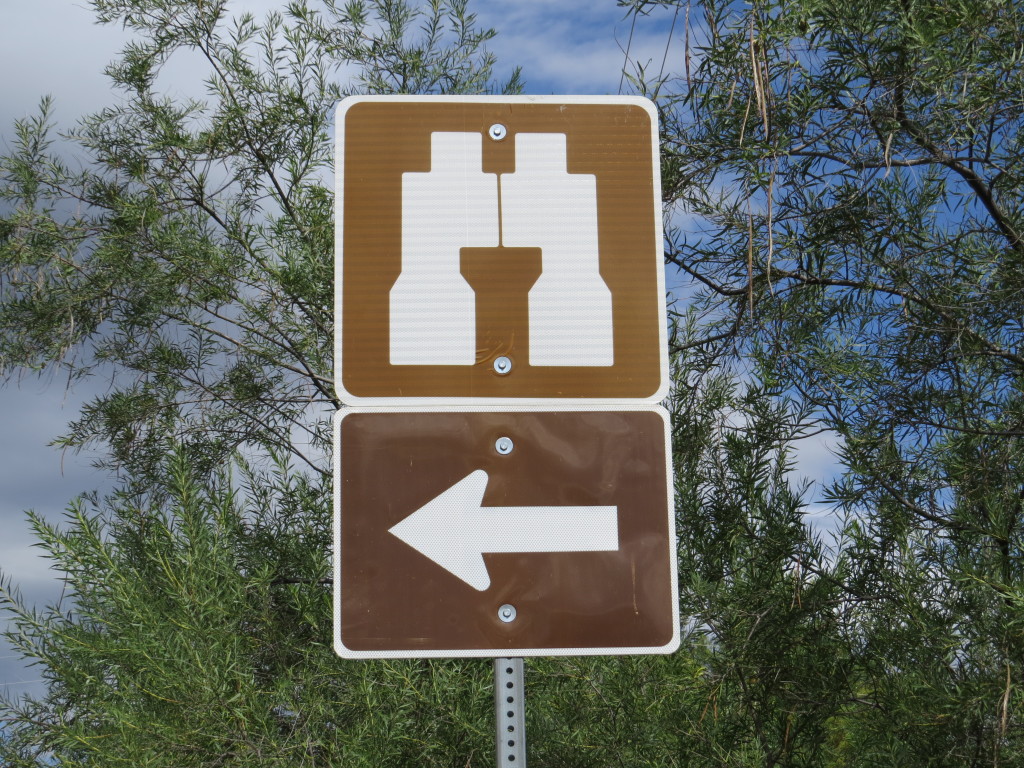
Patagonia is hallowed birding ground where all kinds of birding myths and legends originate. In fact, a famous birding phenomenon known as the Patagonia Picnic Table Effect was coined from something remarkable that happened here that has also played out numerous times in many other locations. Here’s the PPTE in a nutshell: some birders in the 1970s stopping for lunch in Patagonia discovered a rare bird which brought in more birders who discovered more rare birds in that location. Whenever I find a rarity, I always hope it’s the beginning of the Patagonia Picnic Table Effect. Needless to say, Patagonia is a place I have longed to visit after reading about it in books.
Despite the fact that the PPTE is based on multiple rarities and despite the fact that we were actually in Patagonia, I was after one bird at one very famous location:
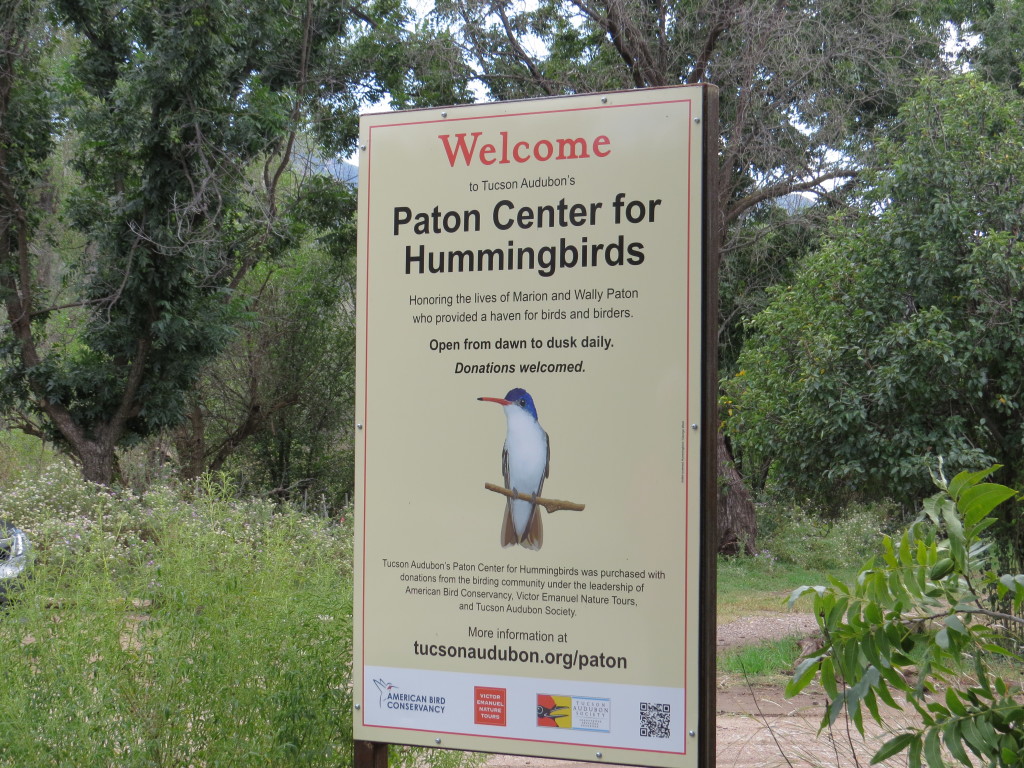 The famous Paton House–hard to believe I was actually here.
The famous Paton House–hard to believe I was actually here.
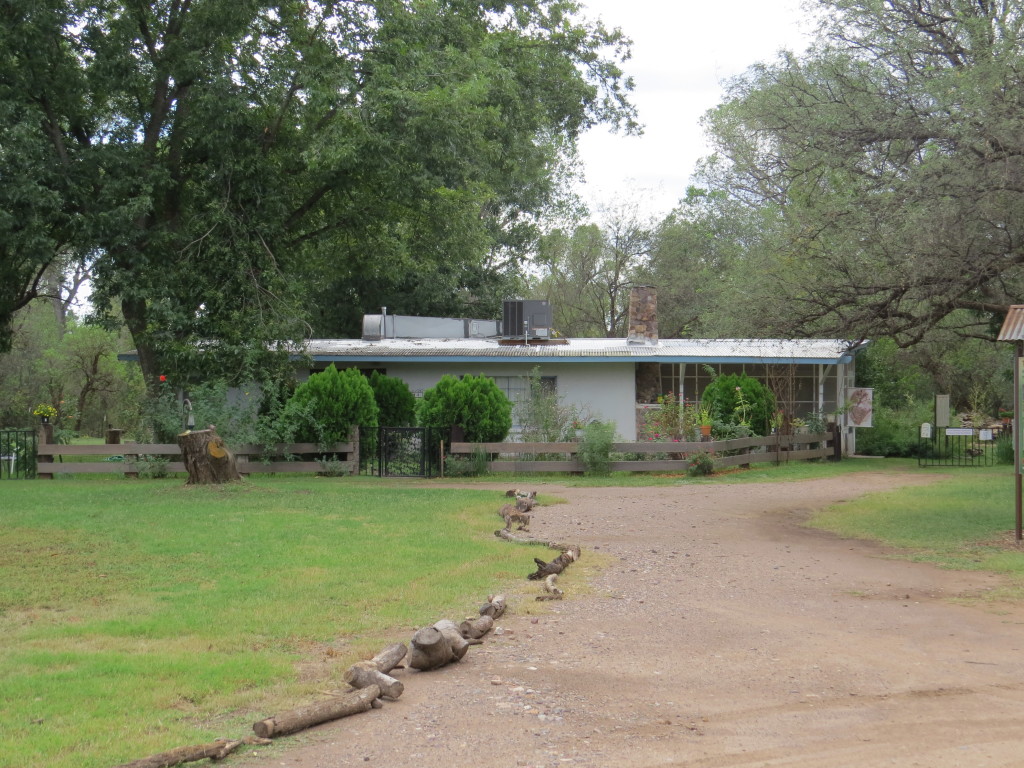 No, we didn’t come for the common White-winged Doves, though they were dapper and only the second time we’d seen one.
No, we didn’t come for the common White-winged Doves, though they were dapper and only the second time we’d seen one.
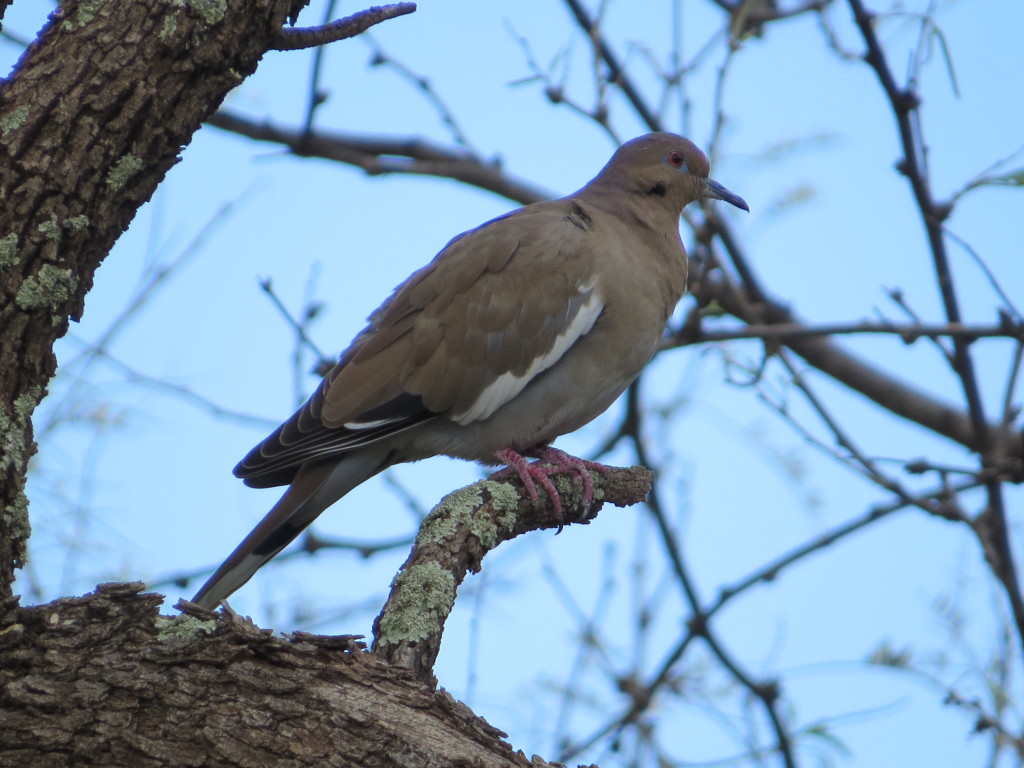 Nor did we come for the WWDO’s cousin, the much less abiding Inca Dove.
Nor did we come for the WWDO’s cousin, the much less abiding Inca Dove.
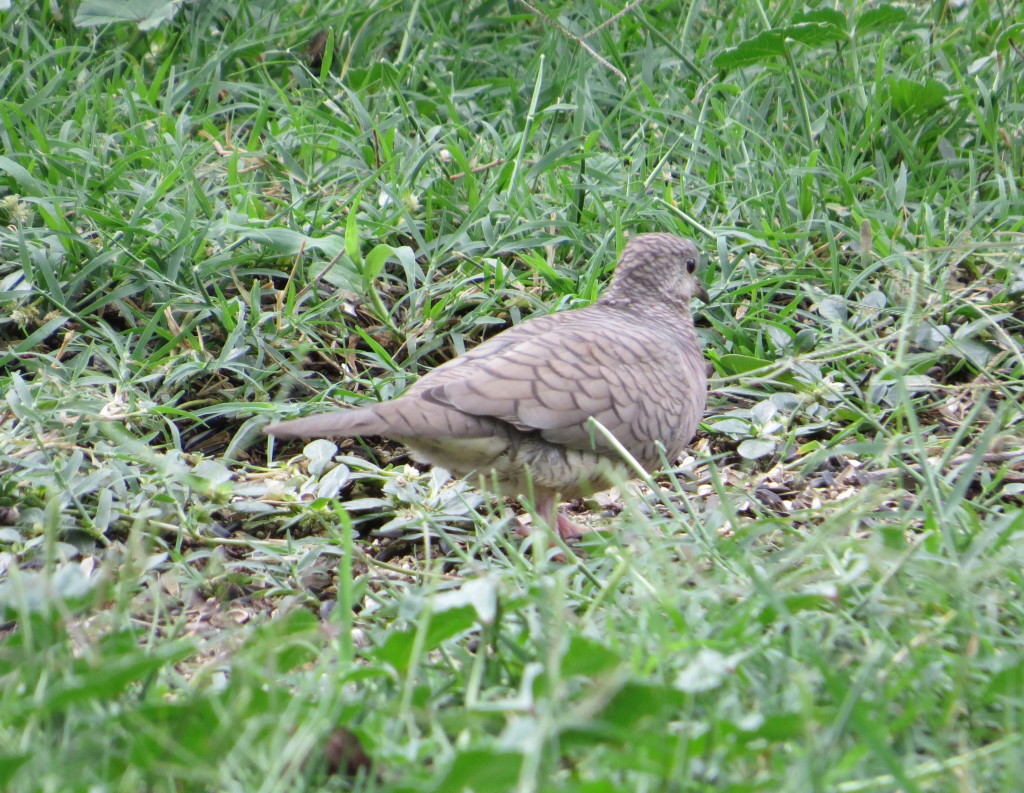 It was nice to see a Black-headed Grosbeak even if it was a bit scruffy looking, but that’s still not why we came.
It was nice to see a Black-headed Grosbeak even if it was a bit scruffy looking, but that’s still not why we came.
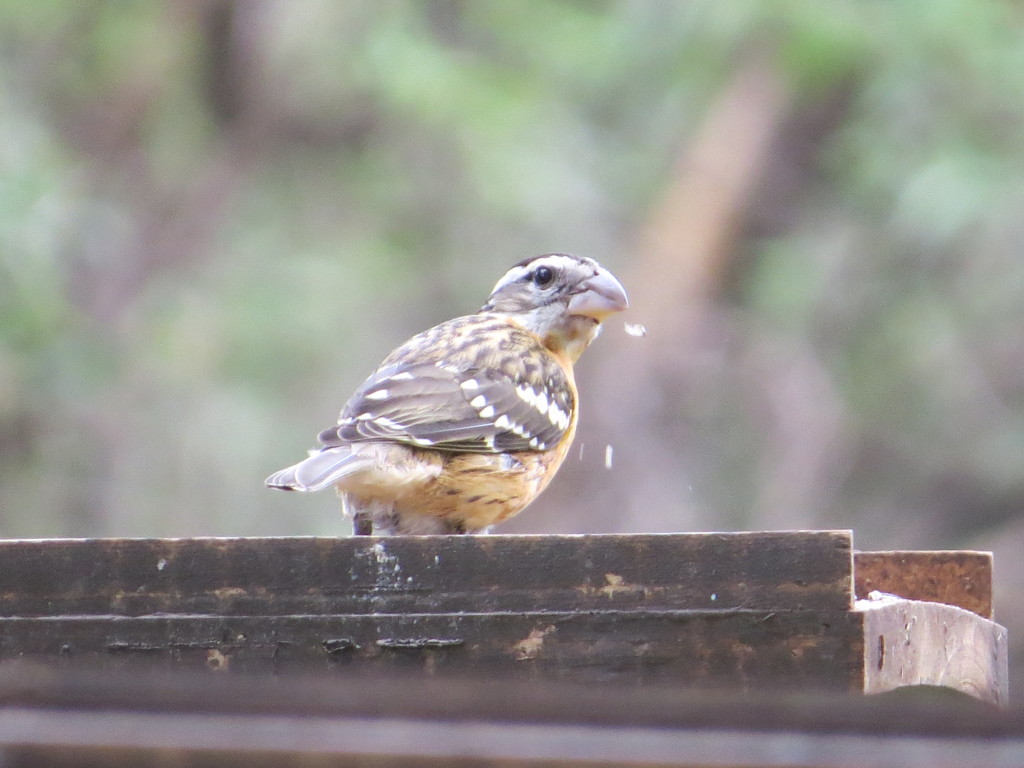
I very much enjoyed up-close looks at my first MALE Gila Woodpecker–still not why we came though.
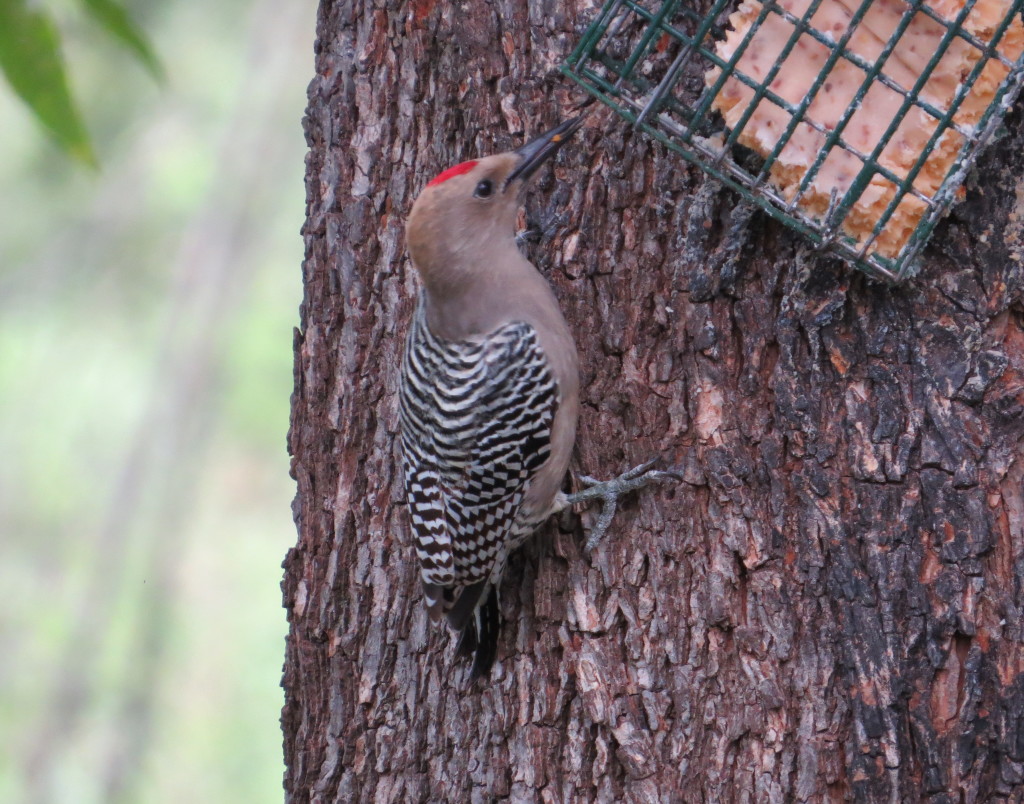 We came for the Hummingbirds. But not for the Broad-billed.
We came for the Hummingbirds. But not for the Broad-billed.
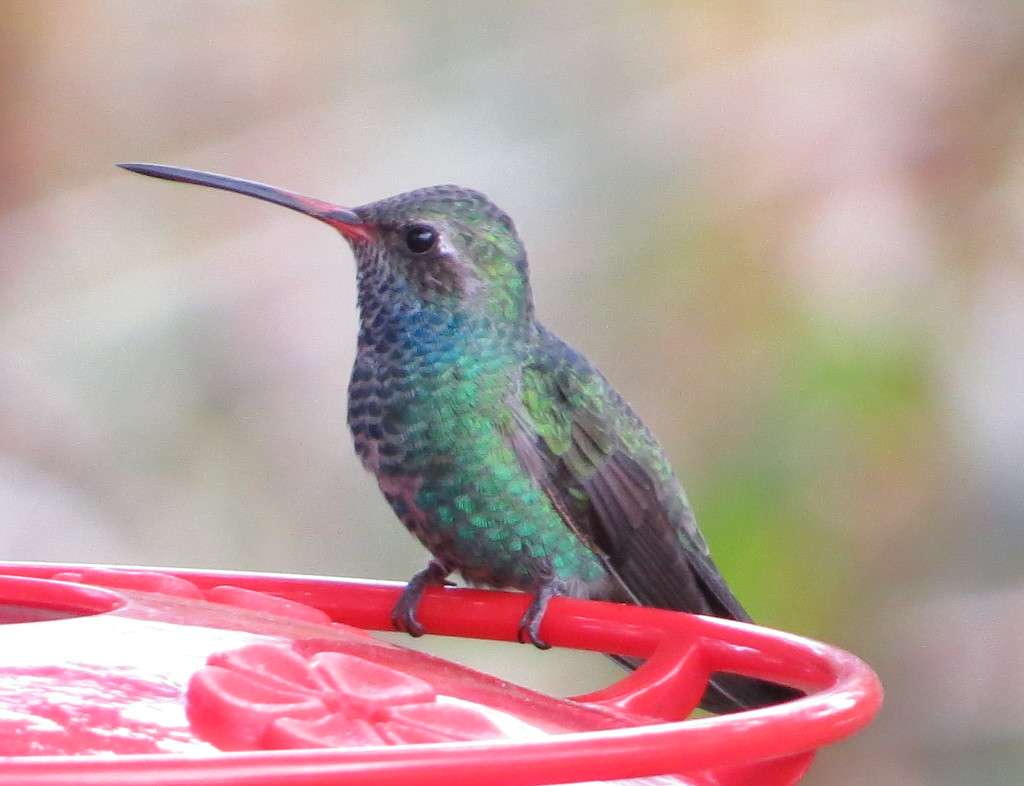
Sorry, this teasing is annoying, especially since you knew from the first photo that the main attraction is the Violet-crowned Hummingbird. Like so many birders before us, we made our pilgrimage to Patons’ just to add this key lifer. Good thing we saw one.
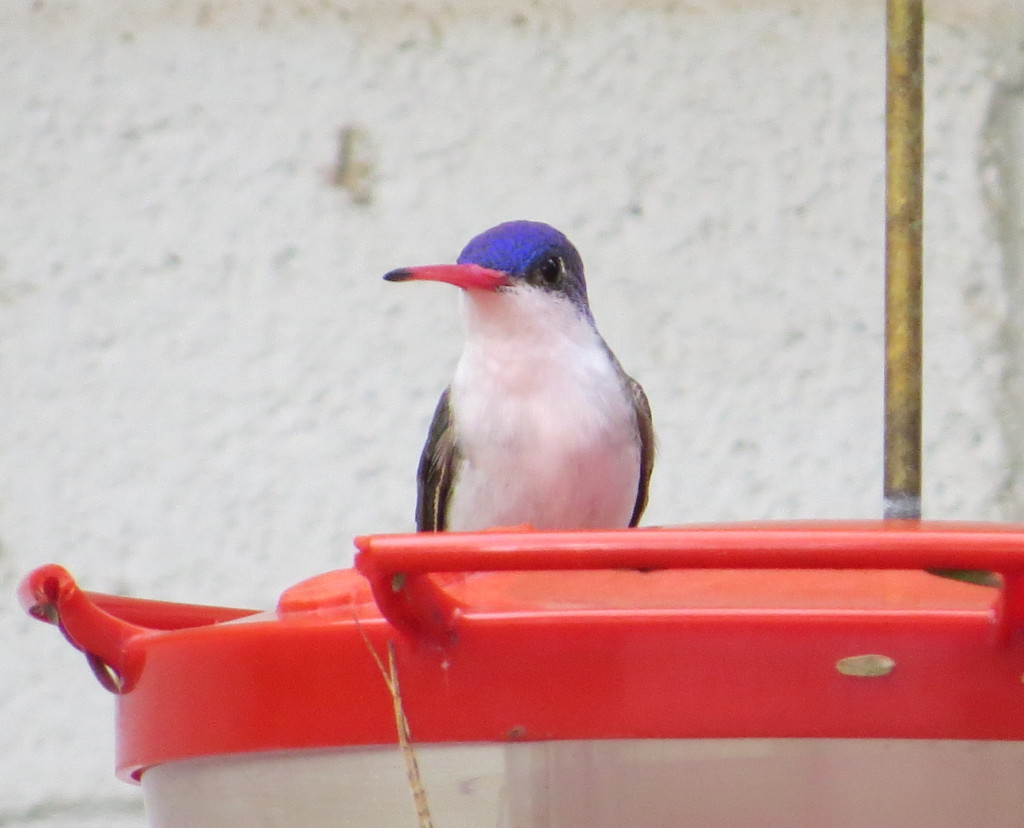 Ain’t it a beaut?
Ain’t it a beaut?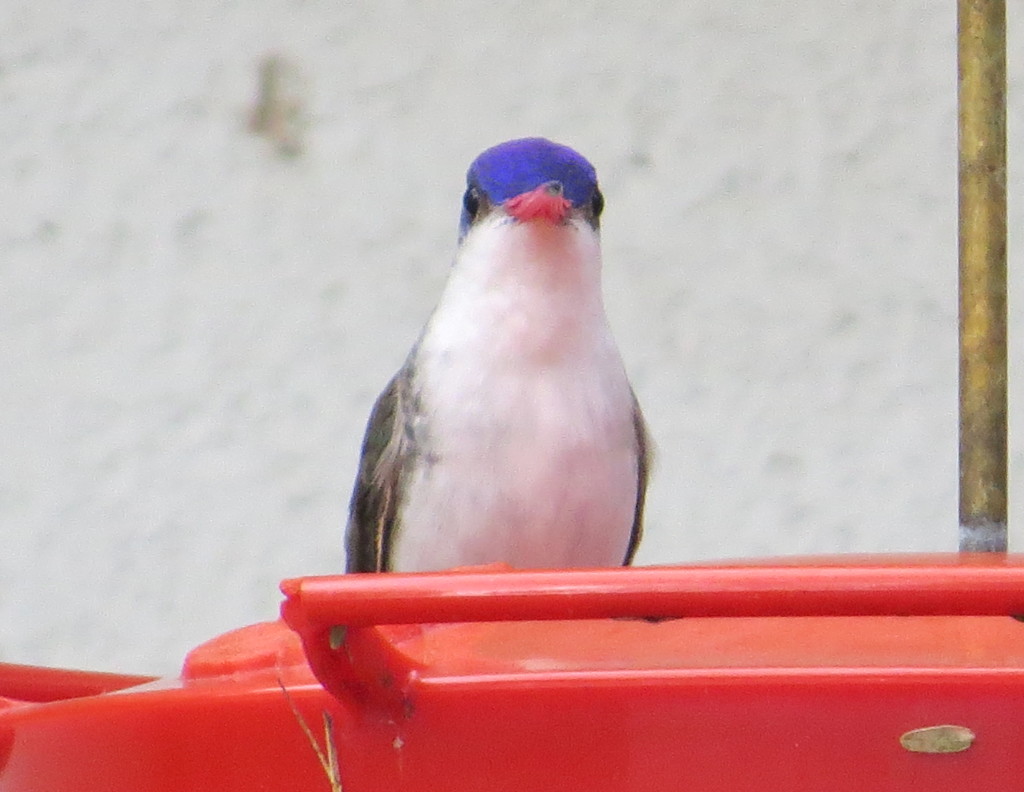 It knows it too. Like Orcas or Dolphins, it pandered to its gawking audience.
It knows it too. Like Orcas or Dolphins, it pandered to its gawking audience.
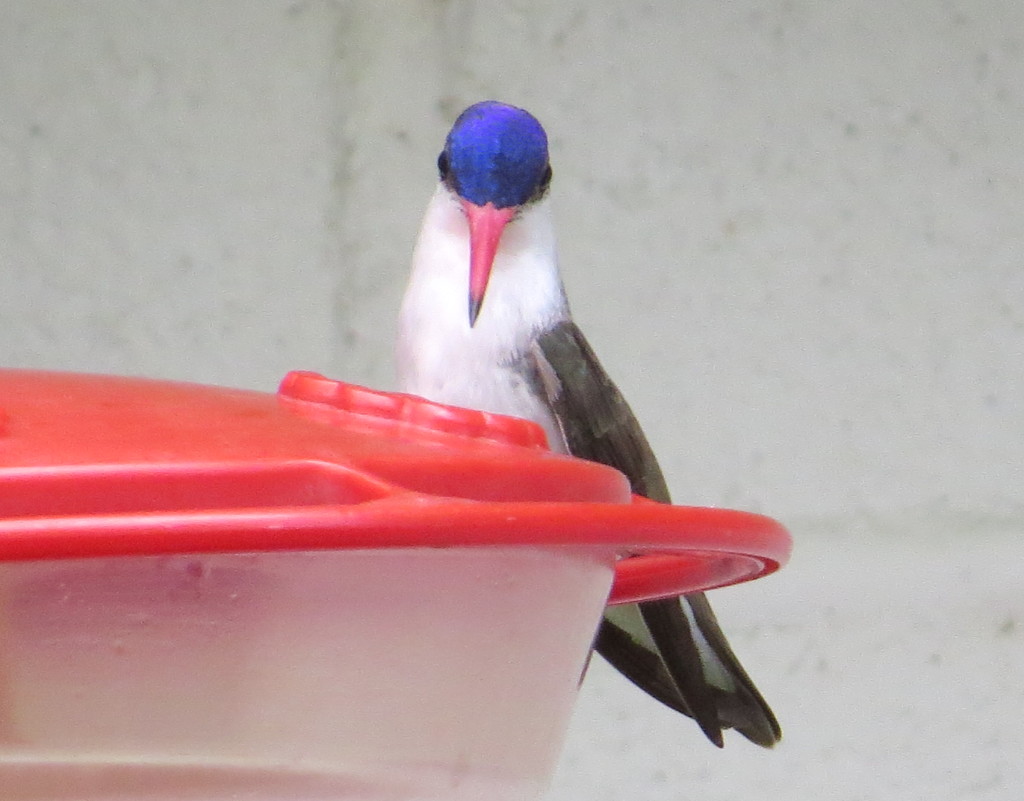 So that was that. Tommy DeBardeleben and Gordon Karre had told me about a much rarer Hummer, the Plain-capped Starthroat, that had been seen regularly somewhere in Patagonia. Not knowing exactly where to go for it and not feeling I could make yet another birding stop with the non-birding family, I didn’t even bother to check into it.
So that was that. Tommy DeBardeleben and Gordon Karre had told me about a much rarer Hummer, the Plain-capped Starthroat, that had been seen regularly somewhere in Patagonia. Not knowing exactly where to go for it and not feeling I could make yet another birding stop with the non-birding family, I didn’t even bother to check into it.
Instead, my family and I ate lunch at a park in Patagonia after a successful trip to Patons’. It wasn’t until we were somewhere past Sonoita that it dawned on me–we ate lunch at a real life Patagonia picnic table. And ironically, I don’t recall seeing/hearing a single bird in that park while we ate. Back to that Plain-capped Starthroat, I also didn’t realize until we got home that we had driven within a block of that ultra-rare Mexican bird. I probably could have stopped to watch a feeder for a bit and not wrecked the family’s travel schedule. I am sure this will haunt me for years, possibly decades.
Moving on, we finally made it back to Maricopa. Before we got to my parents’ house, though, we had to check up on a couple of old friends in my parents’ neighborhood. Love this guy (or gal–there’s one of each).
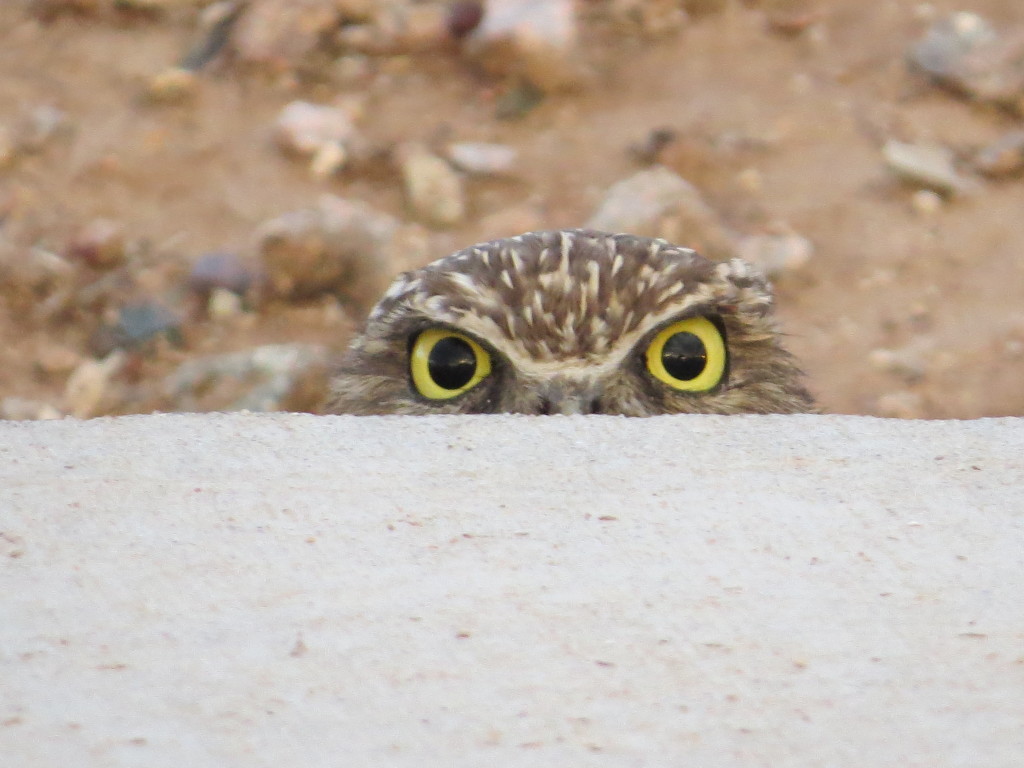 Scanning a residential pond in the low light of the evening, I was excited to see the brilliant pop of color of the male Vermilion Flycatcher in my binoculars. They never get old.
Scanning a residential pond in the low light of the evening, I was excited to see the brilliant pop of color of the male Vermilion Flycatcher in my binoculars. They never get old.
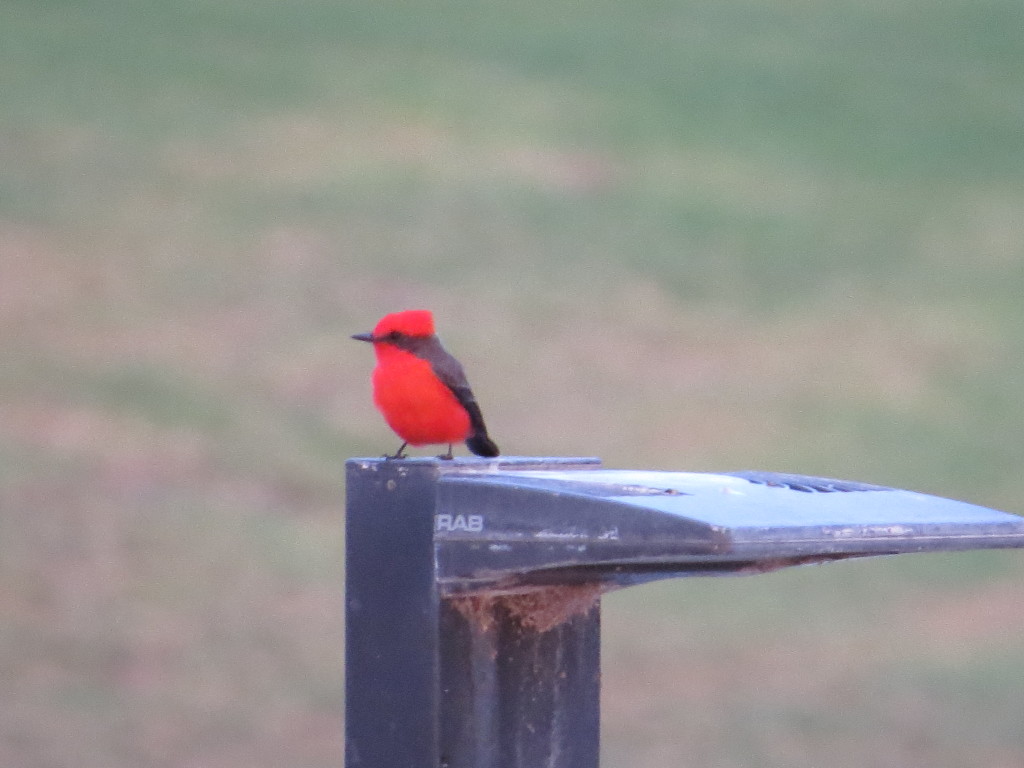 We also saw a Jackrabbit of some sort which was a cool experience.
We also saw a Jackrabbit of some sort which was a cool experience.
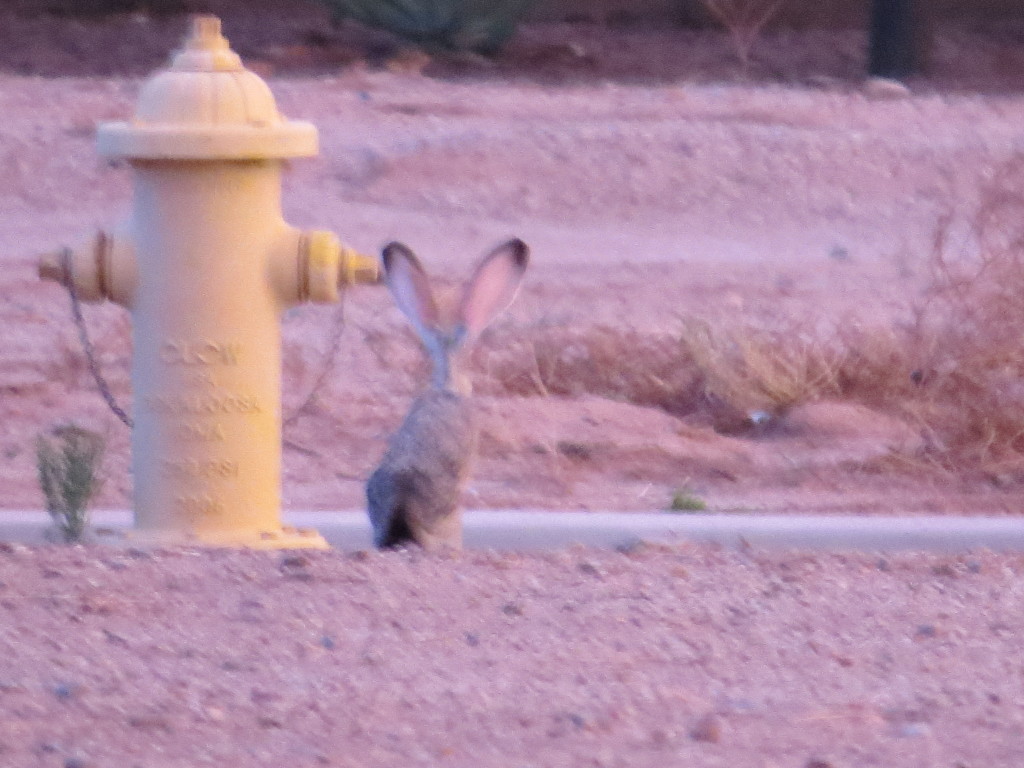 The Arizona fun isn’t over. Next up is the final post and arguably the ugliest and cutest birds you will see.
The Arizona fun isn’t over. Next up is the final post and arguably the ugliest and cutest birds you will see.

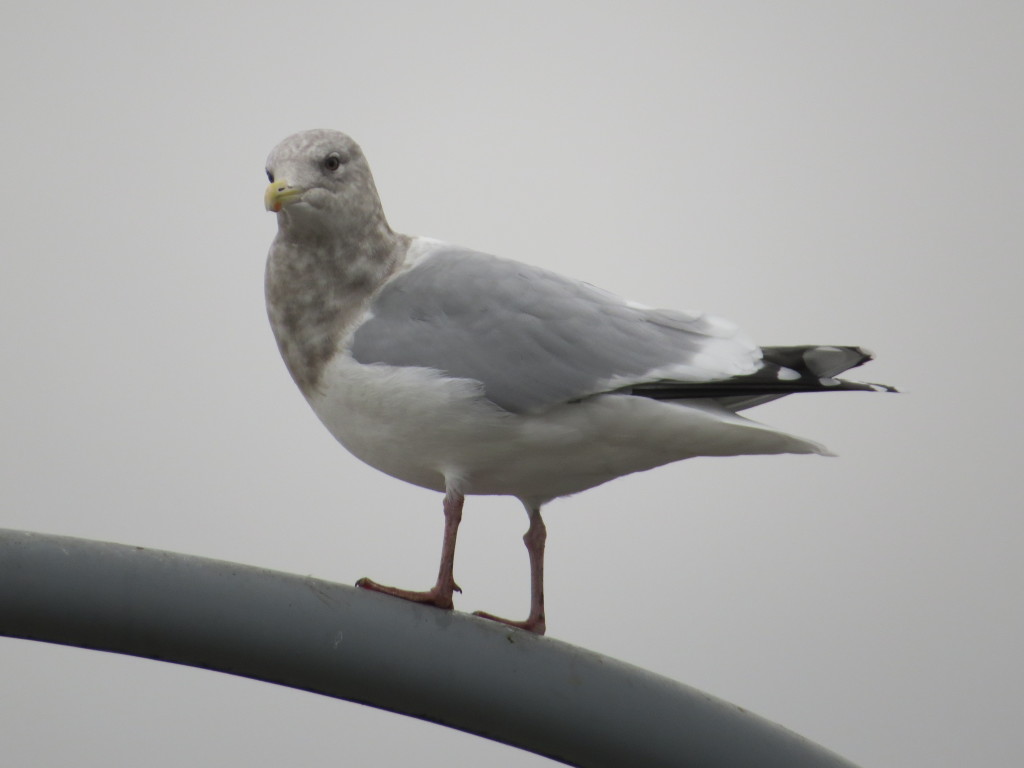
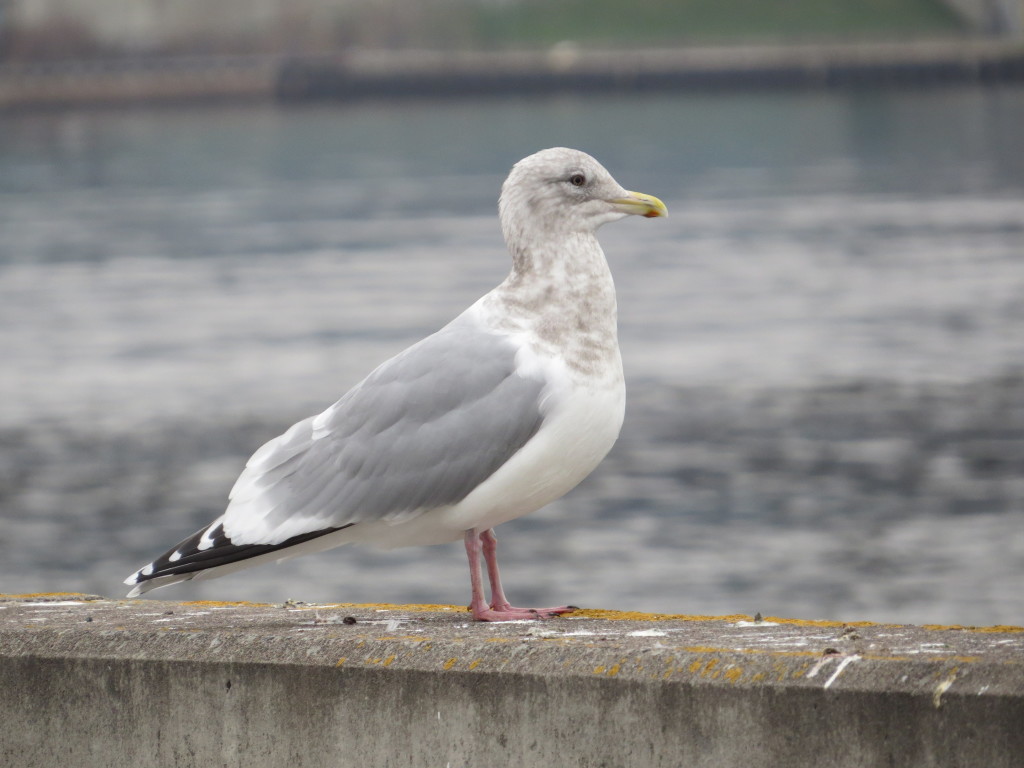
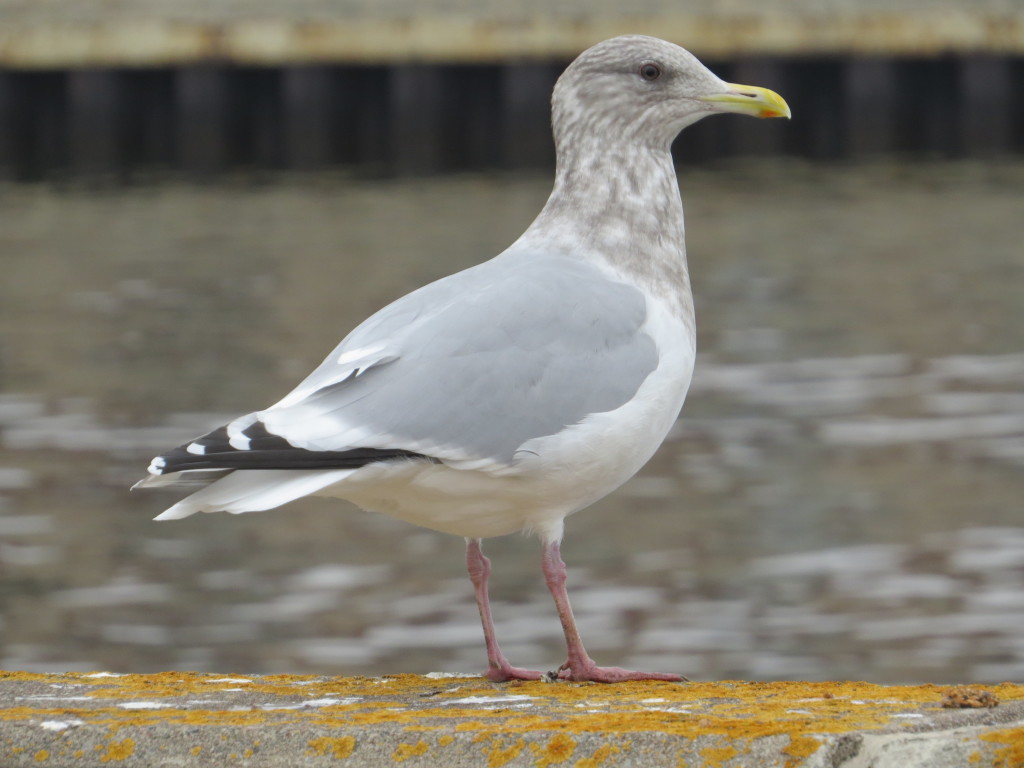
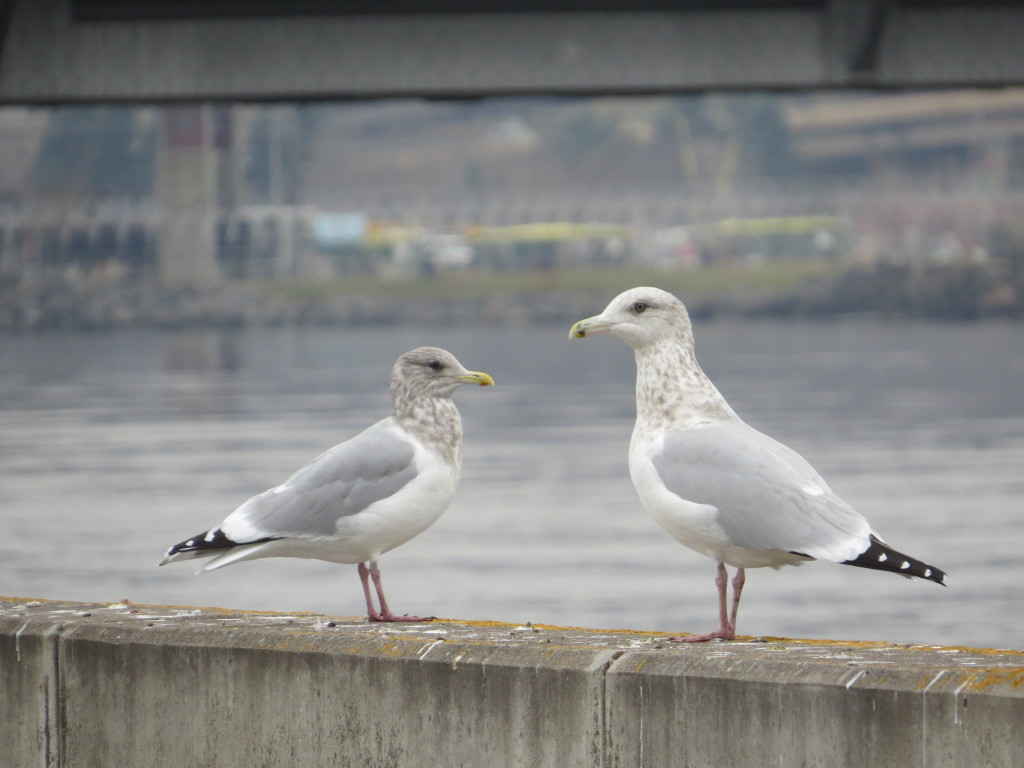 Gull identification is hard, especially if one is only looking at pictures or studying field guides. Learning them from books is even kind of boring which I proved by falling asleep one night studying Gulls in Sibley. To study Gulls and get to know them, one must learn Gulls through immersion–get yourself up close and in person among the Gulls and go with someone who knows more about the Gulls than you do. Though I didn’t add any lifers on this try, my confidence and excitement for Gulling increased under the tutelage of John.
Gull identification is hard, especially if one is only looking at pictures or studying field guides. Learning them from books is even kind of boring which I proved by falling asleep one night studying Gulls in Sibley. To study Gulls and get to know them, one must learn Gulls through immersion–get yourself up close and in person among the Gulls and go with someone who knows more about the Gulls than you do. Though I didn’t add any lifers on this try, my confidence and excitement for Gulling increased under the tutelage of John.
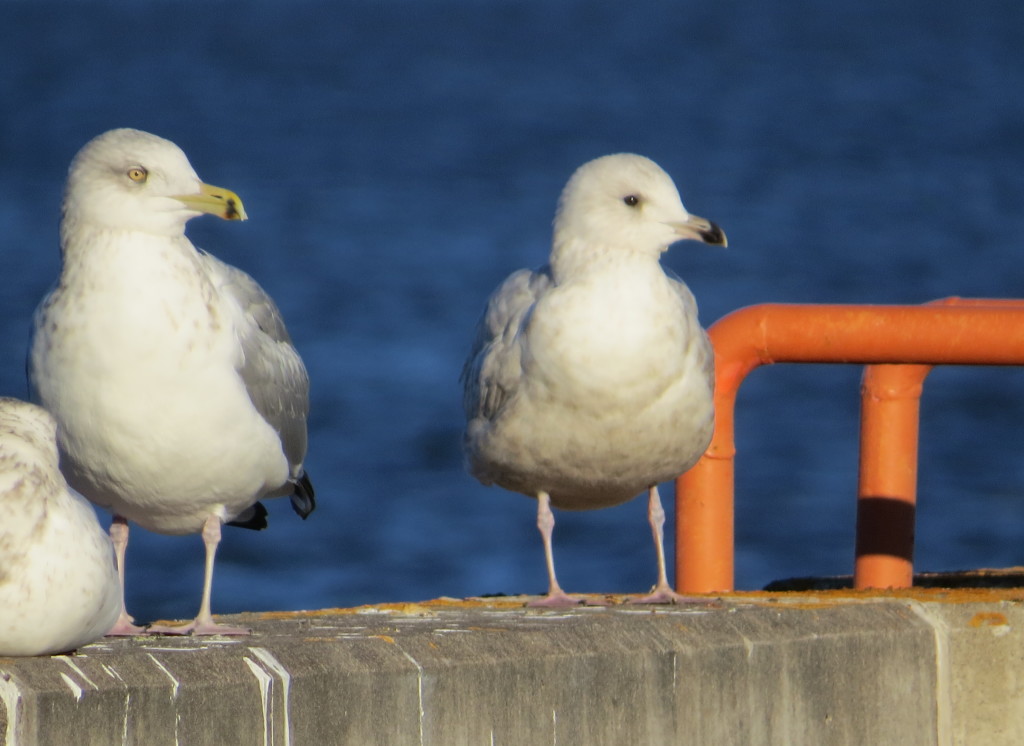
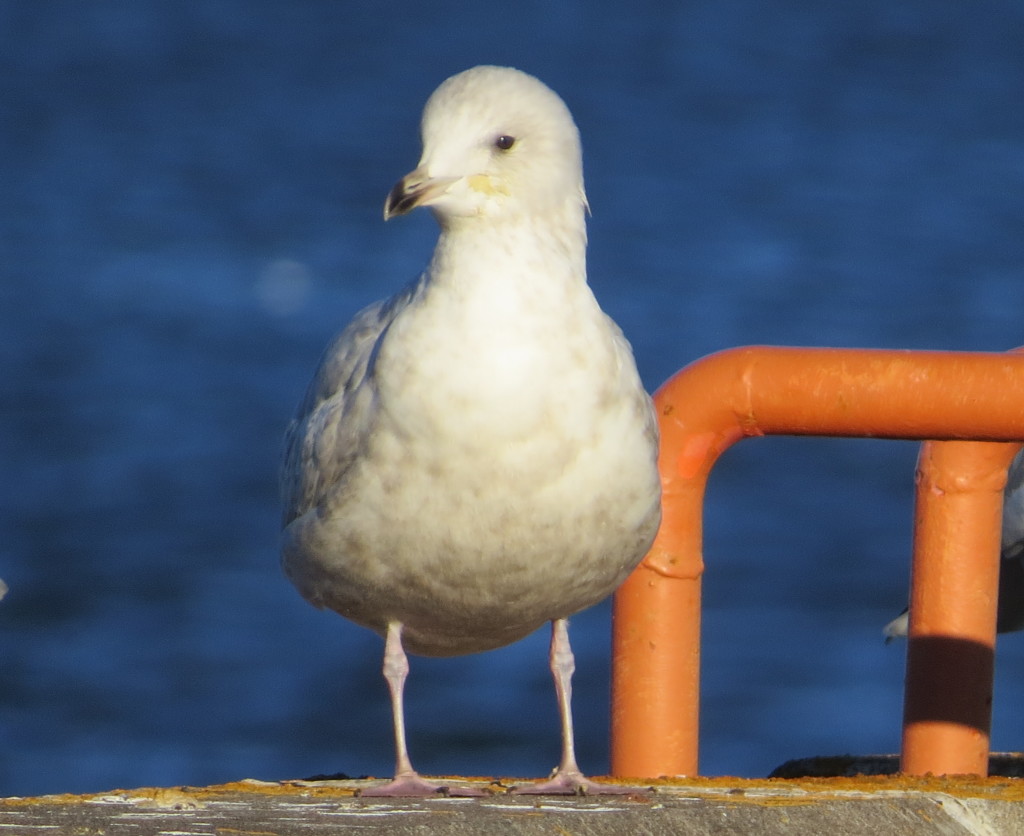 The Iceland was cool, but I was really itching to make my way to that Great Black-backed for some photos. But, you don’t rush down the pier and get out in front of a birding Jedi like Peder Svingen. Patience, young Skywalker. Many Gulls to go through have you.
The Iceland was cool, but I was really itching to make my way to that Great Black-backed for some photos. But, you don’t rush down the pier and get out in front of a birding Jedi like Peder Svingen. Patience, young Skywalker. Many Gulls to go through have you. While I waited, a Thayer’s was begging to be crushed.
While I waited, a Thayer’s was begging to be crushed.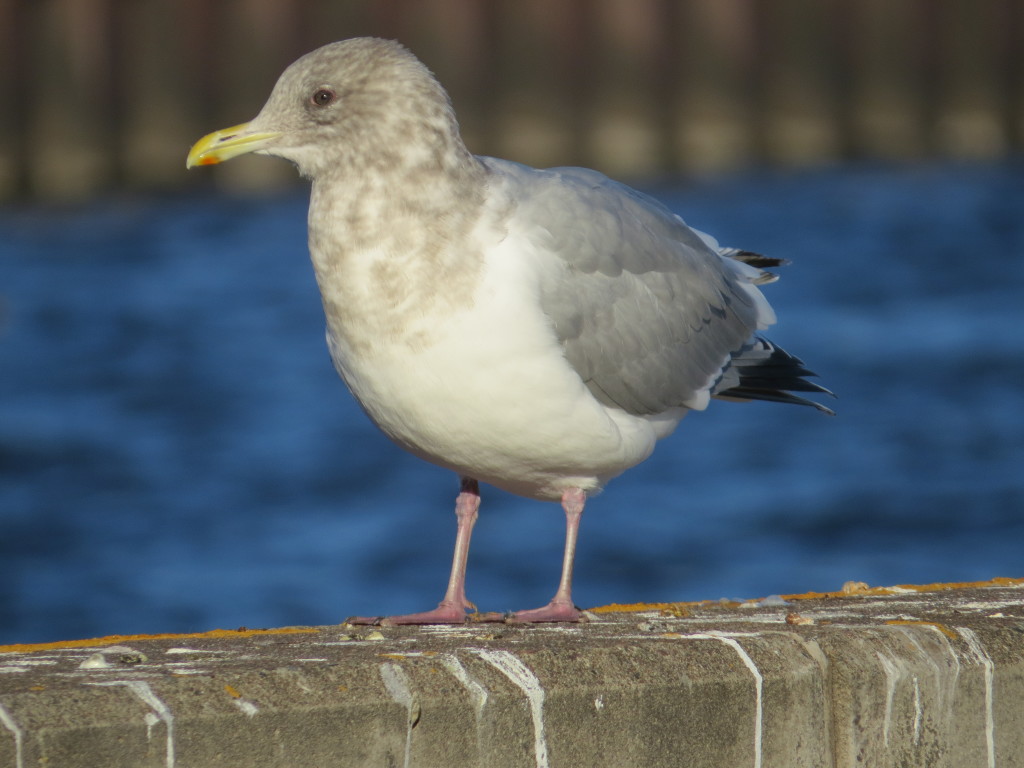
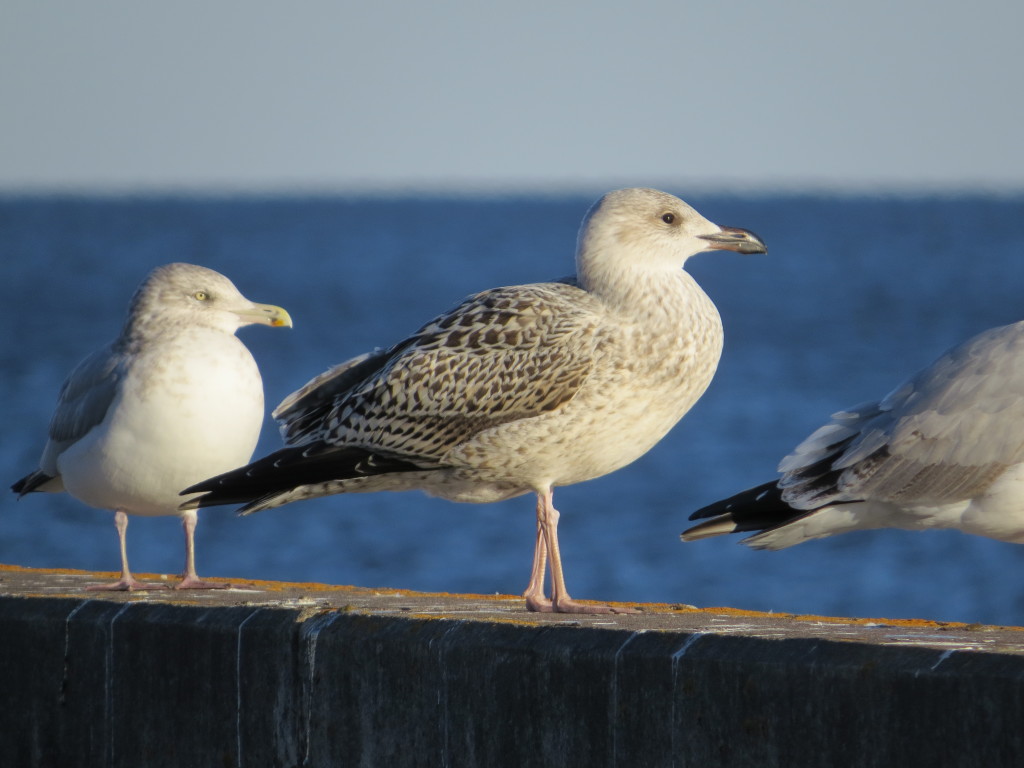 I love how this HEGU is checking him out.
I love how this HEGU is checking him out.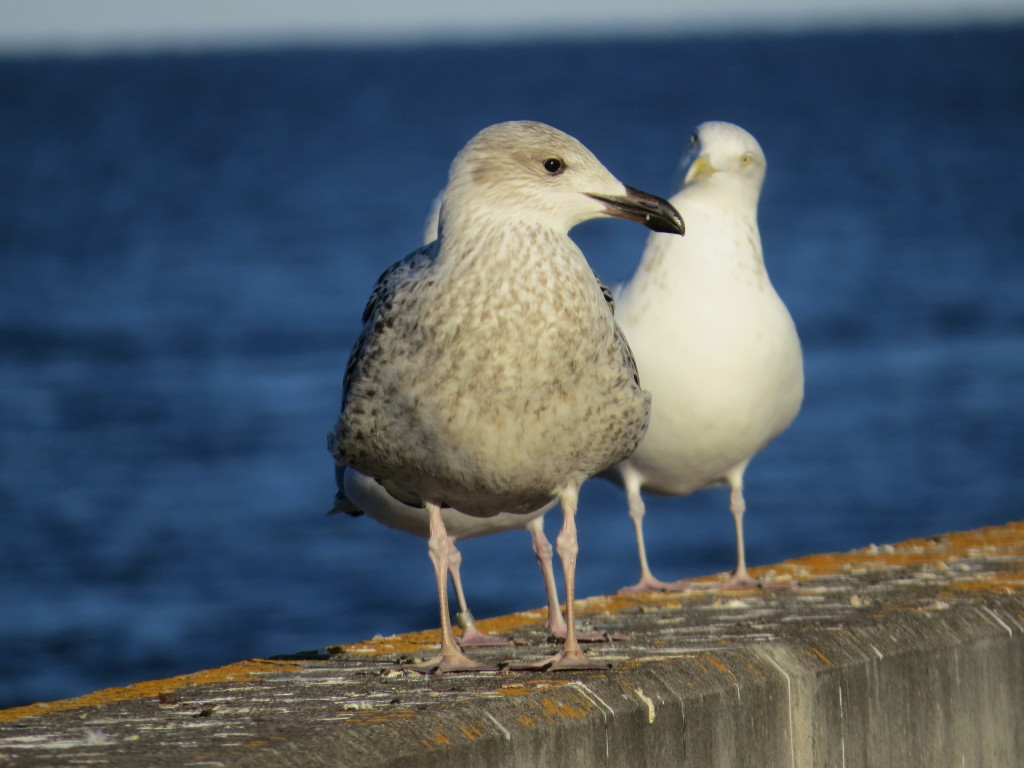
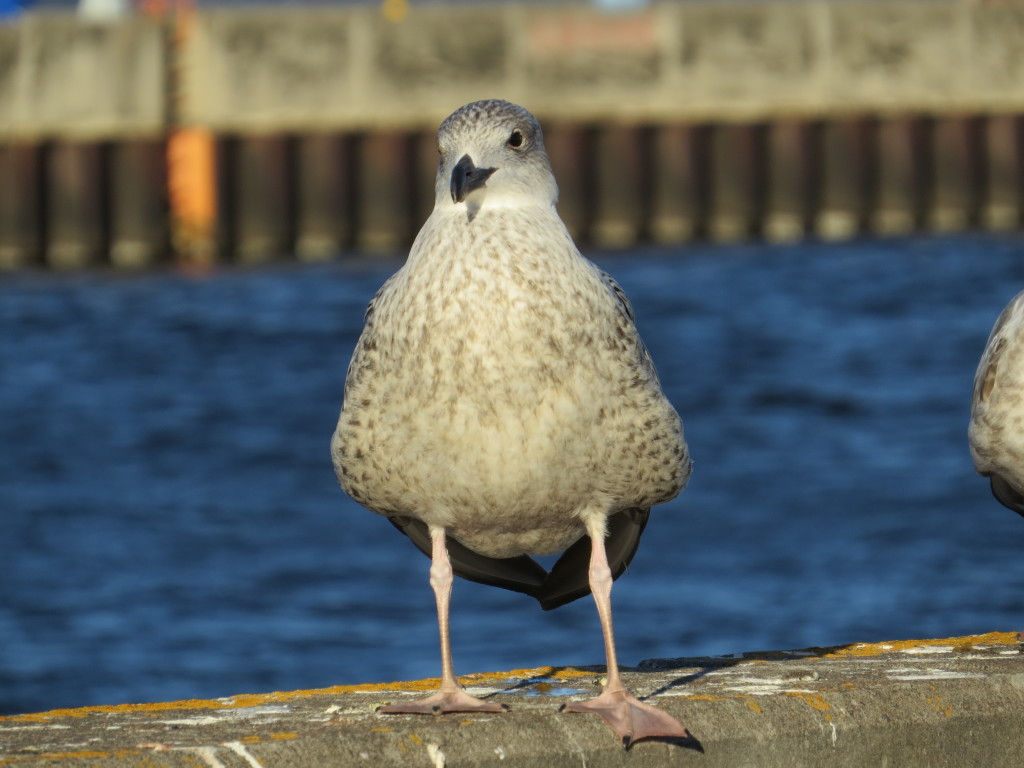 The Great Black-backed Gull is the largest of the Gulls; it dwarfs the Herring Gulls.
The Great Black-backed Gull is the largest of the Gulls; it dwarfs the Herring Gulls.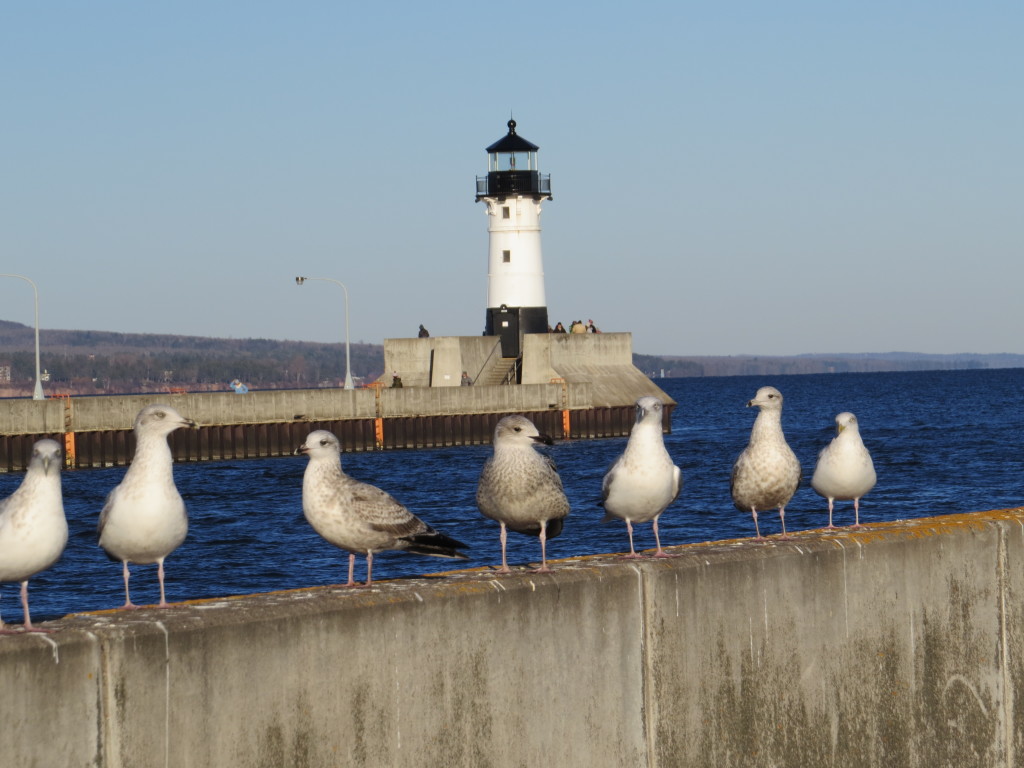
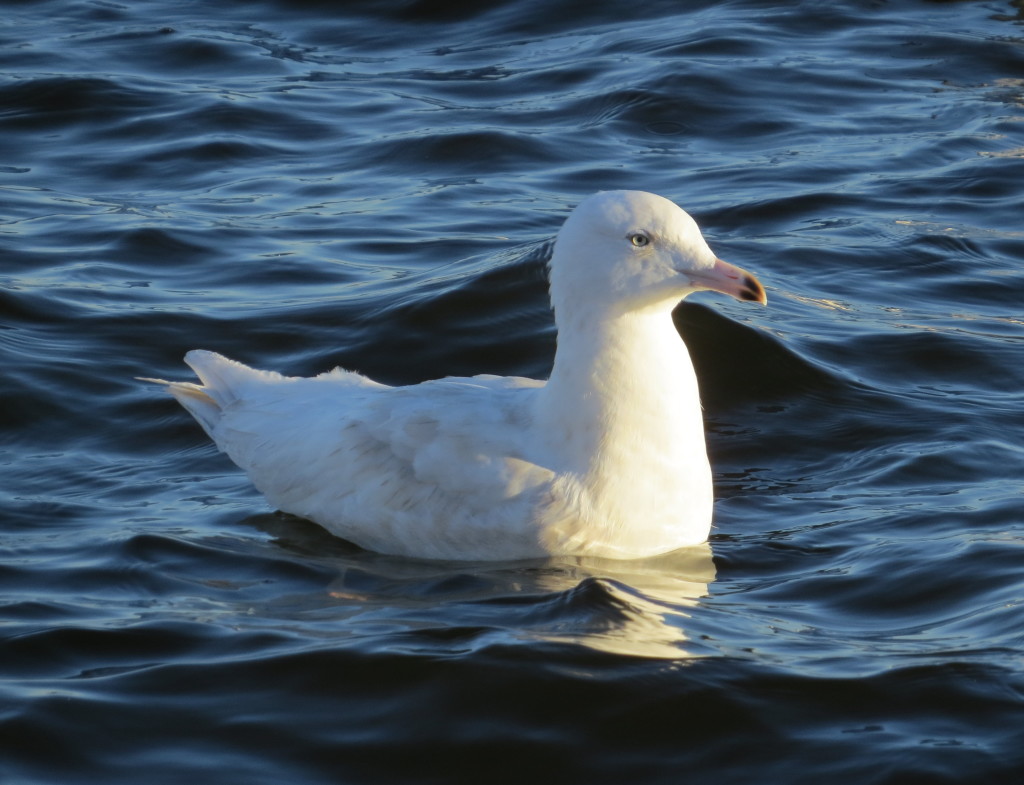
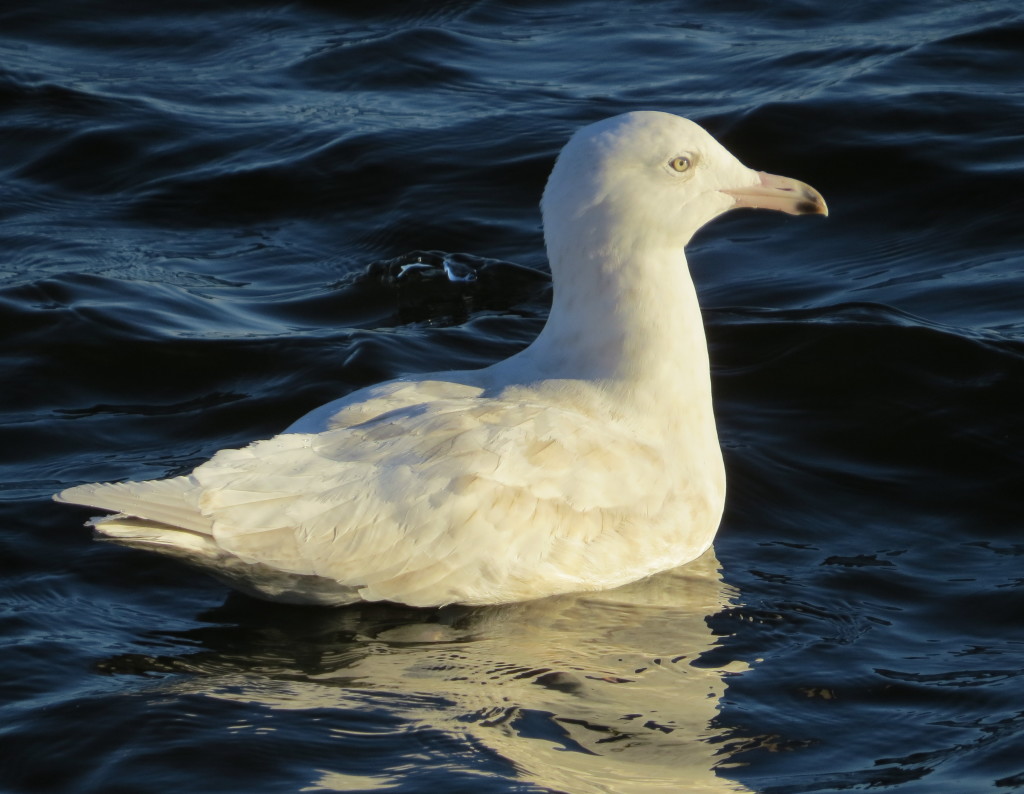 With the Glacous, I now had all three hoped-for lifers and got all my northern Gulls in one tidy outing. The only thing left to do was to photograph my favorite of the three lifers, the adult Great Black-backed Gull, a stand-out bird.
With the Glacous, I now had all three hoped-for lifers and got all my northern Gulls in one tidy outing. The only thing left to do was to photograph my favorite of the three lifers, the adult Great Black-backed Gull, a stand-out bird.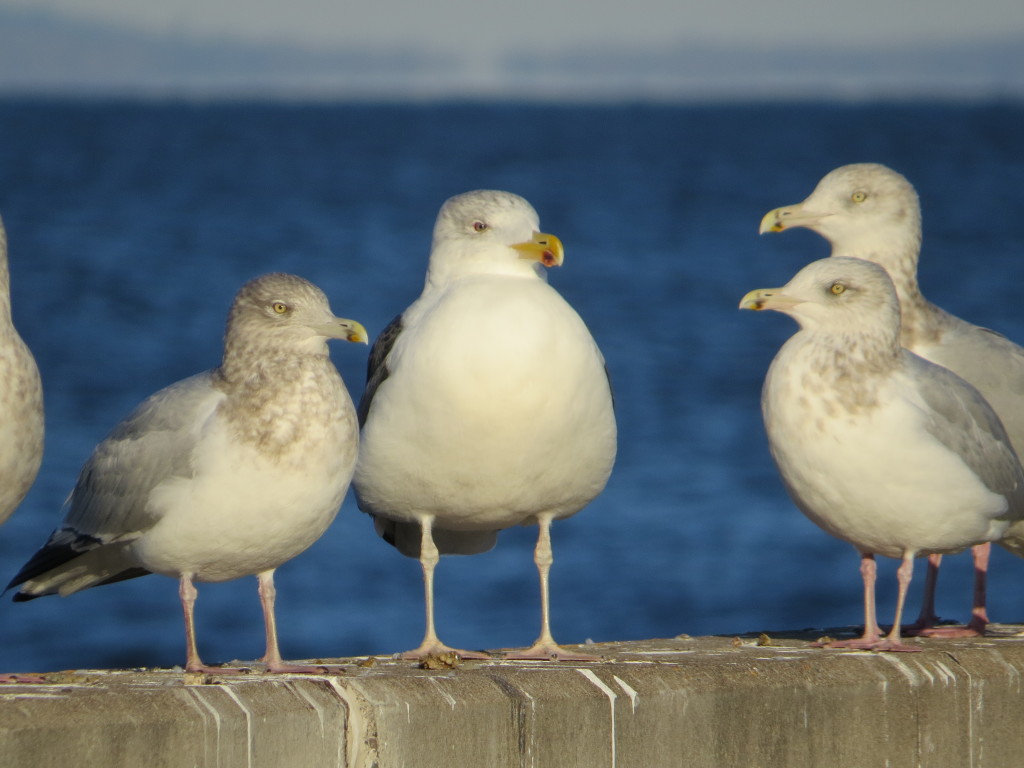
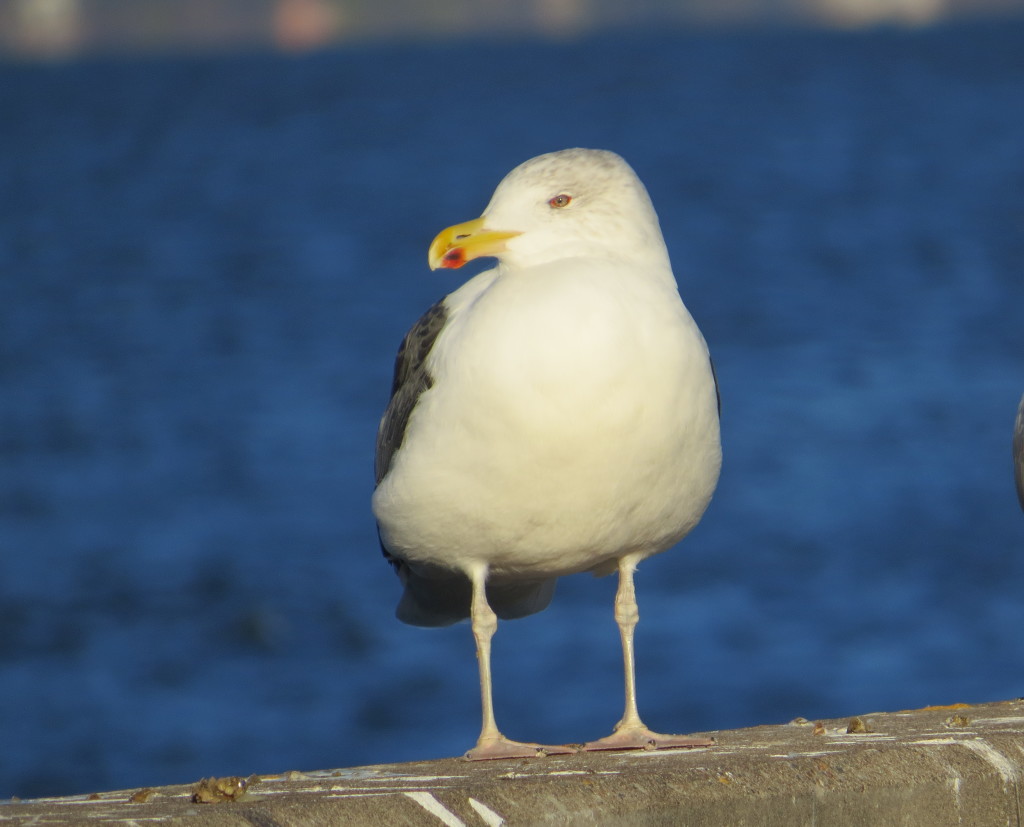
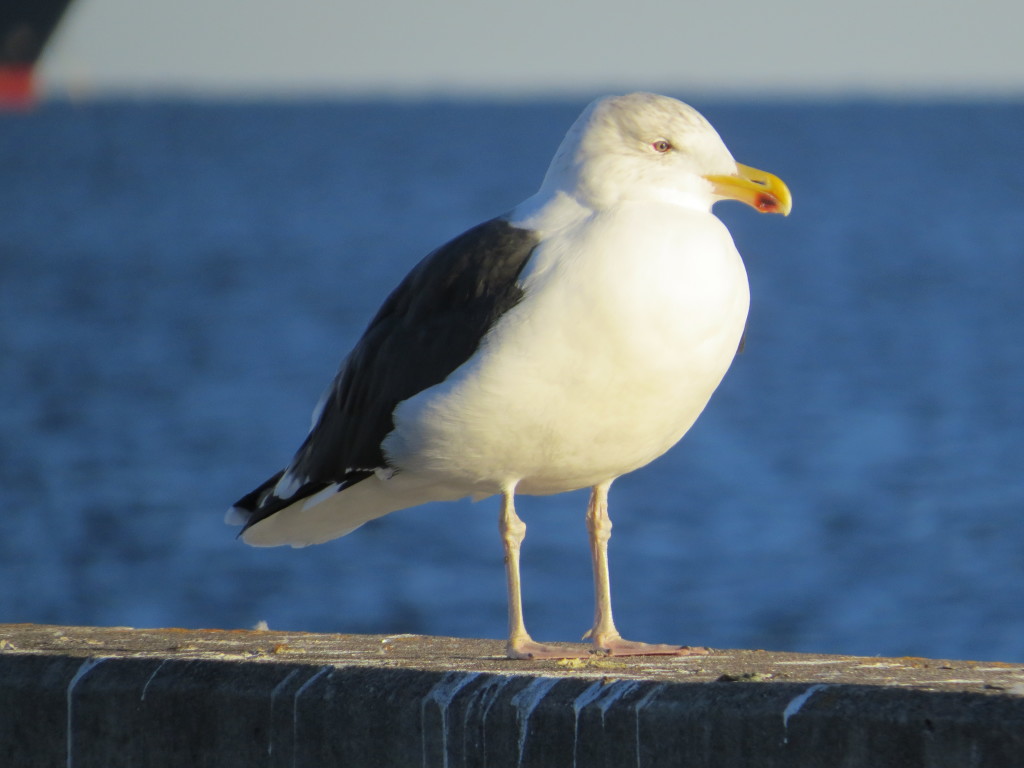
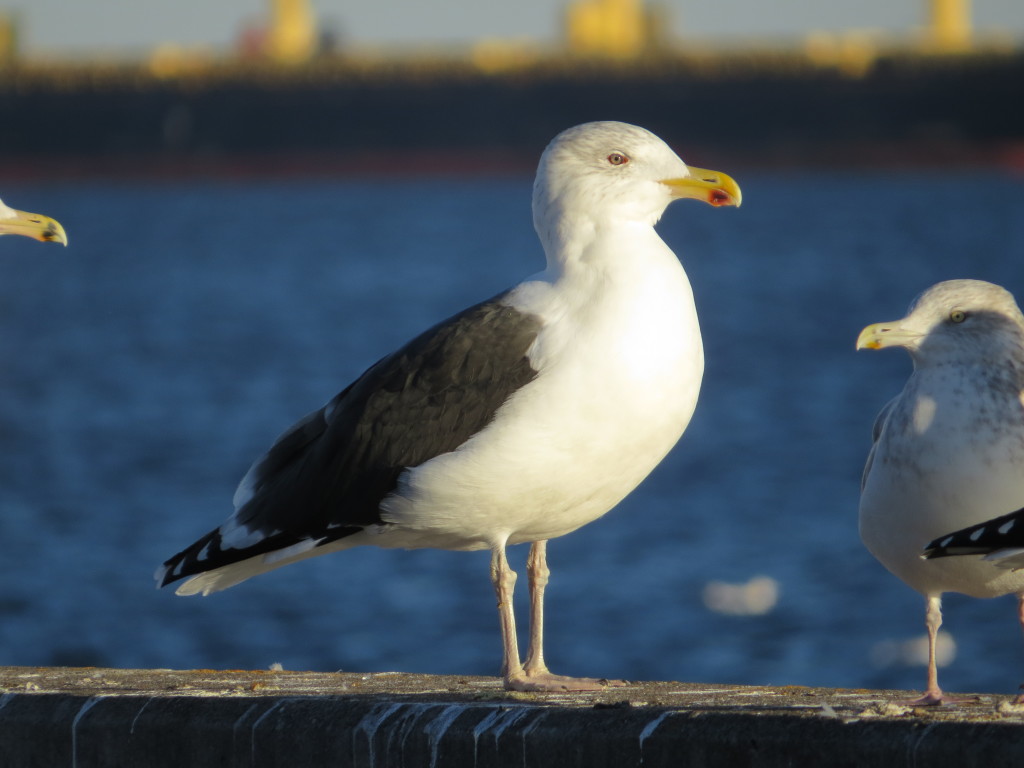
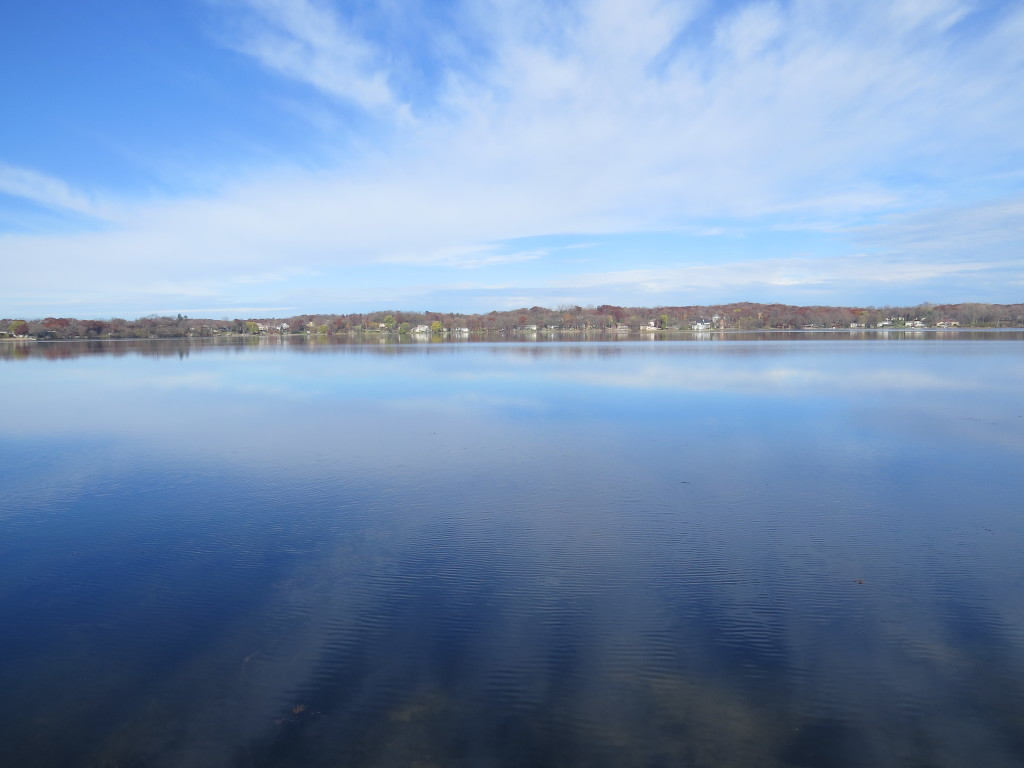 I drove along the west shore of the lake and pulled into a boat launch to scan the waters. Right away I saw a binocular-clad gentleman loading a spotting scope into a shiny Prius–this birder could be spotted a mile away. I asked him if he saw the duck. He told me no and said he’d missed on it multiple times. Odd, I thought, as I recalled the duck being reported every single day for the better part of a week. After this exchange, he and I both headed to Orchard Lake Park on the south end of the lake where people had said was the best place from which to see the Scoter. He had the lead as I followed his car into the parking lot. Rather than parking in a stall, he faced his vehicle directly at the water. I parked, looked at the water and instantly saw a distant, giant, black-and-white blob that had Surf Scoter GISS written all over it. Before I could get my binoculars up to verify, the other birder, who never left his car, turned around after 30 seconds and drove out of the park! My desire to look at my Surf Scoter lifer was suddenly replaced by the fear that this guy might have, somehow, missed it. Was it diving when he looked? Did he not recognize this juvenile form of this species? Did he see it, get his tic, and just peel out? Even if the guy was just a lister, who doesn’t spend at least a couple minutes enjoying looking at an ocean-going Scoter in MINNESOTA? I panicked. I hesitated. Do I race after him on foot and pound on his trunk? Do I hop in my car and chase him down? You can’t save them all, I guess. Oh, well. Let’s have a look at that Surf Scoter…
I drove along the west shore of the lake and pulled into a boat launch to scan the waters. Right away I saw a binocular-clad gentleman loading a spotting scope into a shiny Prius–this birder could be spotted a mile away. I asked him if he saw the duck. He told me no and said he’d missed on it multiple times. Odd, I thought, as I recalled the duck being reported every single day for the better part of a week. After this exchange, he and I both headed to Orchard Lake Park on the south end of the lake where people had said was the best place from which to see the Scoter. He had the lead as I followed his car into the parking lot. Rather than parking in a stall, he faced his vehicle directly at the water. I parked, looked at the water and instantly saw a distant, giant, black-and-white blob that had Surf Scoter GISS written all over it. Before I could get my binoculars up to verify, the other birder, who never left his car, turned around after 30 seconds and drove out of the park! My desire to look at my Surf Scoter lifer was suddenly replaced by the fear that this guy might have, somehow, missed it. Was it diving when he looked? Did he not recognize this juvenile form of this species? Did he see it, get his tic, and just peel out? Even if the guy was just a lister, who doesn’t spend at least a couple minutes enjoying looking at an ocean-going Scoter in MINNESOTA? I panicked. I hesitated. Do I race after him on foot and pound on his trunk? Do I hop in my car and chase him down? You can’t save them all, I guess. Oh, well. Let’s have a look at that Surf Scoter…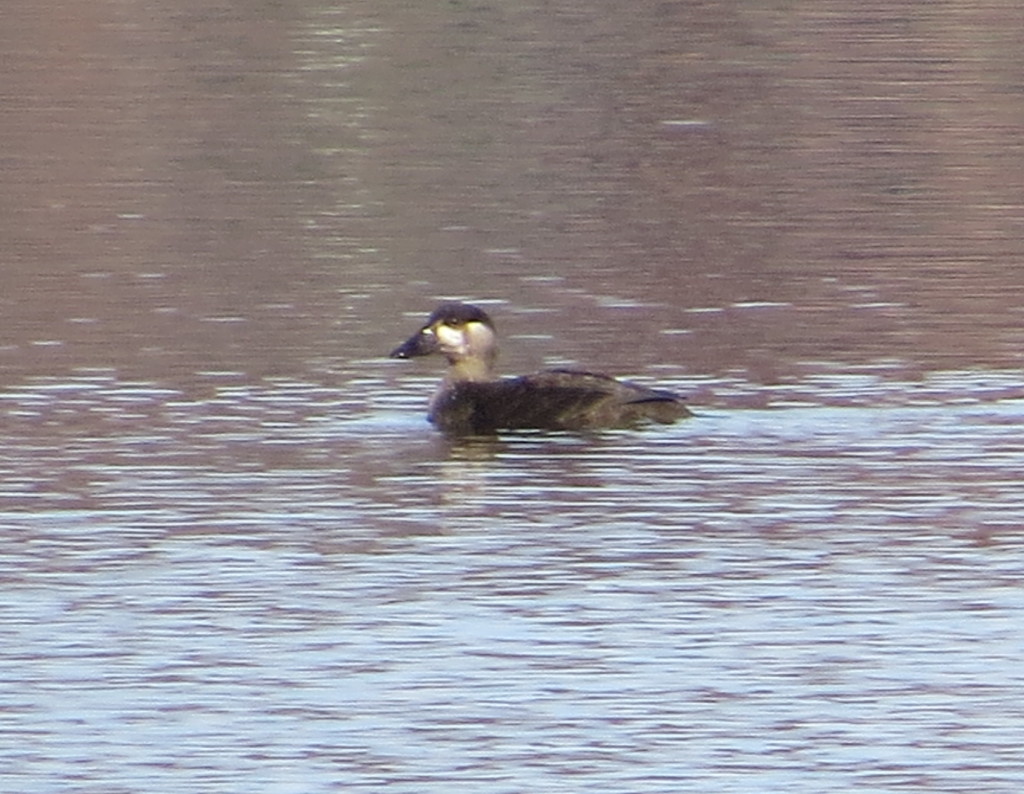 This is now my fifth species of sea duck in Minnesota with White-winged Scoter, Harlequin Duck, Common Eider, and Long-tailed Duck making up the others. I kind of prefer my sea ducks on the turbulent, cold waters of Lake Superior on a gray day. That kind of backdrop adds to the mystique and allure of sea ducks. Seeing one on a placid metro lake reflecting lingering fall colors on a 72° day is just kind of so-so.
This is now my fifth species of sea duck in Minnesota with White-winged Scoter, Harlequin Duck, Common Eider, and Long-tailed Duck making up the others. I kind of prefer my sea ducks on the turbulent, cold waters of Lake Superior on a gray day. That kind of backdrop adds to the mystique and allure of sea ducks. Seeing one on a placid metro lake reflecting lingering fall colors on a 72° day is just kind of so-so.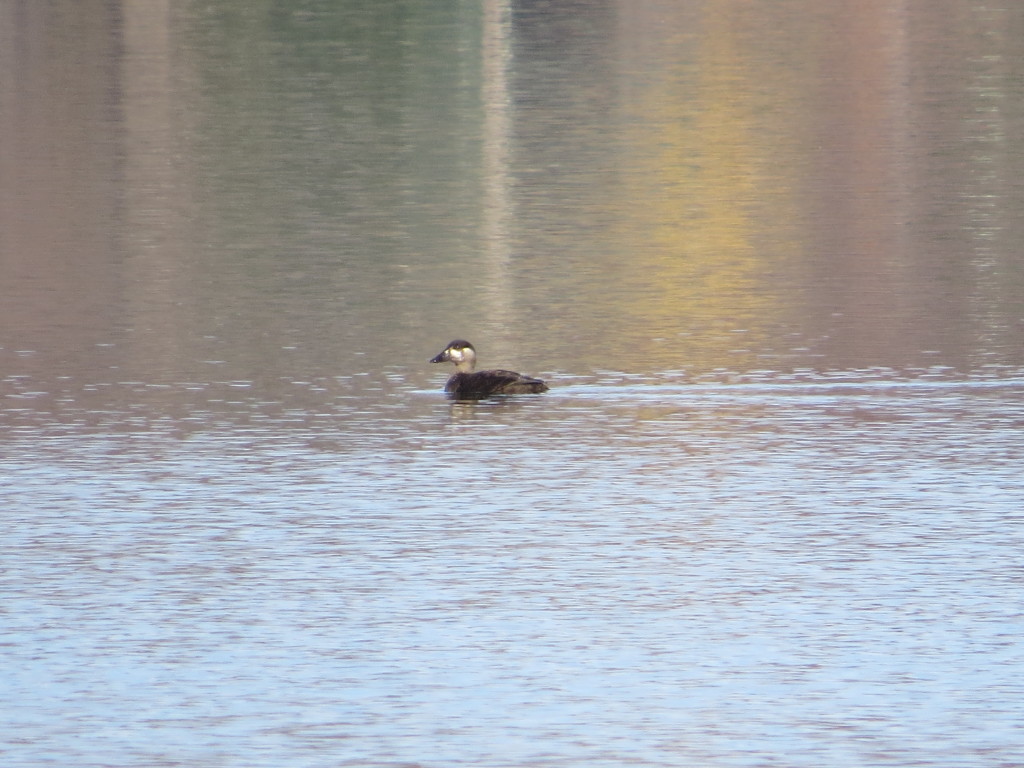 But even still. It’s cool. I mean, it’s a Scoter.
But even still. It’s cool. I mean, it’s a Scoter.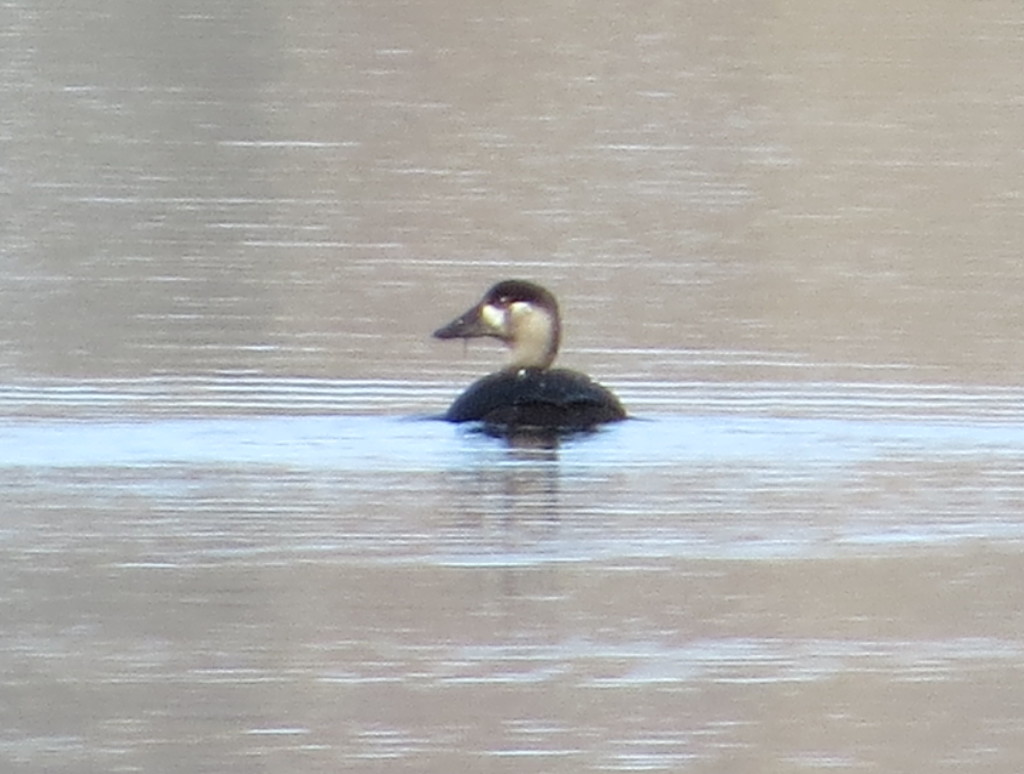
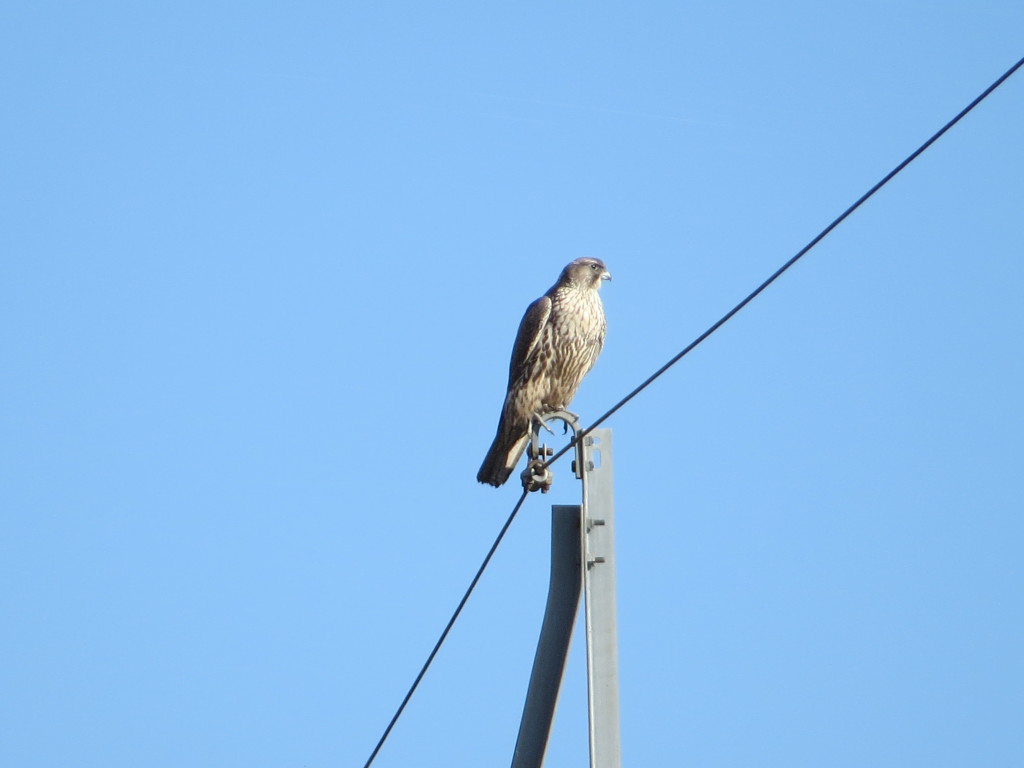
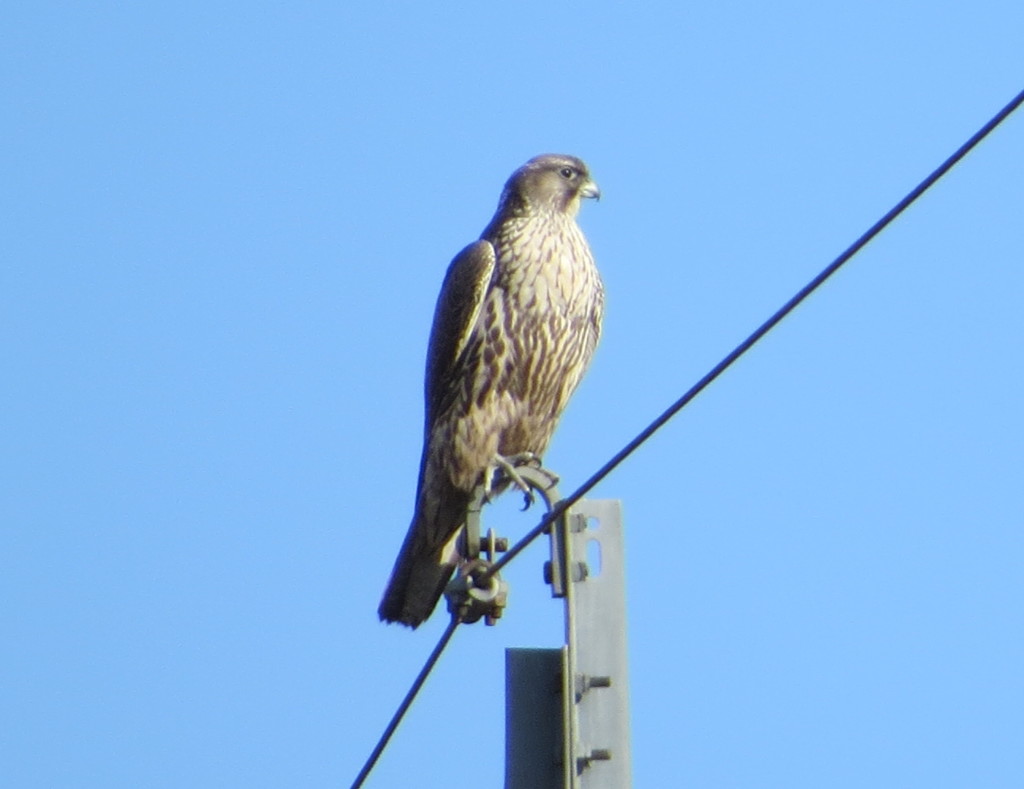
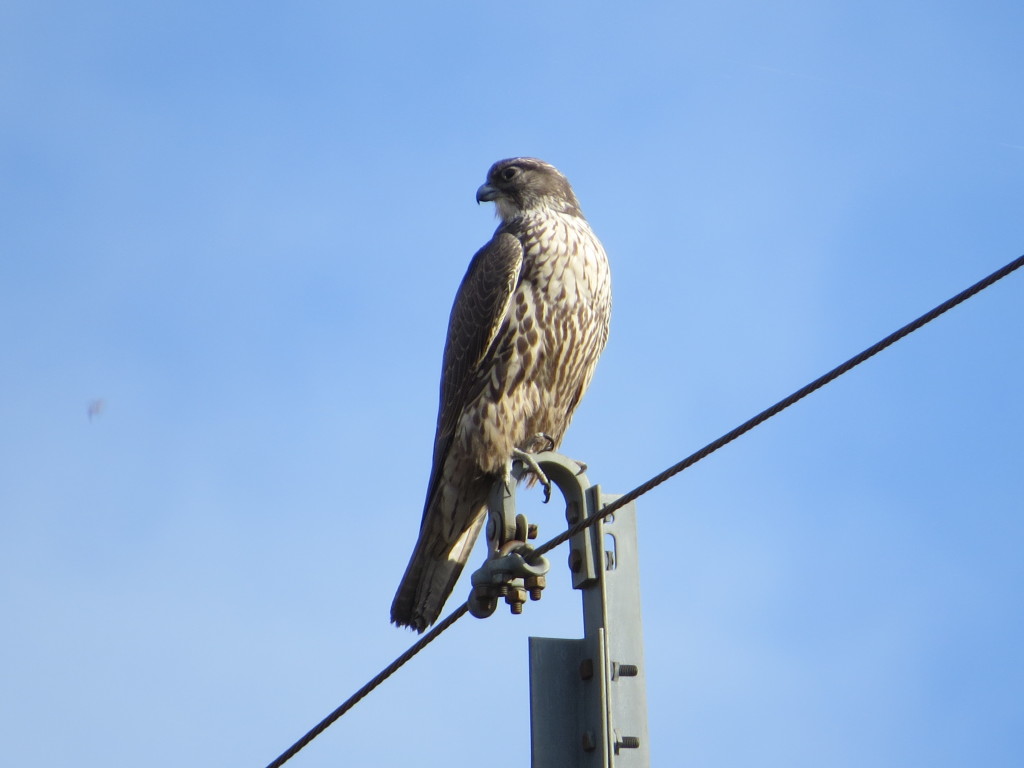
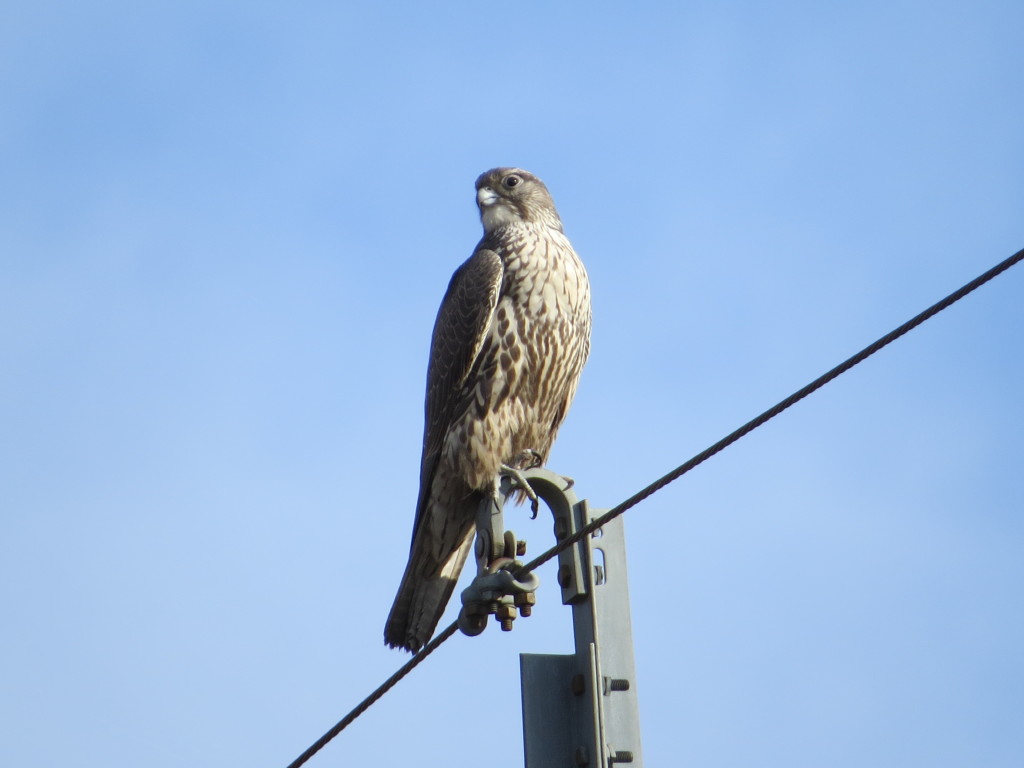
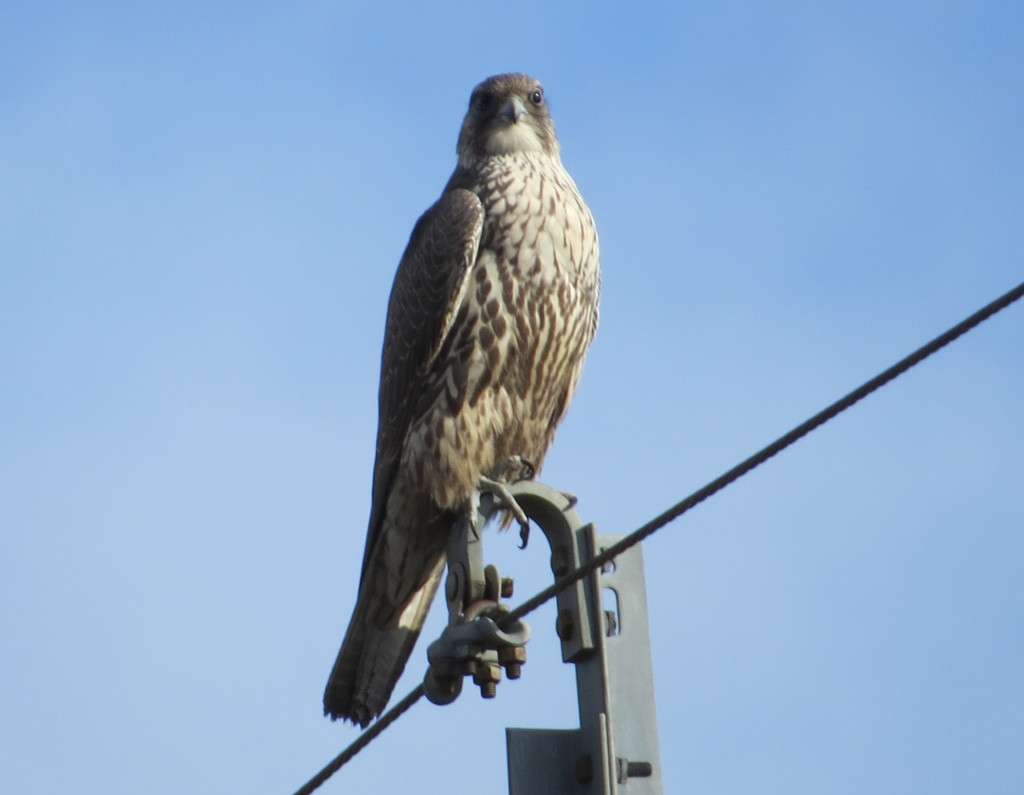 I still can’t believe I saw this bird; the adrenaline is still pumping. I thought it would be another 10 years at least before I’d get this arctic visitor on my Minnesota list (I got my lifer in WI last winter). Then I see a Gyrfalcon in my own county…and I never even knew it. I was caught off guard and completely unprepared for encountering such a rarity. It just goes to show that one can never study enough in this hobby and that even the most boring, familiar back roads can hold the monumental. So thanks, Bob, for chasing me down and pounding on my trunk.
I still can’t believe I saw this bird; the adrenaline is still pumping. I thought it would be another 10 years at least before I’d get this arctic visitor on my Minnesota list (I got my lifer in WI last winter). Then I see a Gyrfalcon in my own county…and I never even knew it. I was caught off guard and completely unprepared for encountering such a rarity. It just goes to show that one can never study enough in this hobby and that even the most boring, familiar back roads can hold the monumental. So thanks, Bob, for chasing me down and pounding on my trunk.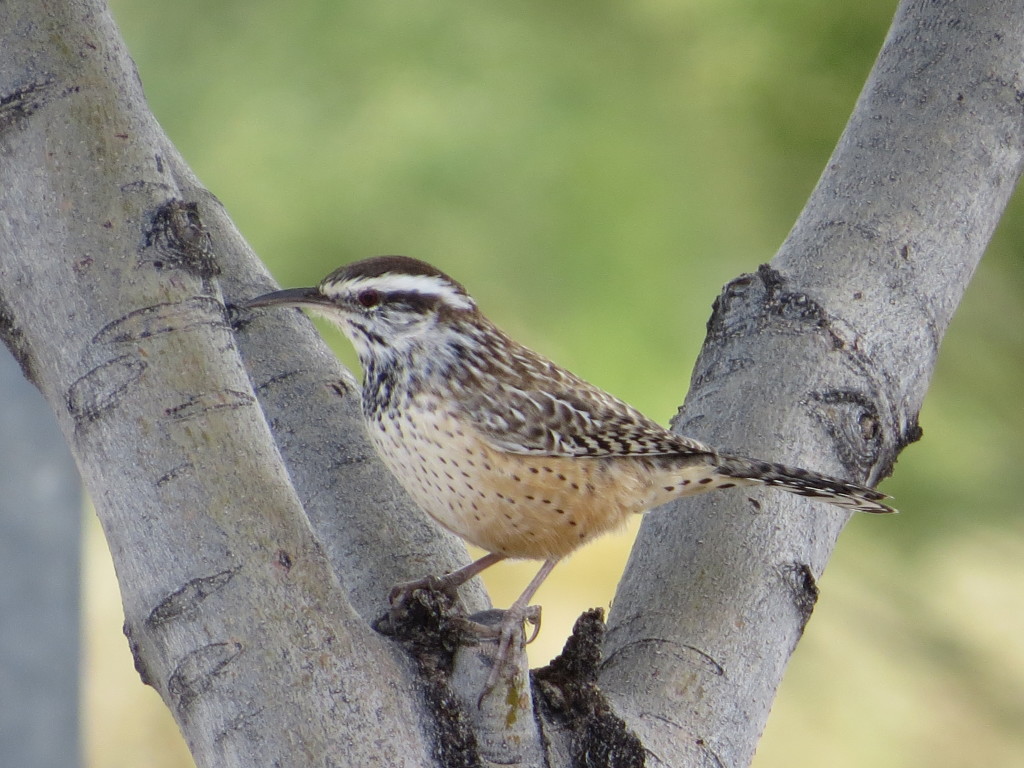
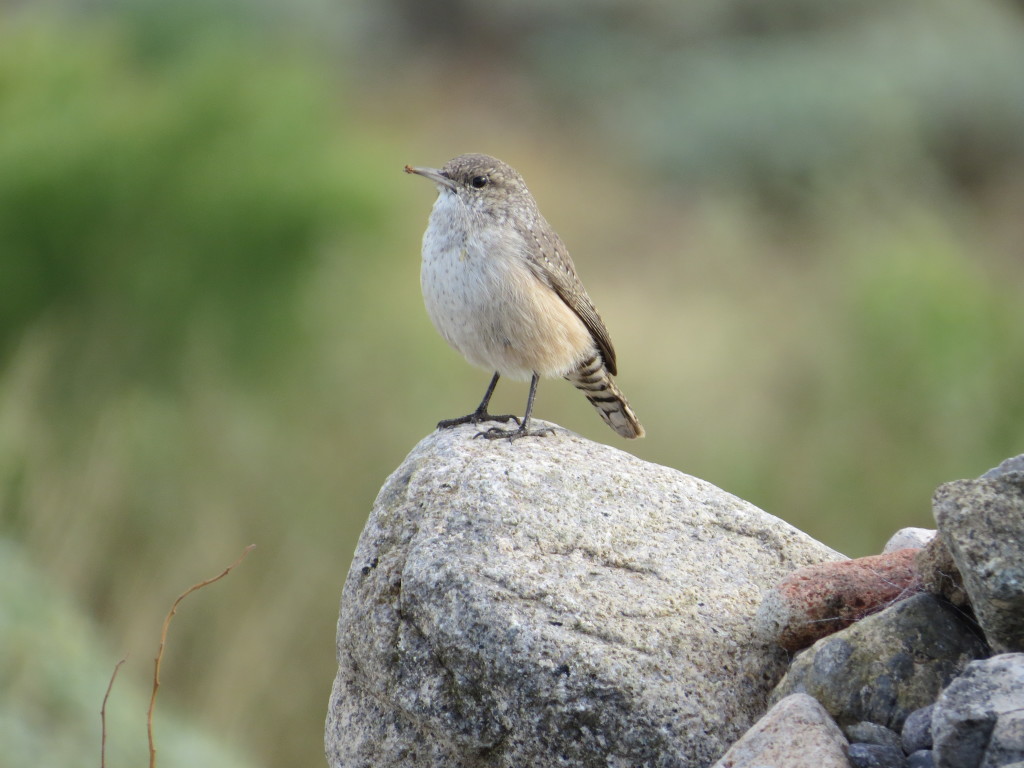 I really, really like the pot-bellied appearance of this bird. This may be my favorite photo from the trip. And is it just me, or does ROWR bear an uncanny resemblance to our 27th President?
I really, really like the pot-bellied appearance of this bird. This may be my favorite photo from the trip. And is it just me, or does ROWR bear an uncanny resemblance to our 27th President?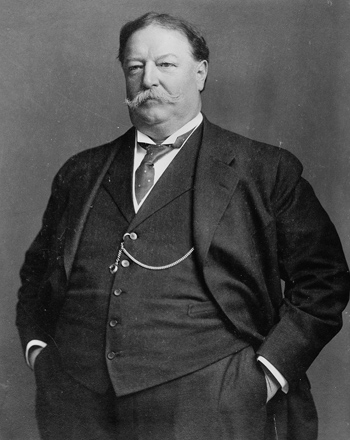
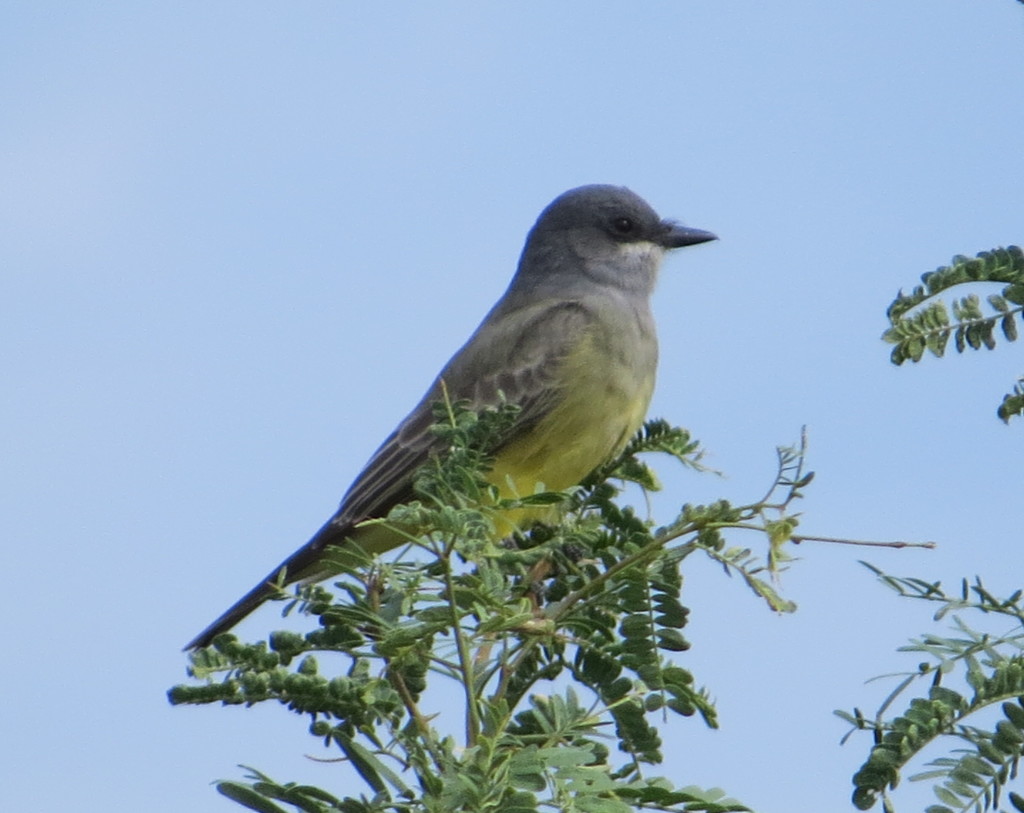
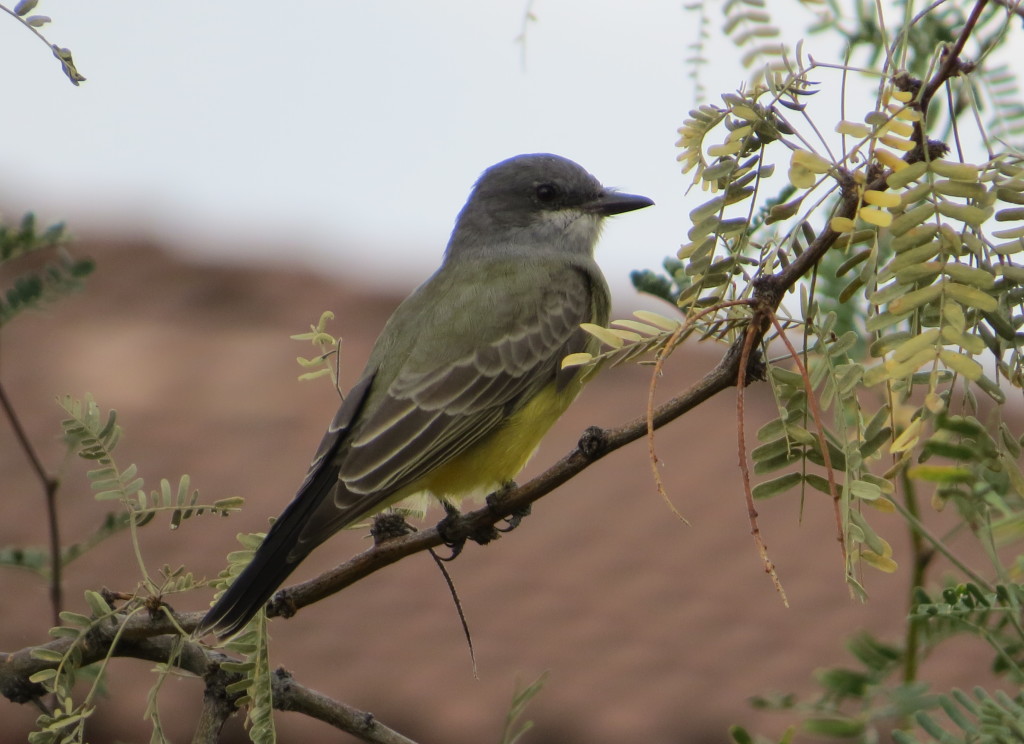 High on two completely unexpected lifers, I continued to scope out the fun birds around the hotel, not the least of which were numerous Lark Sparrows. I have not seen enough Lark Sparrows yet.
High on two completely unexpected lifers, I continued to scope out the fun birds around the hotel, not the least of which were numerous Lark Sparrows. I have not seen enough Lark Sparrows yet.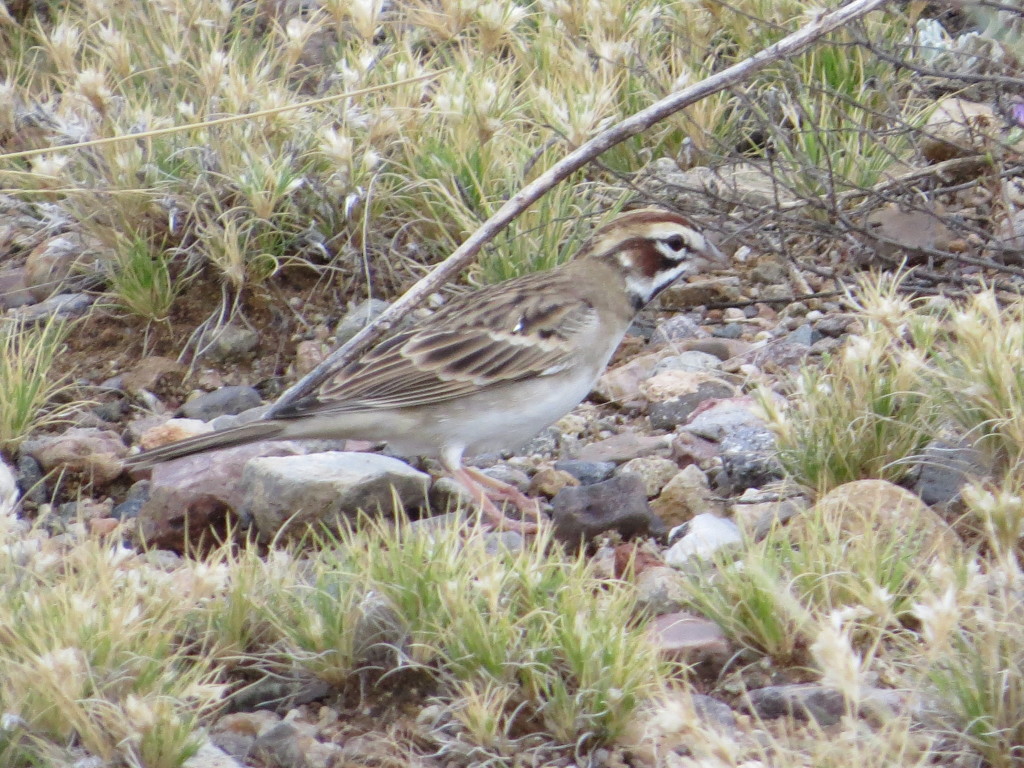 What I have seen plenty of in recent years are Say’s Phoebes, and I already have plenty of photos to prove it. But these birds just know how to pose…
What I have seen plenty of in recent years are Say’s Phoebes, and I already have plenty of photos to prove it. But these birds just know how to pose…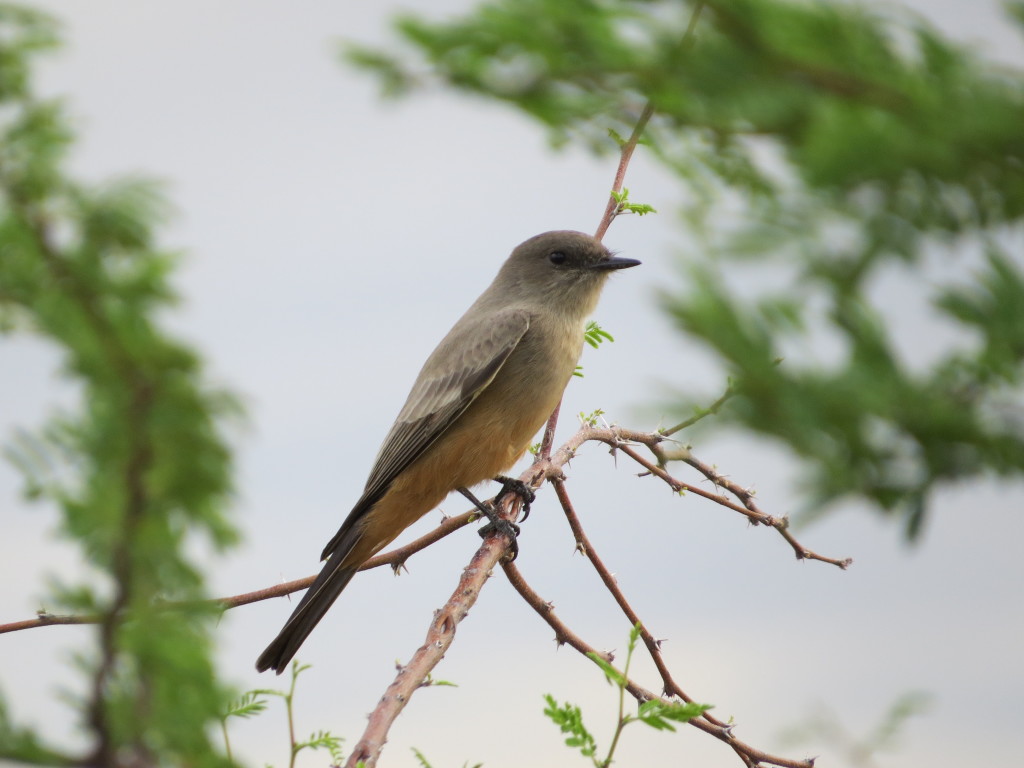 It was also fun to see a prickly-looking Curve-billed Thrasher. I’m glad they didn’t choose him for state bird.
It was also fun to see a prickly-looking Curve-billed Thrasher. I’m glad they didn’t choose him for state bird.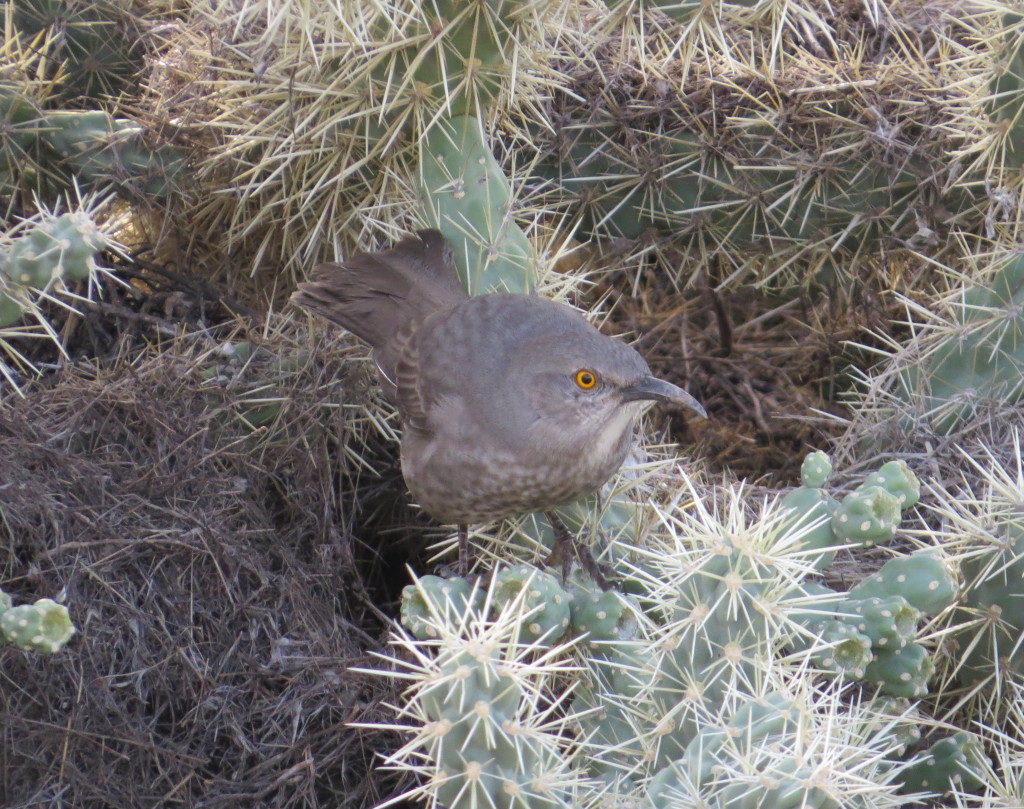
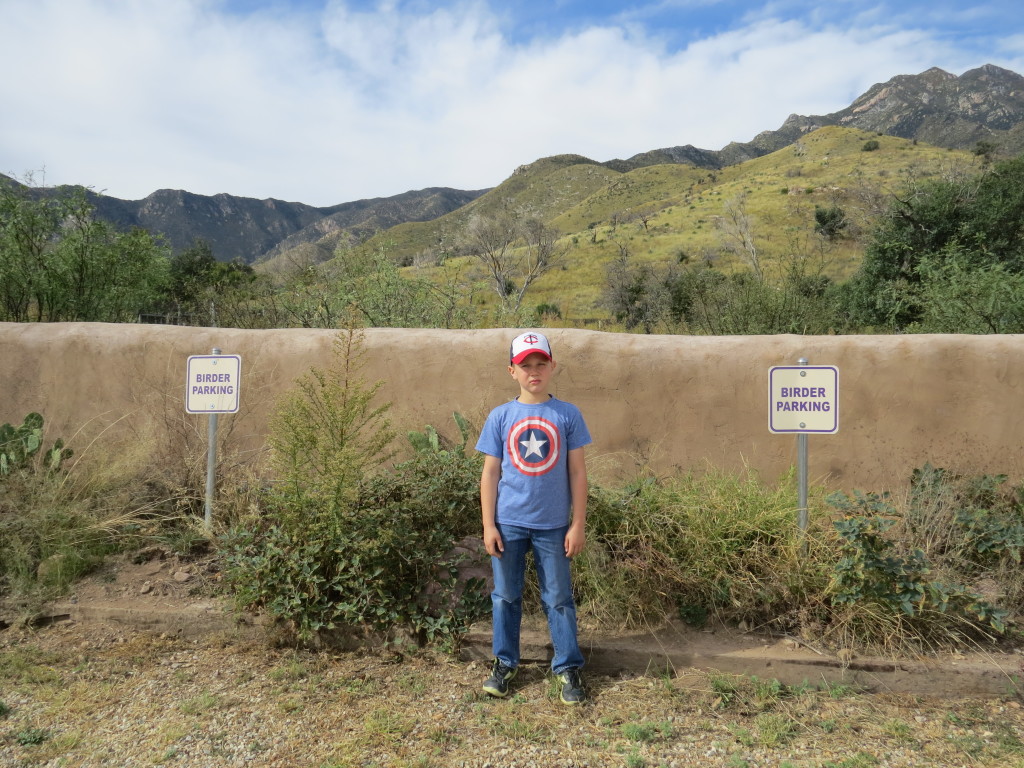
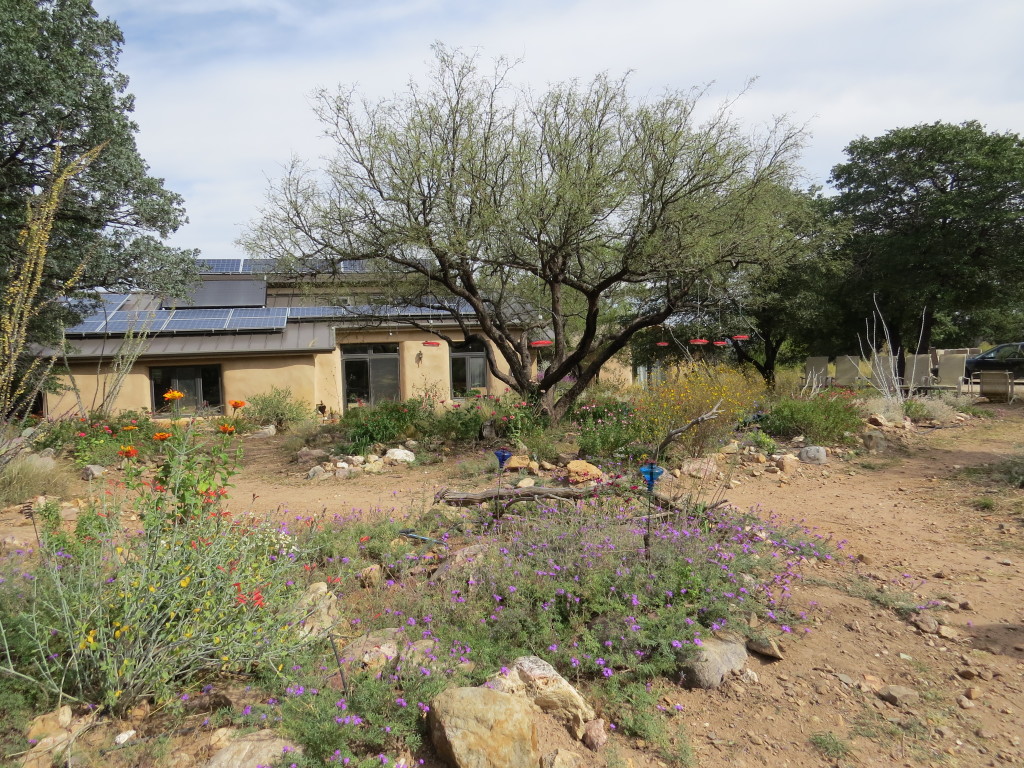 We got some great views of some fun birds while we rested from our recent hike in Hunter Canyon. It was nice to finally see a much nicer Canyon Towee than the haggard one I saw in Florida Canyon last spring. This bird was a lifer for Evan.
We got some great views of some fun birds while we rested from our recent hike in Hunter Canyon. It was nice to finally see a much nicer Canyon Towee than the haggard one I saw in Florida Canyon last spring. This bird was a lifer for Evan.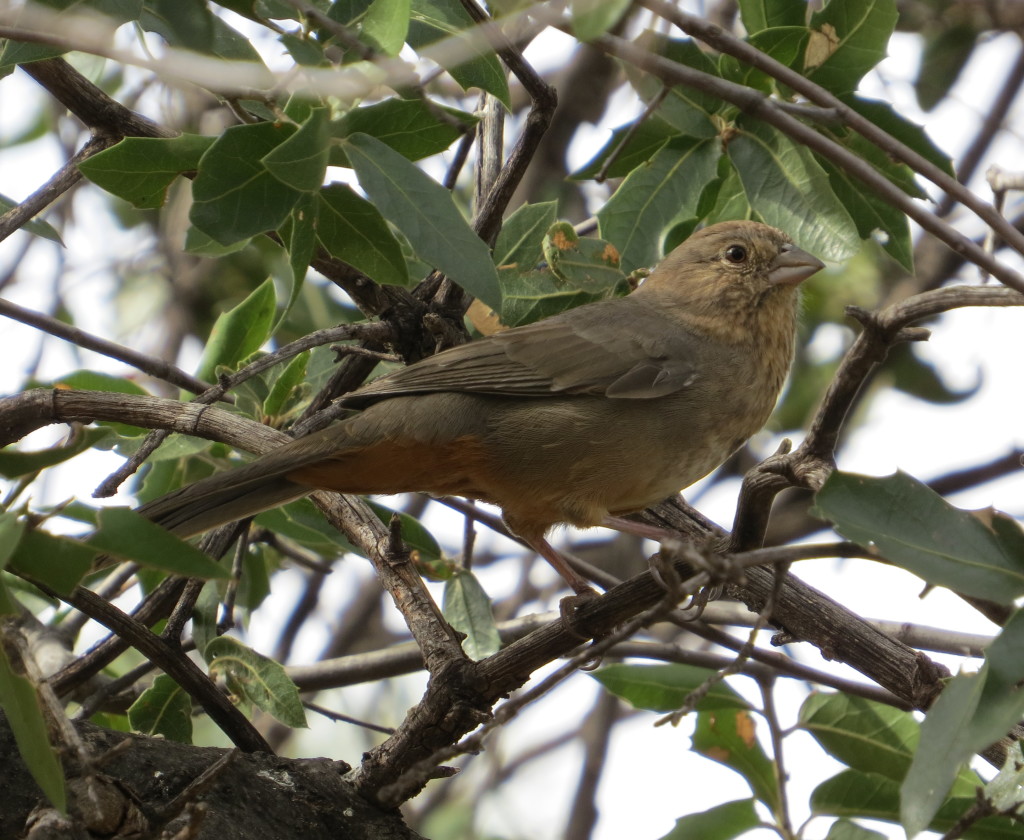 We also got to see another Scott’s Oriole (female), but this one did not show itself well either.
We also got to see another Scott’s Oriole (female), but this one did not show itself well either.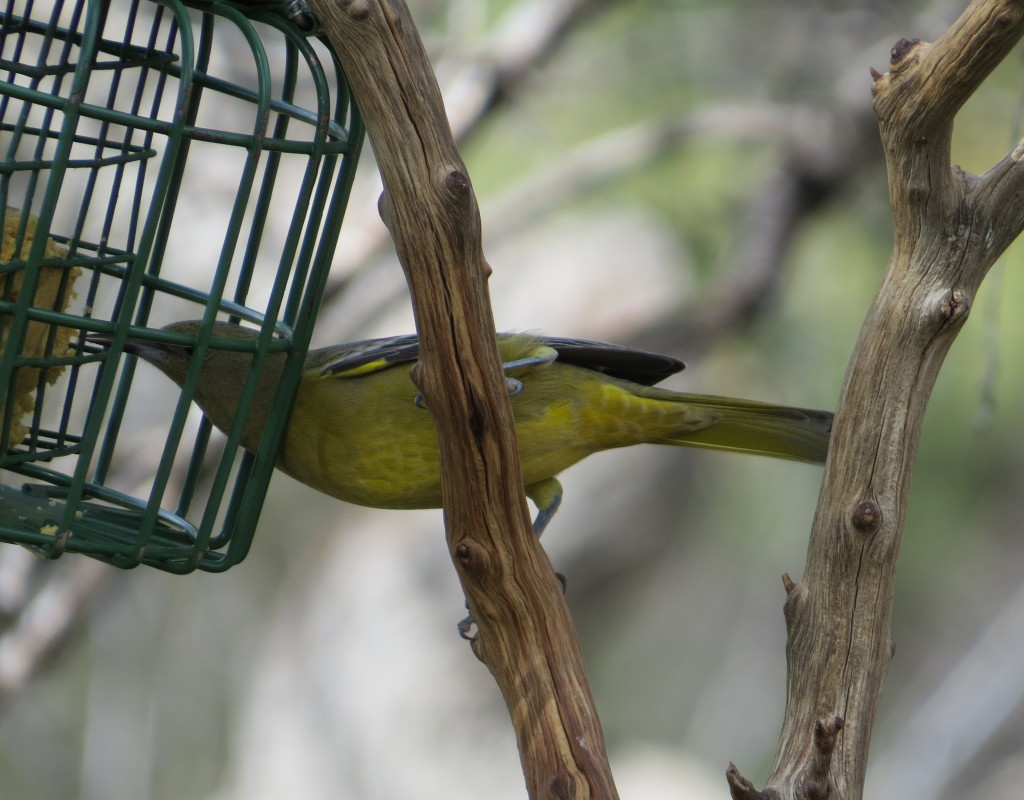 Seeing a lifer Dark-eyed Junco sub-species, like this Gray-headed variety, is always fun.
Seeing a lifer Dark-eyed Junco sub-species, like this Gray-headed variety, is always fun.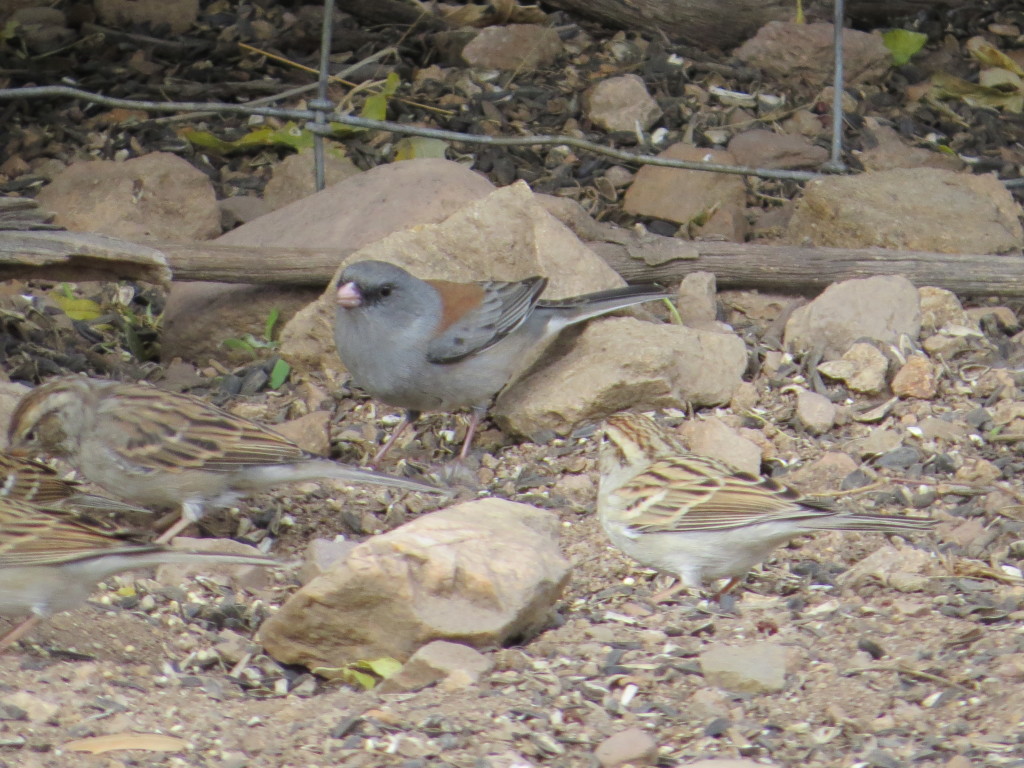 Acorn Woodpeckers were a common sight at all our stops in the Huachucas. At least at Mary Jo’s feeders, you can get a good photo while sitting down–a great combo.
Acorn Woodpeckers were a common sight at all our stops in the Huachucas. At least at Mary Jo’s feeders, you can get a good photo while sitting down–a great combo.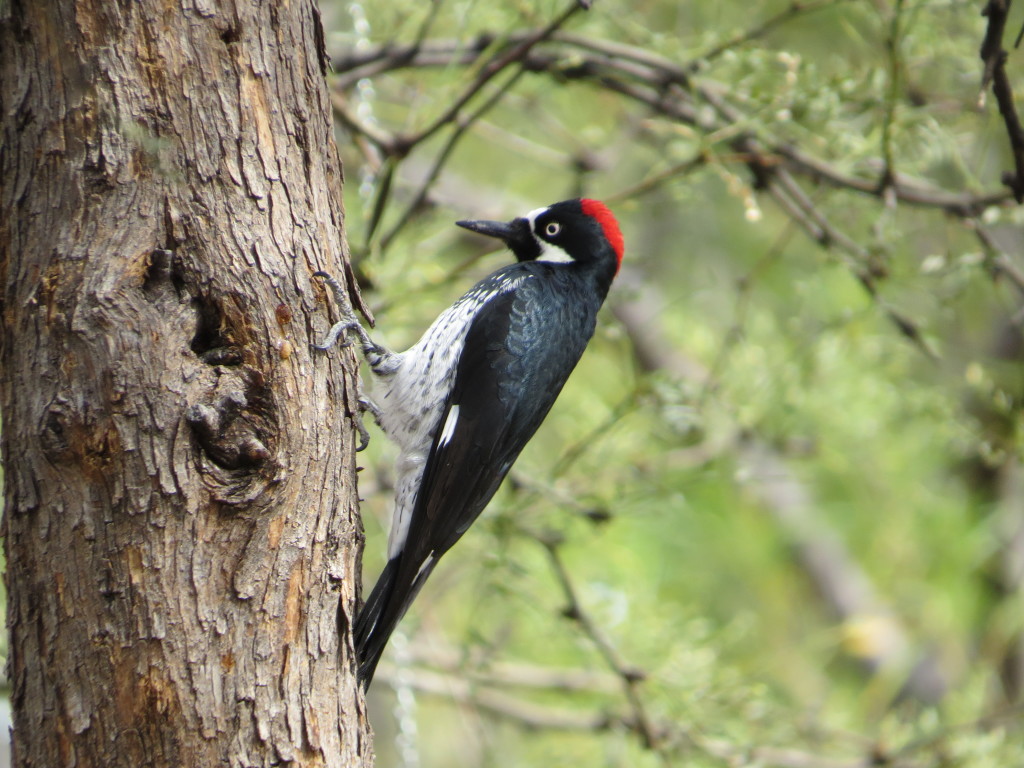
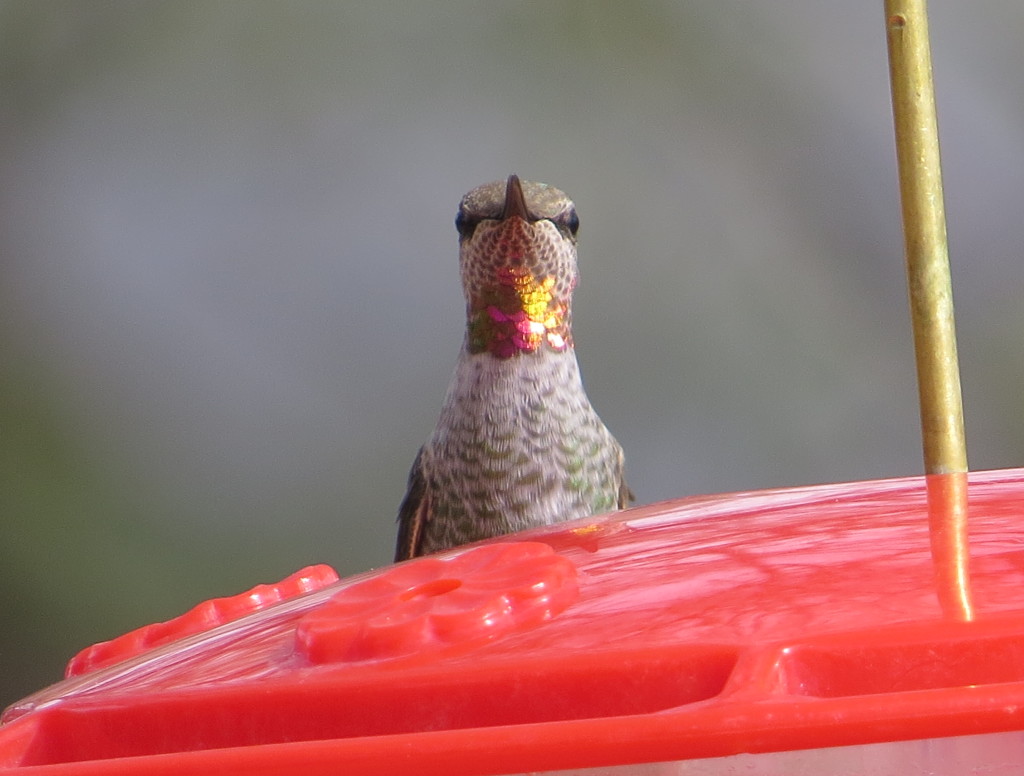 Evan also got his Magnificent Hummingbird lifer with the help of owner Mary Jo who seems to constantly monitor the bird activity in her yard. Tommy and Gordon were watching a different set of Hummingbird feeders and had seen one of the reported Lucifer Hummingbirds. So Evan and I joined them and watched those feeders for a short time to see if we could get this rare Hummer too. That said, Miller Canyon was beckoning, both for what it held and for the short amount of time we had left to bird. Thankfully the Lucifer was understanding and showed up in short order. Note the thick, decurved bill.
Evan also got his Magnificent Hummingbird lifer with the help of owner Mary Jo who seems to constantly monitor the bird activity in her yard. Tommy and Gordon were watching a different set of Hummingbird feeders and had seen one of the reported Lucifer Hummingbirds. So Evan and I joined them and watched those feeders for a short time to see if we could get this rare Hummer too. That said, Miller Canyon was beckoning, both for what it held and for the short amount of time we had left to bird. Thankfully the Lucifer was understanding and showed up in short order. Note the thick, decurved bill.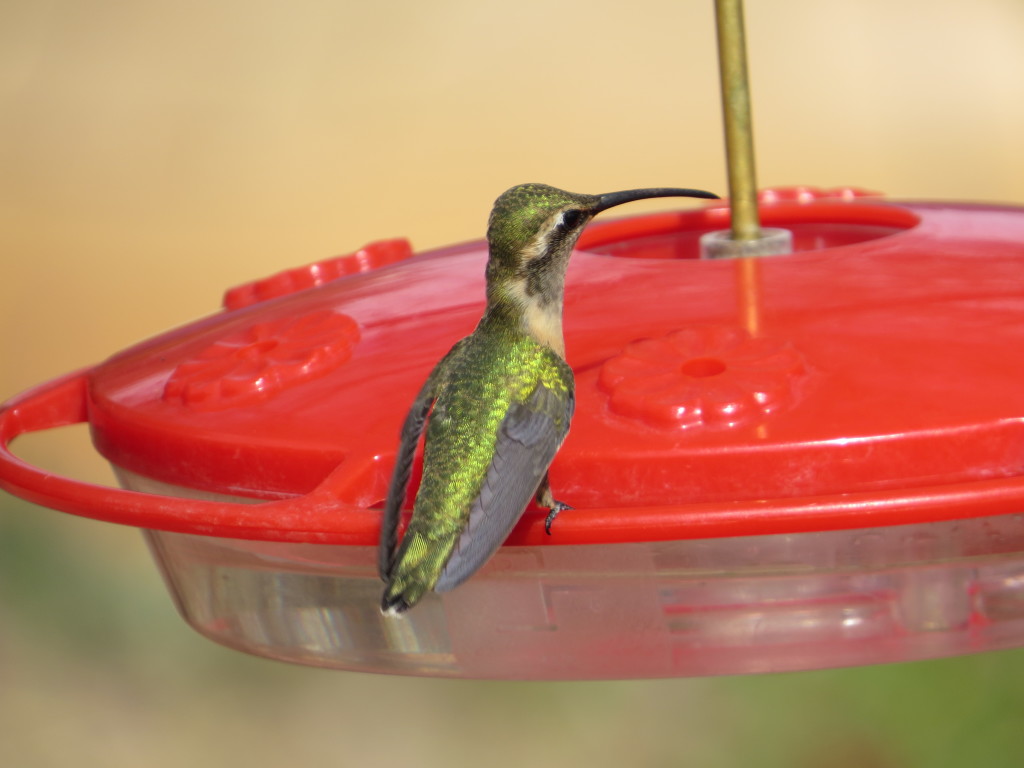
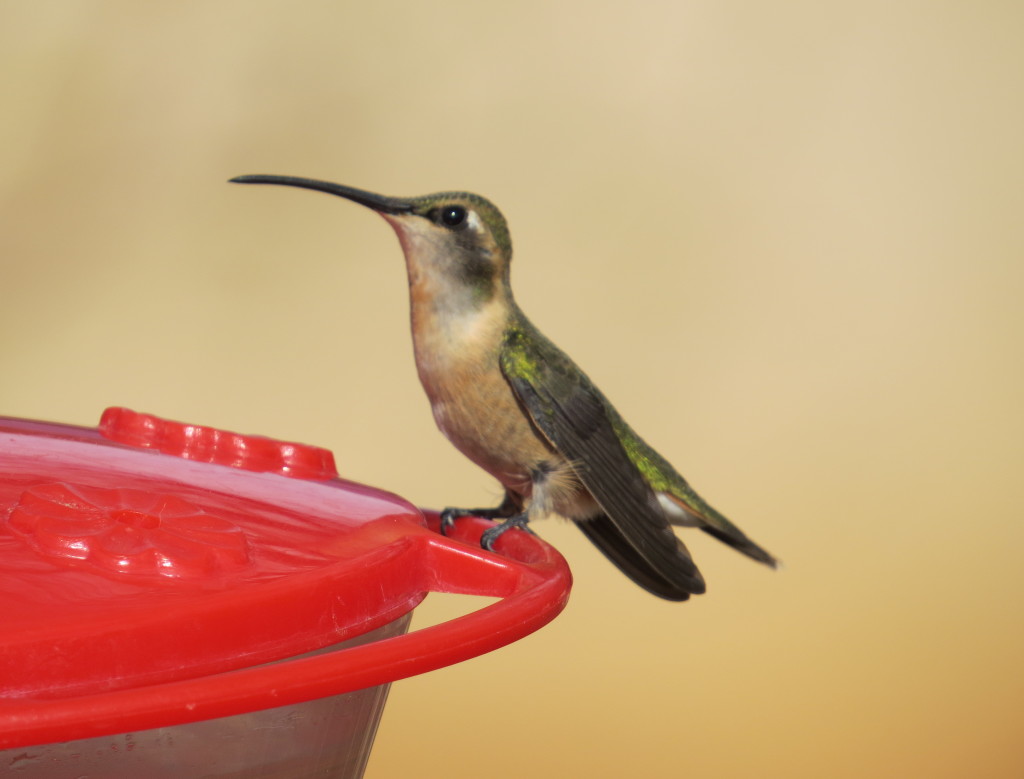 The rarity of this bird was really cool even if the plain looks of this juvenile bird were not impressive. I regretfully later found out that an adult male Lucifer had been visiting these feeders on the very day we were there. Doh!
The rarity of this bird was really cool even if the plain looks of this juvenile bird were not impressive. I regretfully later found out that an adult male Lucifer had been visiting these feeders on the very day we were there. Doh!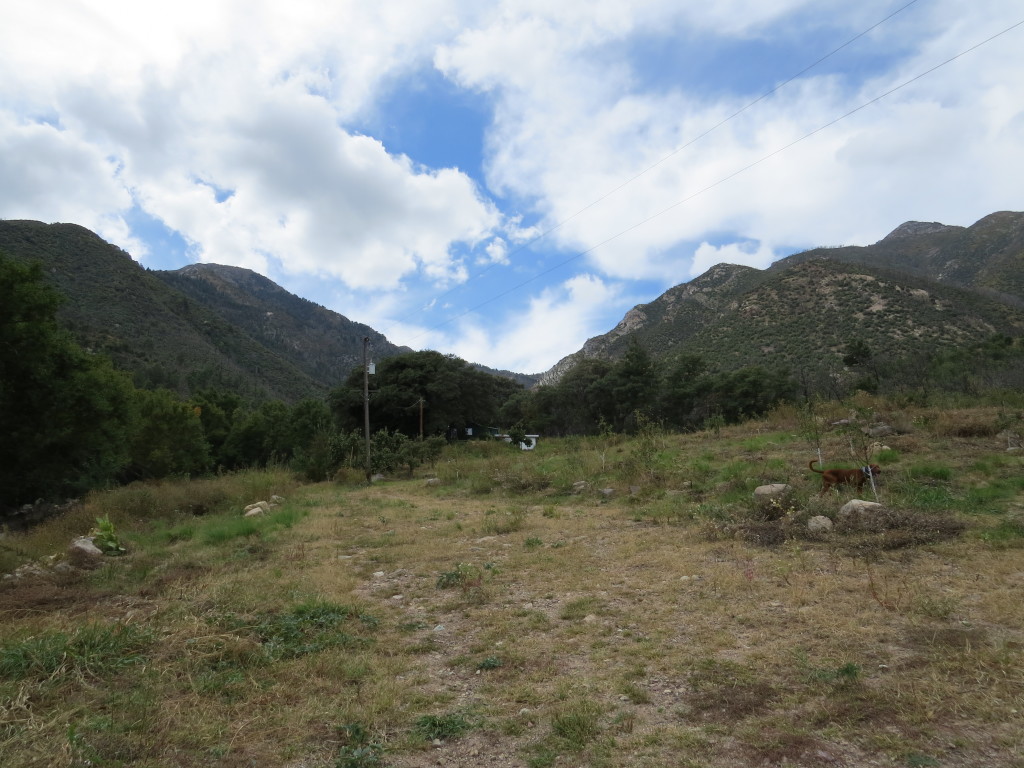
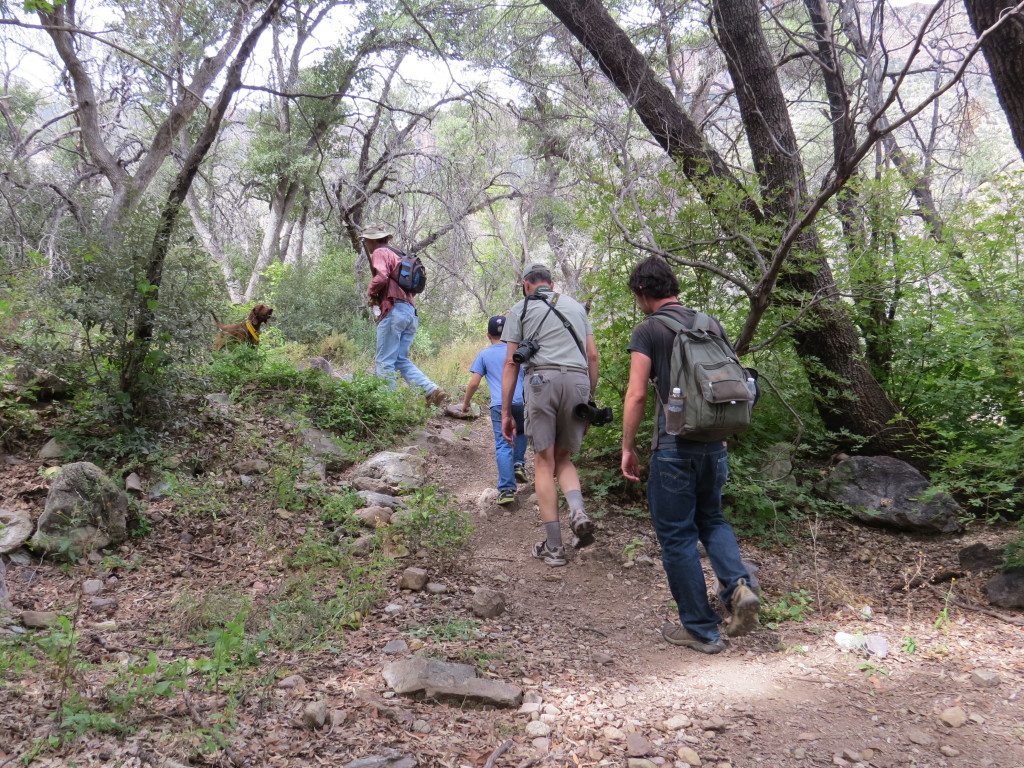
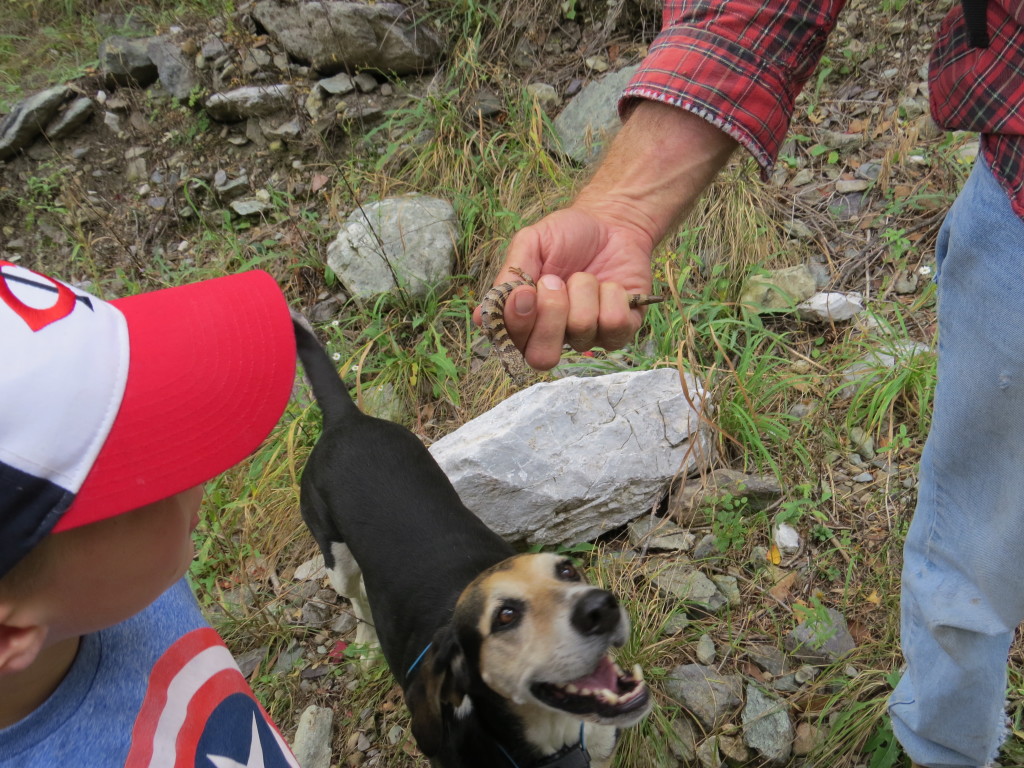 After hiking nearly a mile uphill, we finally reached Split Rock. Here there were two elderly women had been brought to this location earlier to look for the Spotted Owls. Our guide checked out the usual perches for the Owls, a family group of four birds, but none of them held anything. Then, real casually, he points to a different tree and says, “Oh, here’s one.” Sweet!
After hiking nearly a mile uphill, we finally reached Split Rock. Here there were two elderly women had been brought to this location earlier to look for the Spotted Owls. Our guide checked out the usual perches for the Owls, a family group of four birds, but none of them held anything. Then, real casually, he points to a different tree and says, “Oh, here’s one.” Sweet!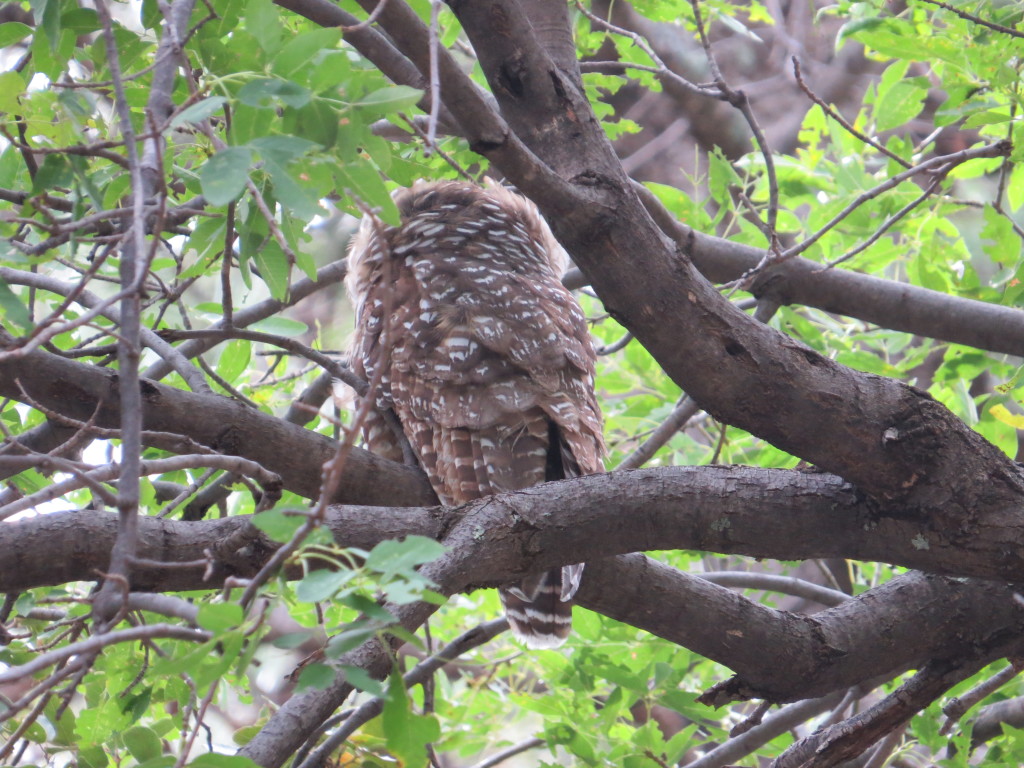
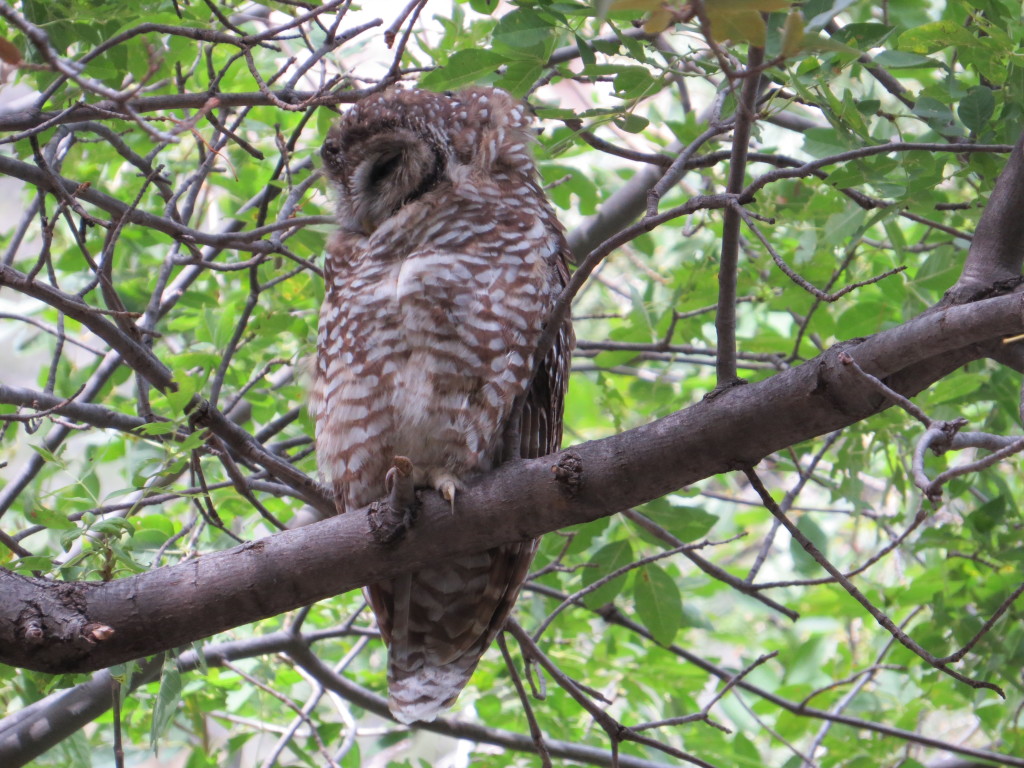 This Owl was a pretty mellow fellow, which I understand is typical for this species. It could not have cared less that we were ooing and awwing over it.
This Owl was a pretty mellow fellow, which I understand is typical for this species. It could not have cared less that we were ooing and awwing over it.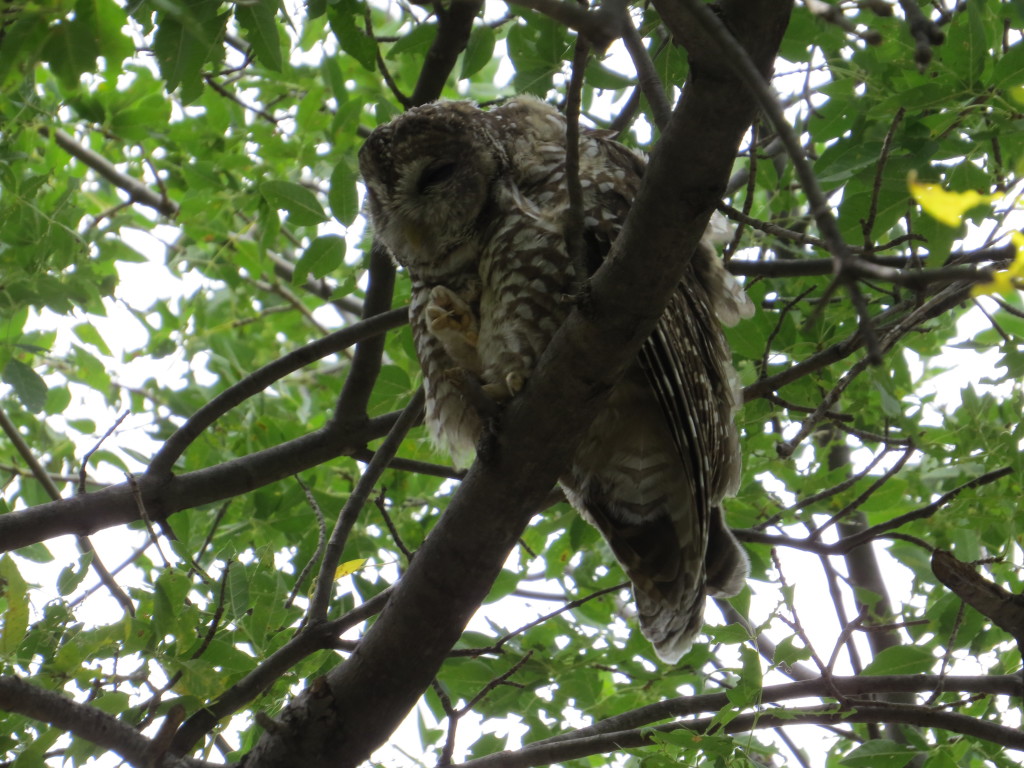
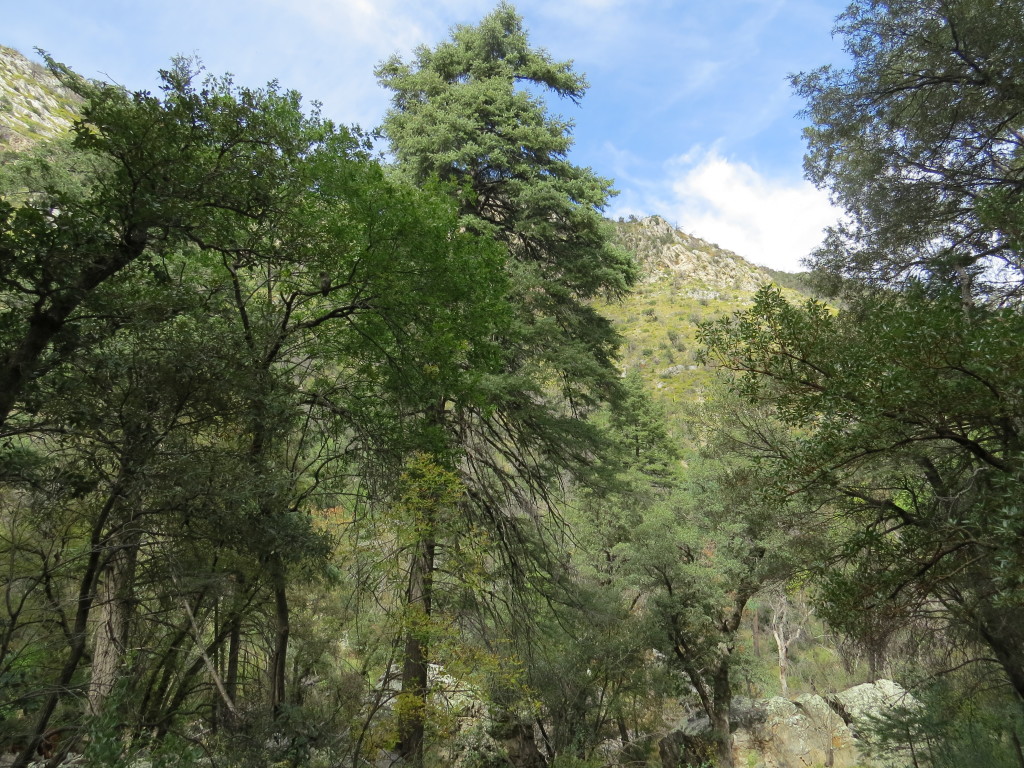 Tommy and I went a little further up the canyon hoping to spot one of the other Spotted Owls on our own which is half the fun of owling. But without any more luck, it was finally time to head back down the canyon. What a thrill it was, though, to get this prized lifer:
Tommy and I went a little further up the canyon hoping to spot one of the other Spotted Owls on our own which is half the fun of owling. But without any more luck, it was finally time to head back down the canyon. What a thrill it was, though, to get this prized lifer: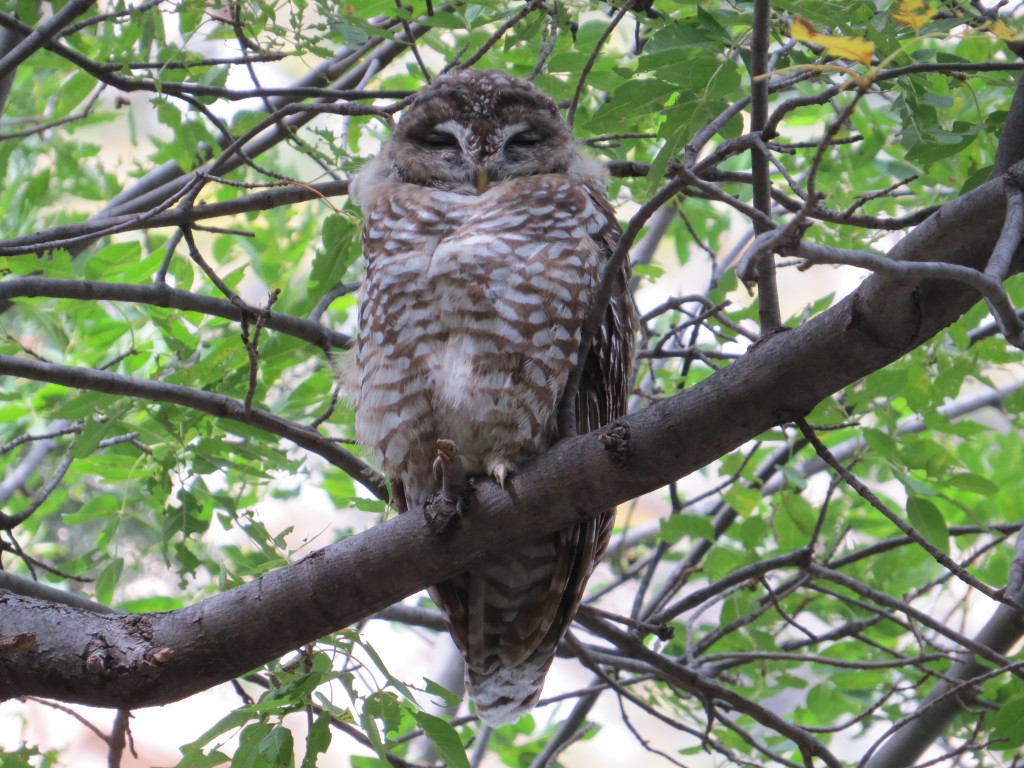
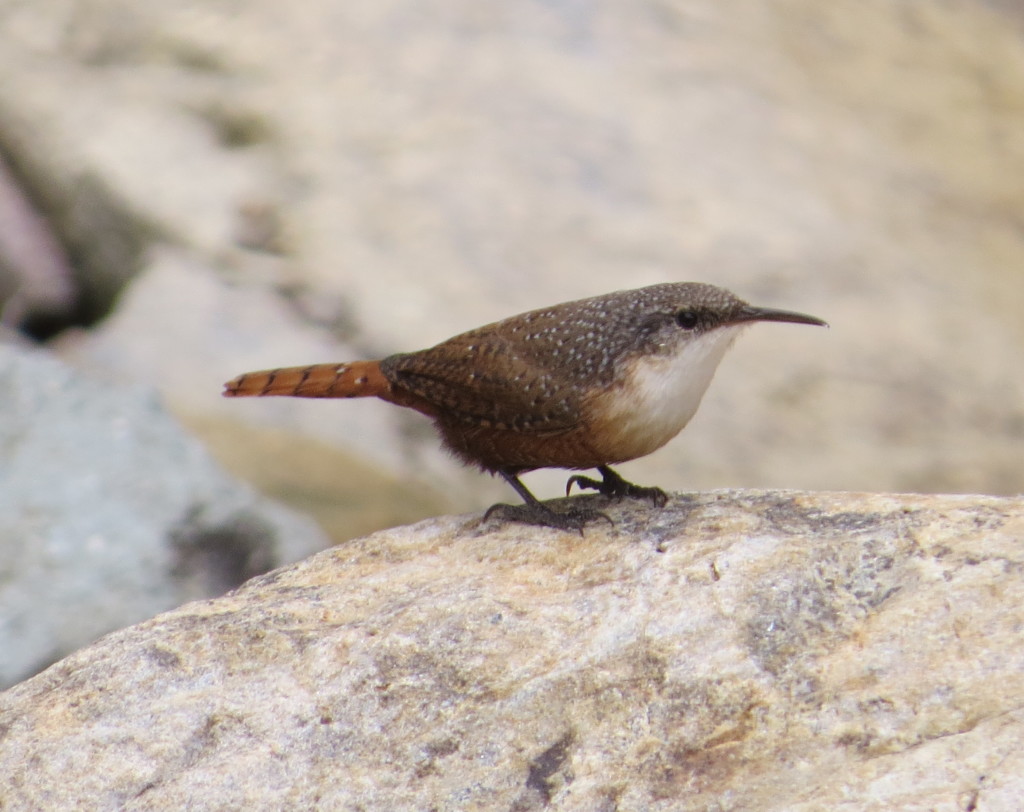
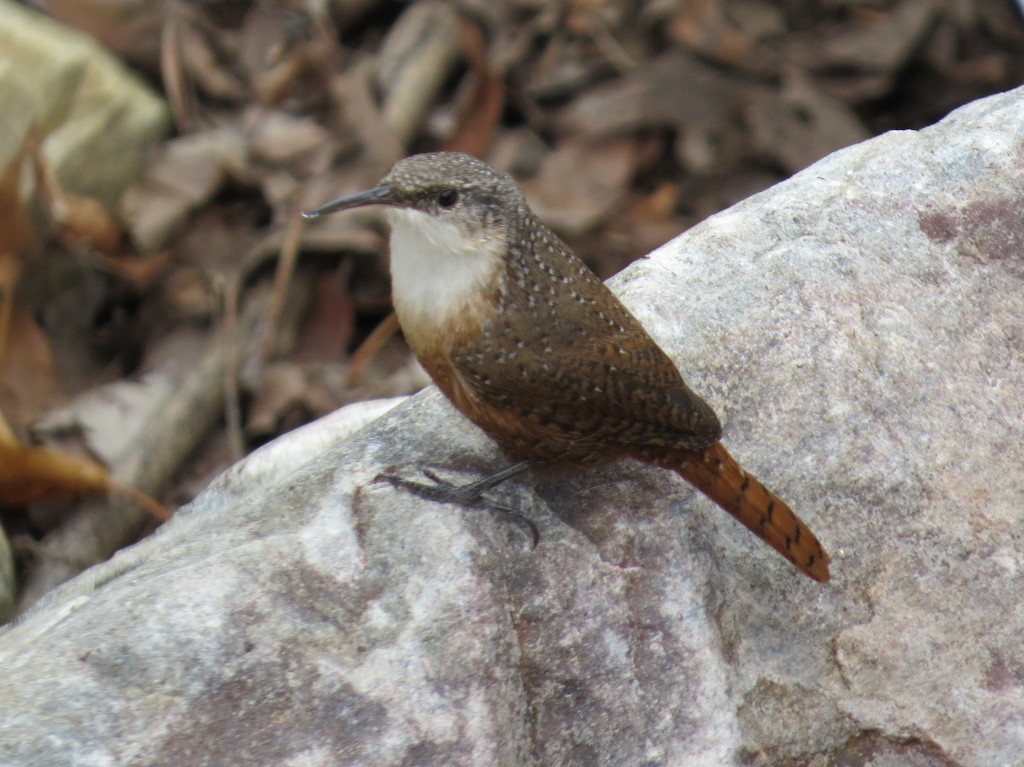 Then there was one last big gift for our big day in the Huachucas. We were nearly to the car when Tommy thought he heard a Black-throated Gray Warbler. I saw one last spring, but only briefly. I was hoping for a better photo. However, I’m just going to have to wait for that because the bird turned out to be a lifer Townsend’s Warbler instead! Now I need a redemptive photo of two western Warblers.
Then there was one last big gift for our big day in the Huachucas. We were nearly to the car when Tommy thought he heard a Black-throated Gray Warbler. I saw one last spring, but only briefly. I was hoping for a better photo. However, I’m just going to have to wait for that because the bird turned out to be a lifer Townsend’s Warbler instead! Now I need a redemptive photo of two western Warblers.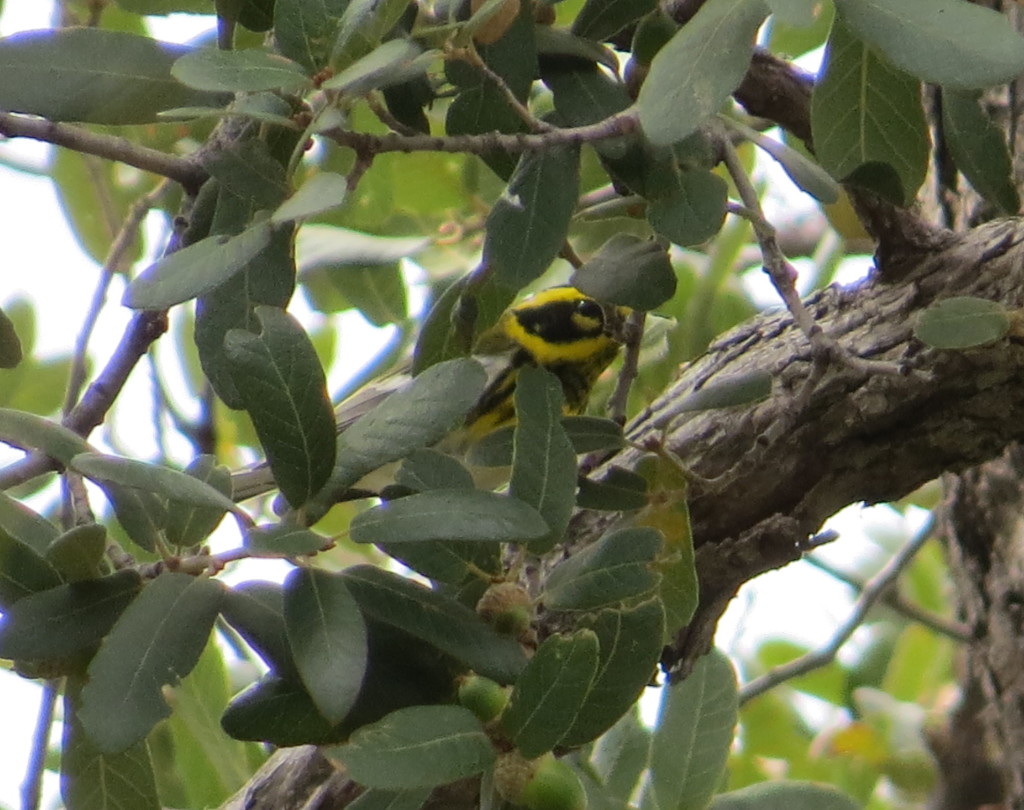 What an incredible day it was at our three stops in the Huachuca Mountains. It was finally time to hit the road to join my family back at Green Valley. Once again, Tommy and Gordon outdid themselves and provided another fun set of SE AZ memories. We said our goodbyes and vowed to meet up again this winter back in Minnesota where it’s not as warm, definitely not as scenic, but with just as cool (if not cooler) Owls. Hopefully Evan and I can repay these guys with some awesome lifers of their own.
What an incredible day it was at our three stops in the Huachuca Mountains. It was finally time to hit the road to join my family back at Green Valley. Once again, Tommy and Gordon outdid themselves and provided another fun set of SE AZ memories. We said our goodbyes and vowed to meet up again this winter back in Minnesota where it’s not as warm, definitely not as scenic, but with just as cool (if not cooler) Owls. Hopefully Evan and I can repay these guys with some awesome lifers of their own.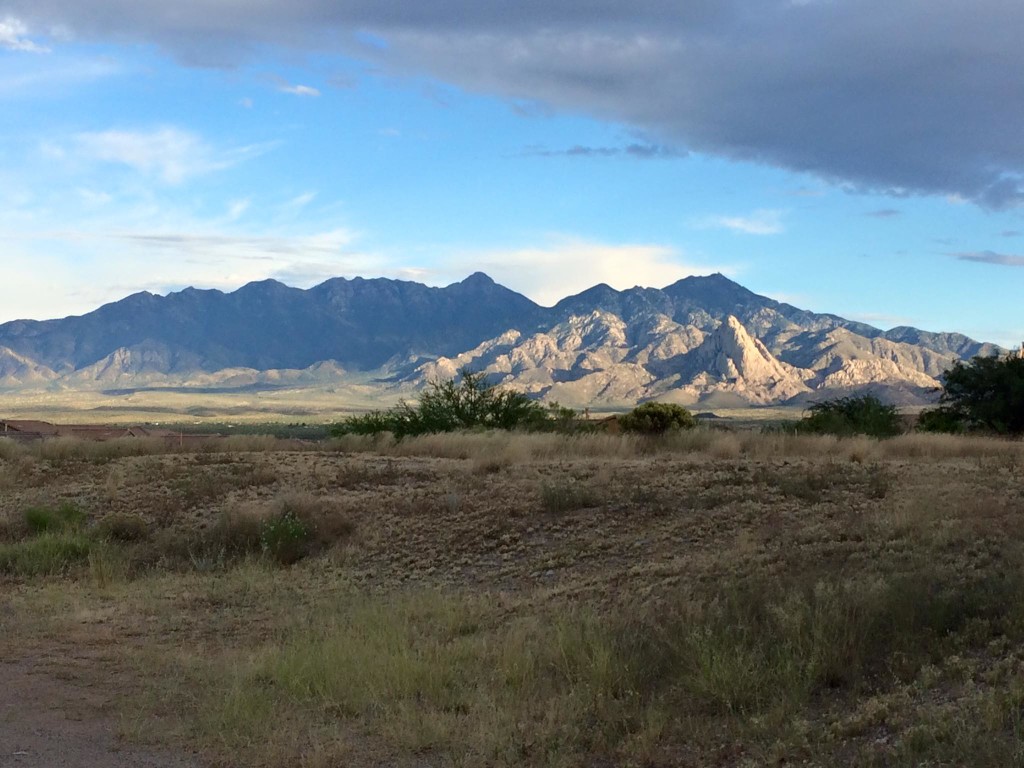
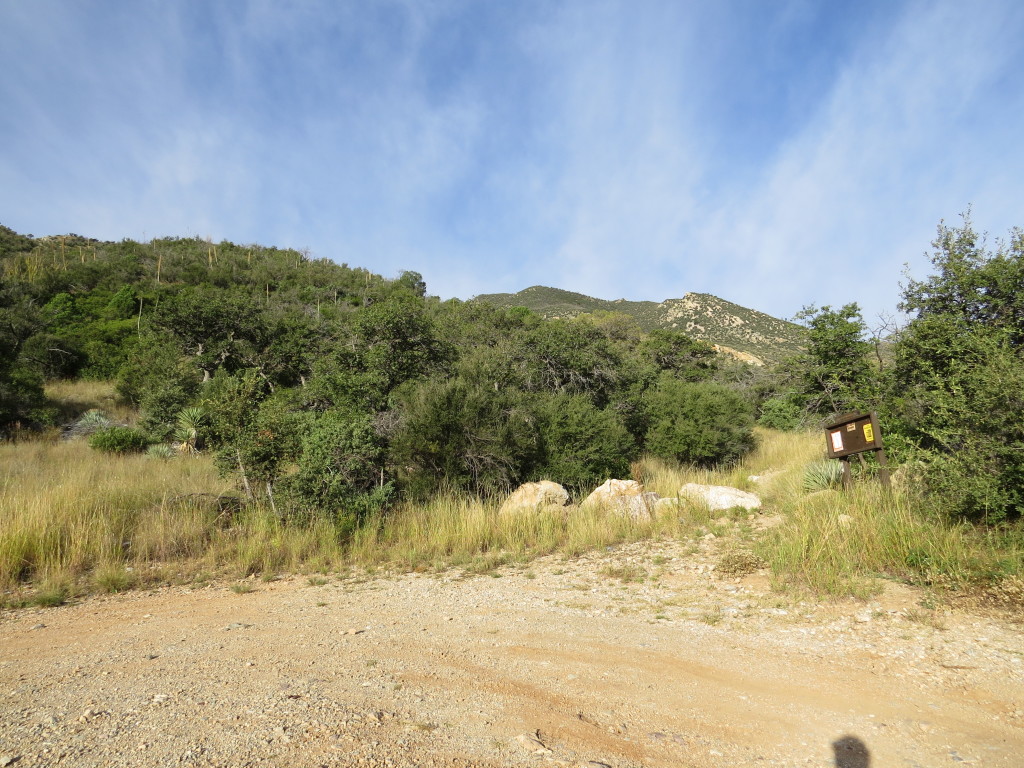
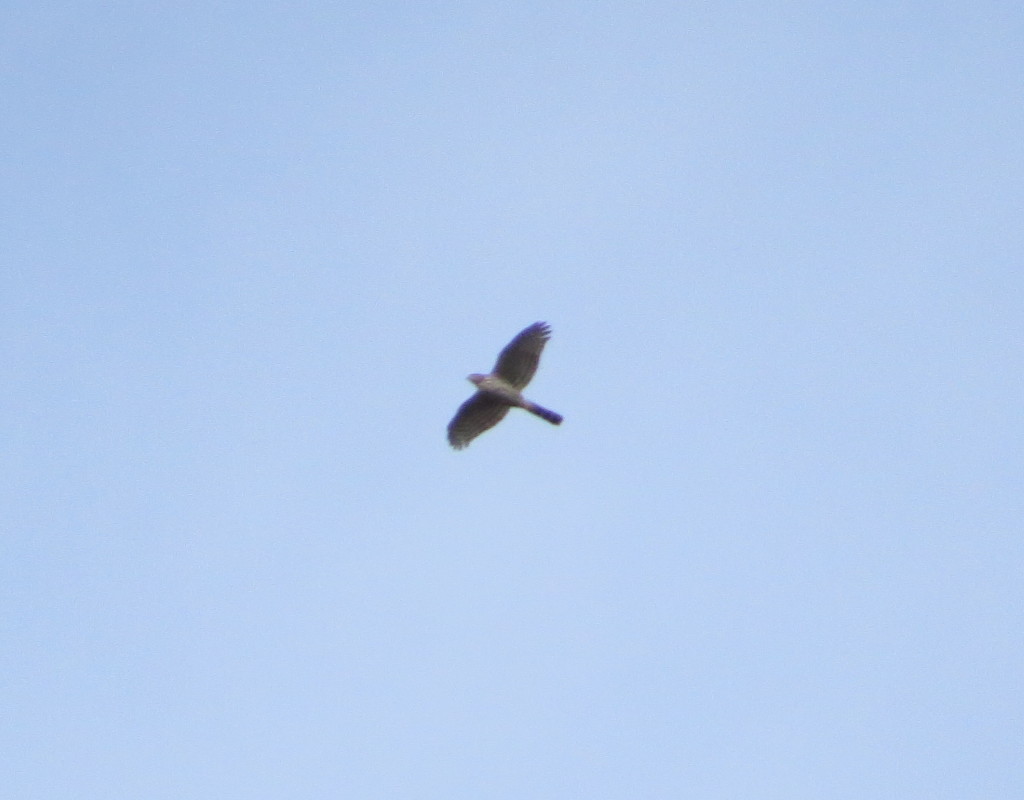
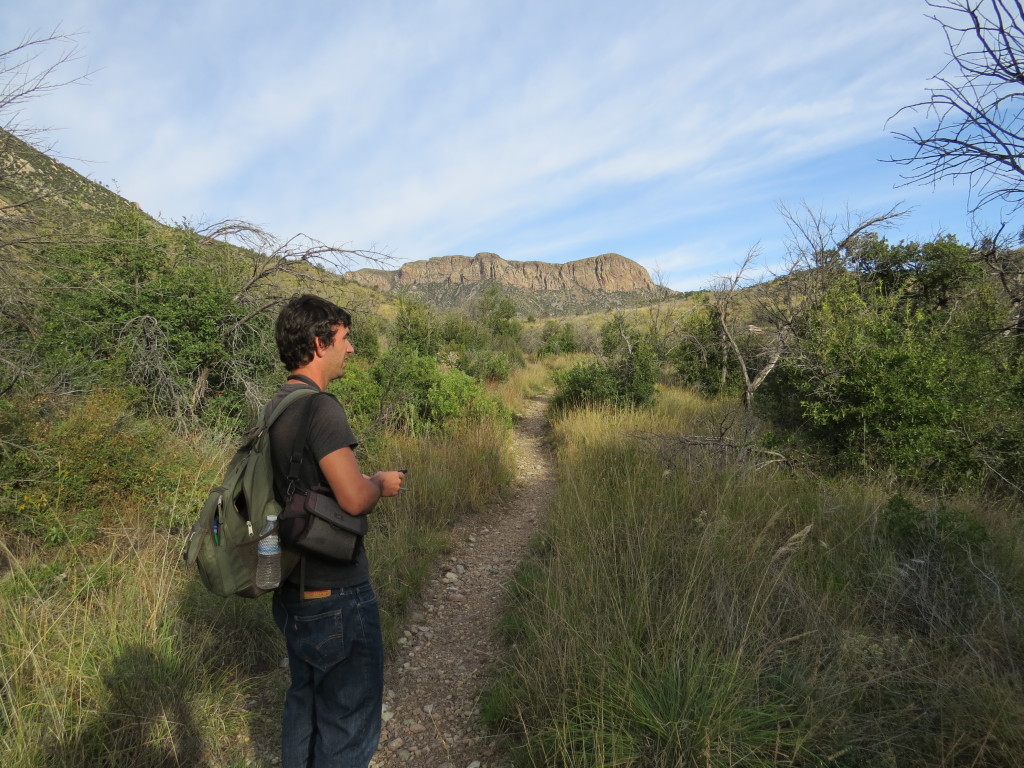 Tommy’s ear for bird sounds is truly impressive–hardly a chip note, flight call, or song gets by him. In fact, he doesn’t even announce all that he’s hearing unless it’s important, like this lifer Bewick’s Wren.
Tommy’s ear for bird sounds is truly impressive–hardly a chip note, flight call, or song gets by him. In fact, he doesn’t even announce all that he’s hearing unless it’s important, like this lifer Bewick’s Wren.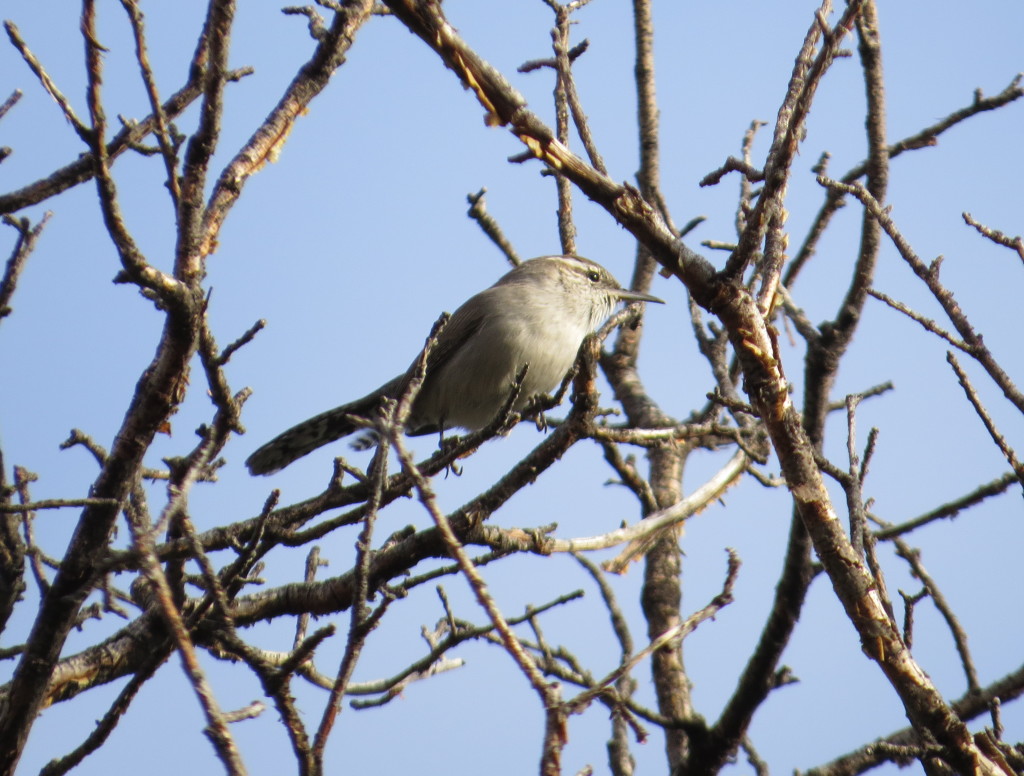
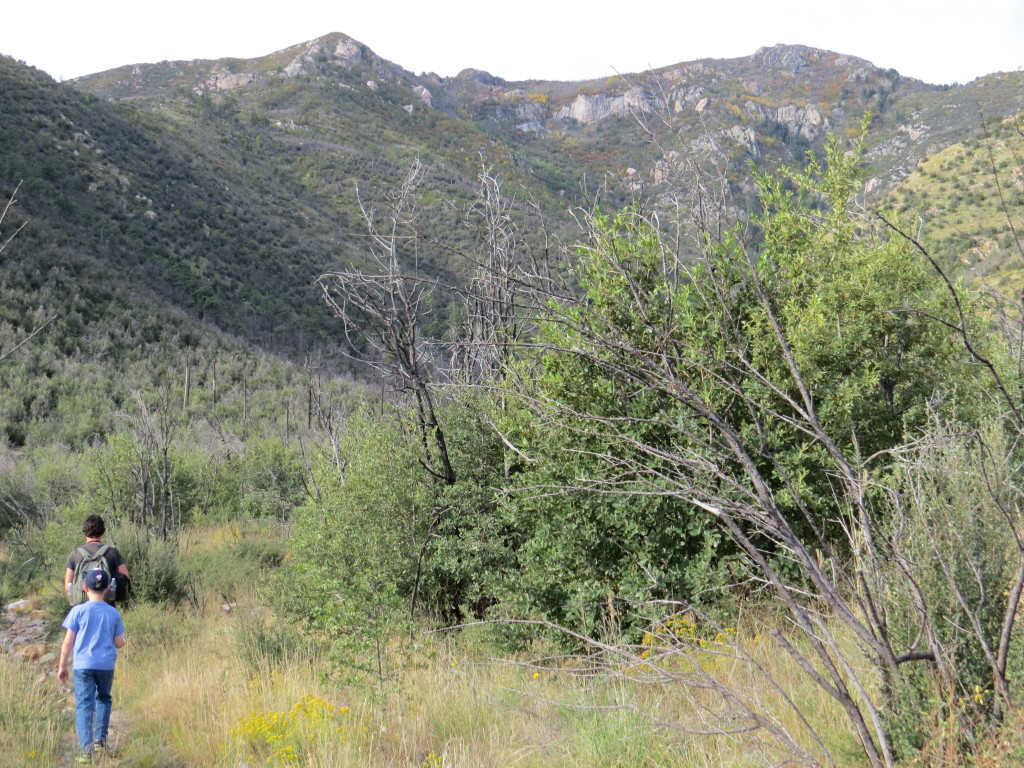 It is where this lowland scrub terminates and the forest of the canyon begins that the Slate-throated Redstart had been seen just a couple days prior. We paused to look and listen, but it seemed well-known at this point that the Redstart was gone. We did, however, start to hear multiple Rufous-capped Warblers all around us! Getting a visual of this brush-loving bird is another story. The sound seemed to come from everywhere and then stopped all of the sudden. Weird. So onward and upward we kept going. At least the view back down the mountain was nice.
It is where this lowland scrub terminates and the forest of the canyon begins that the Slate-throated Redstart had been seen just a couple days prior. We paused to look and listen, but it seemed well-known at this point that the Redstart was gone. We did, however, start to hear multiple Rufous-capped Warblers all around us! Getting a visual of this brush-loving bird is another story. The sound seemed to come from everywhere and then stopped all of the sudden. Weird. So onward and upward we kept going. At least the view back down the mountain was nice.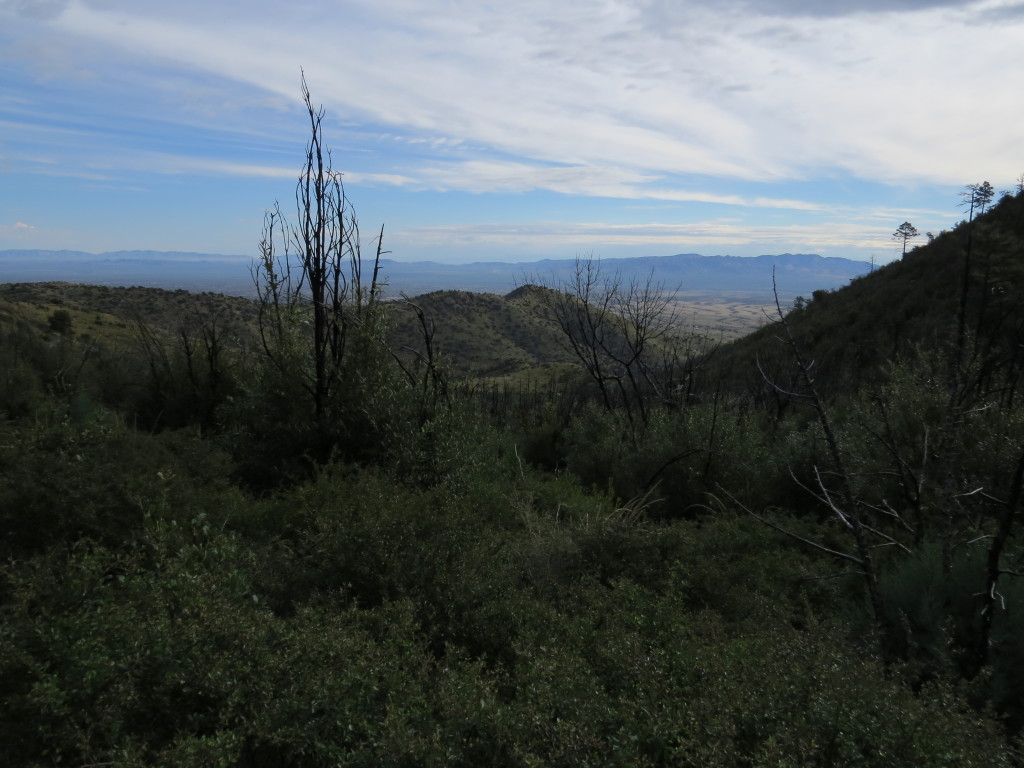
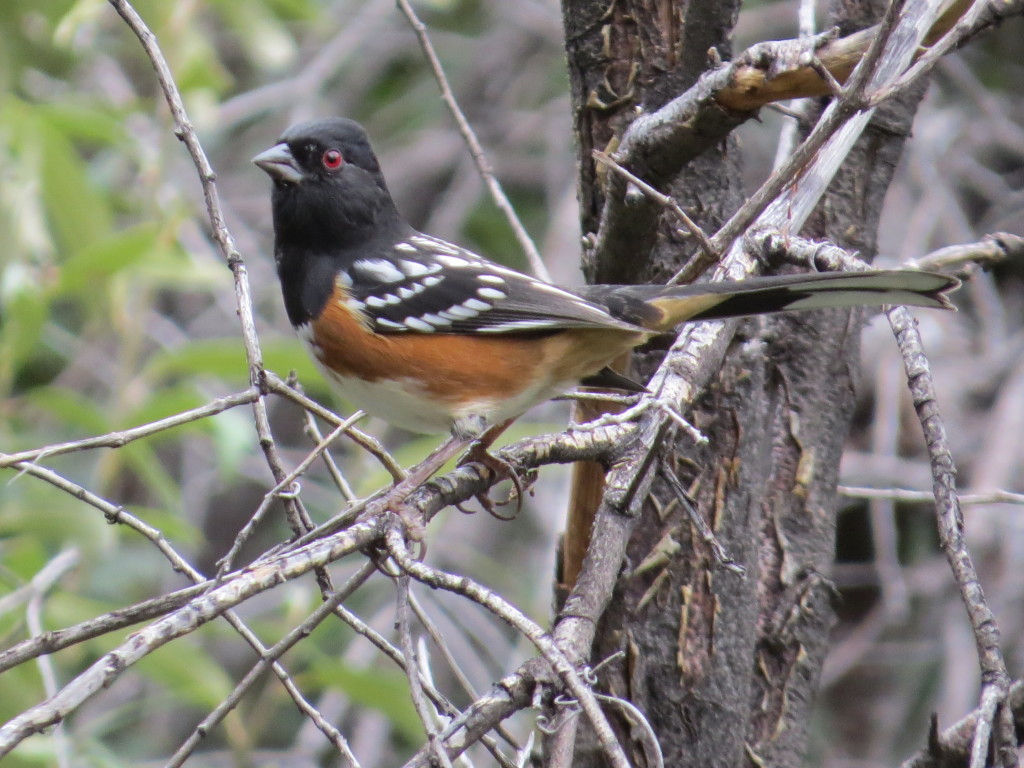 In hindsight, this was the calm before the storm because things took off in a hurry. It all started when Tommy spotted a male Hepatic Tanager which was a lifer for Evan and me. I didn’t see it, but I spotted my own Hepatic lifer (female).
In hindsight, this was the calm before the storm because things took off in a hurry. It all started when Tommy spotted a male Hepatic Tanager which was a lifer for Evan and me. I didn’t see it, but I spotted my own Hepatic lifer (female).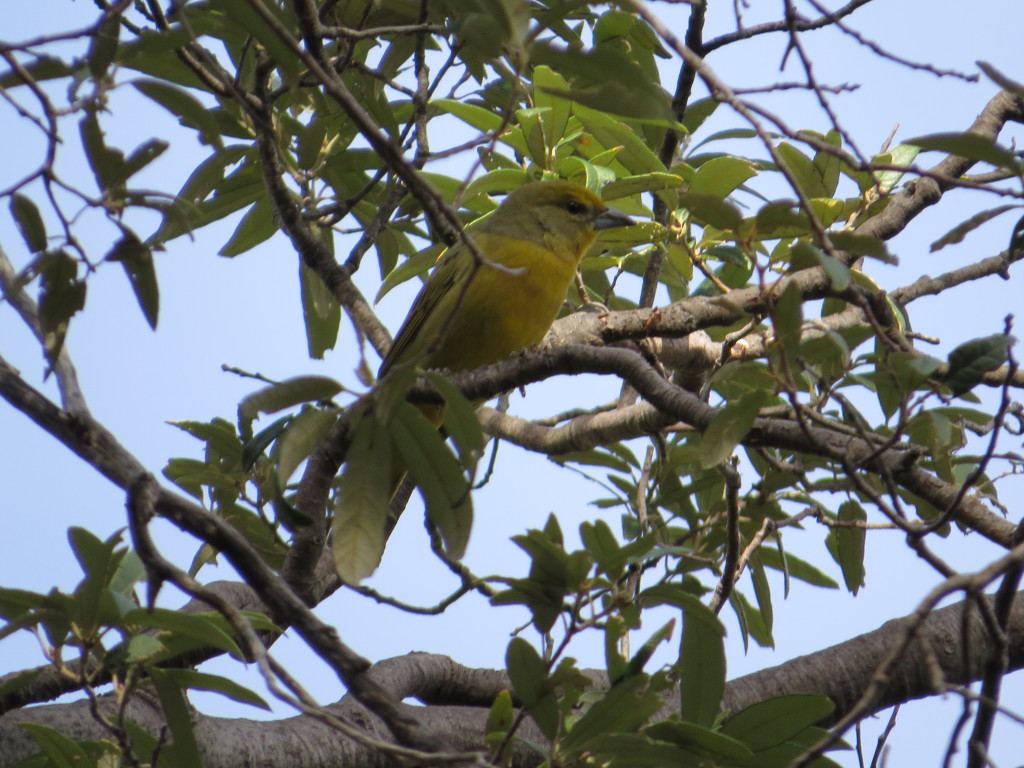 I really wanted to see the male Tommy found. Eventually I saw it, but it was not being cooperative at all.
I really wanted to see the male Tommy found. Eventually I saw it, but it was not being cooperative at all.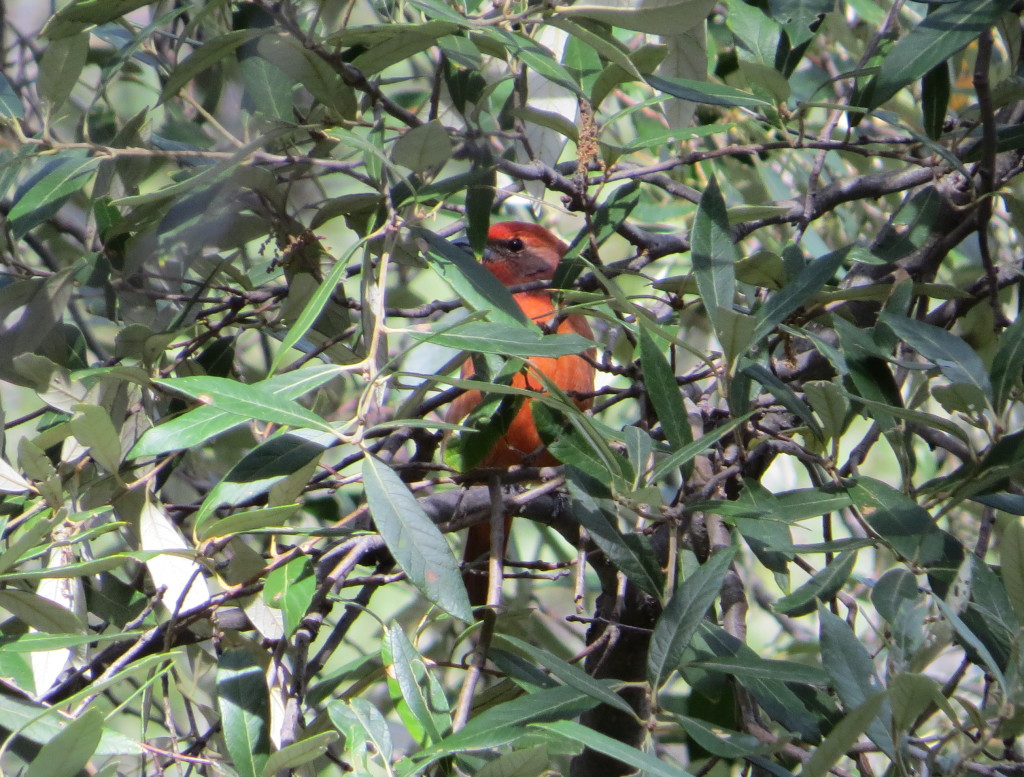
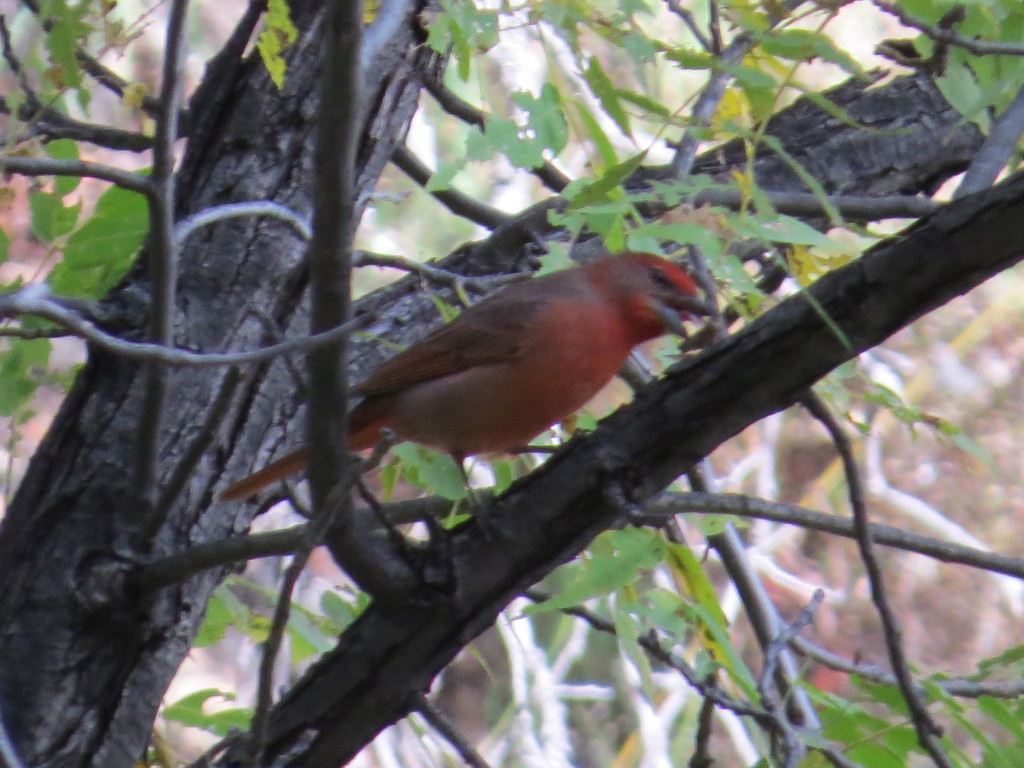 Tommy said that sometimes Tanagers will respond to a Northern Pygmy-Owl call. When he played it, a live Pygmy-Owl tooted back! Tommy took off up the canyon trail to see if he could locate it. I started soon after but then saw bright flash of yellow and black come across the blue sky–Scott’s Oriole! What a looker it was! It landed at the very top of a tree offering me nothing but butt views. It’s a pretty nice-looking butt, anyhow.
Tommy said that sometimes Tanagers will respond to a Northern Pygmy-Owl call. When he played it, a live Pygmy-Owl tooted back! Tommy took off up the canyon trail to see if he could locate it. I started soon after but then saw bright flash of yellow and black come across the blue sky–Scott’s Oriole! What a looker it was! It landed at the very top of a tree offering me nothing but butt views. It’s a pretty nice-looking butt, anyhow.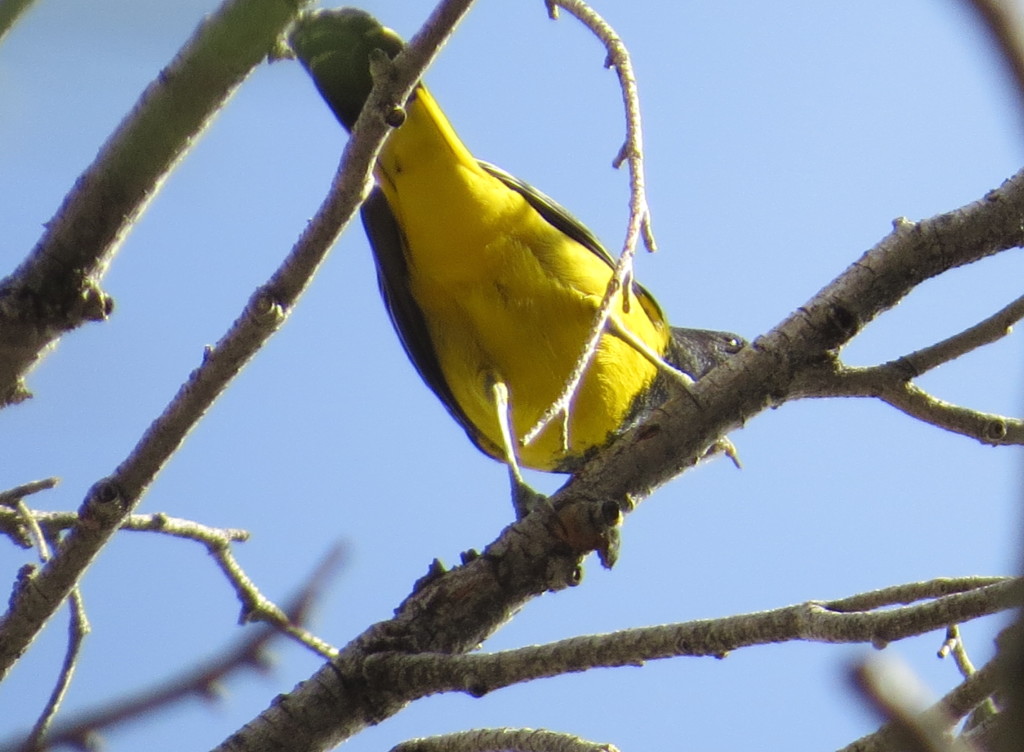 As I was jockeying for a position from which I could see the Oriole better, Tommy called out calmly, “Guys, Pygmy-Owl.” For some reason I thought this meant he was hearing it, and so I continued to keep working on the Oriole. A few seconds later, Tommy’s voice carried a little more urgency. An Owl lifer trumps an Oriole photo. Evan, Gordon, and I hustled up to where Tommy was. Sure enough, he had eyes on it. Wow, just wow.
As I was jockeying for a position from which I could see the Oriole better, Tommy called out calmly, “Guys, Pygmy-Owl.” For some reason I thought this meant he was hearing it, and so I continued to keep working on the Oriole. A few seconds later, Tommy’s voice carried a little more urgency. An Owl lifer trumps an Oriole photo. Evan, Gordon, and I hustled up to where Tommy was. Sure enough, he had eyes on it. Wow, just wow.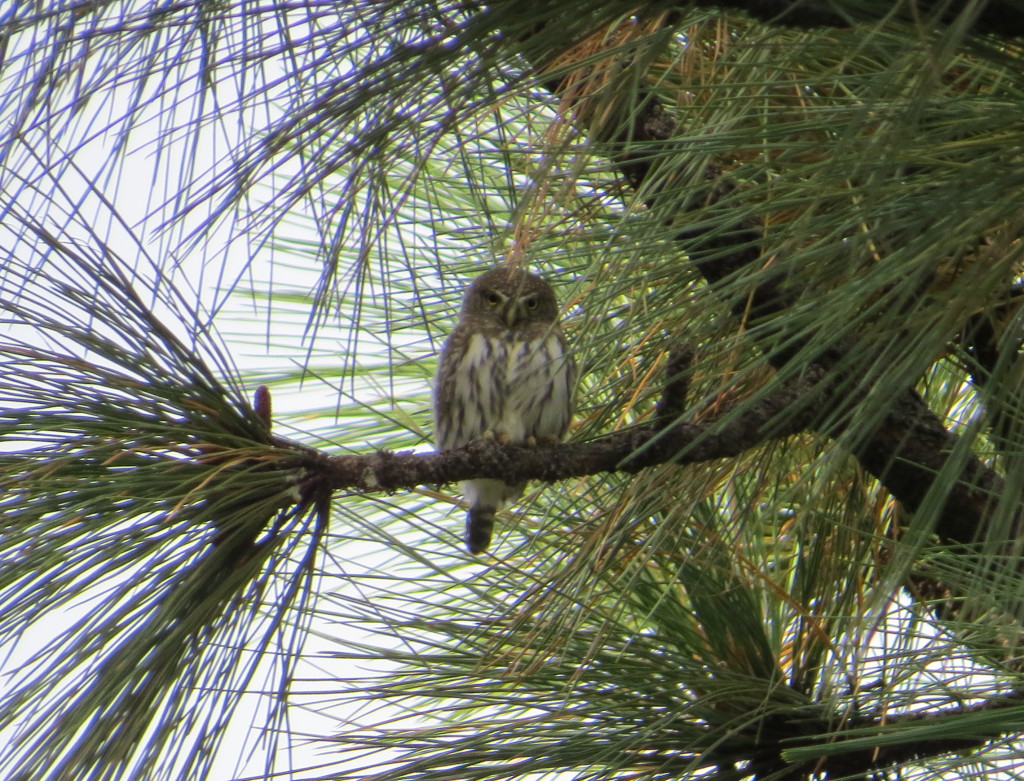
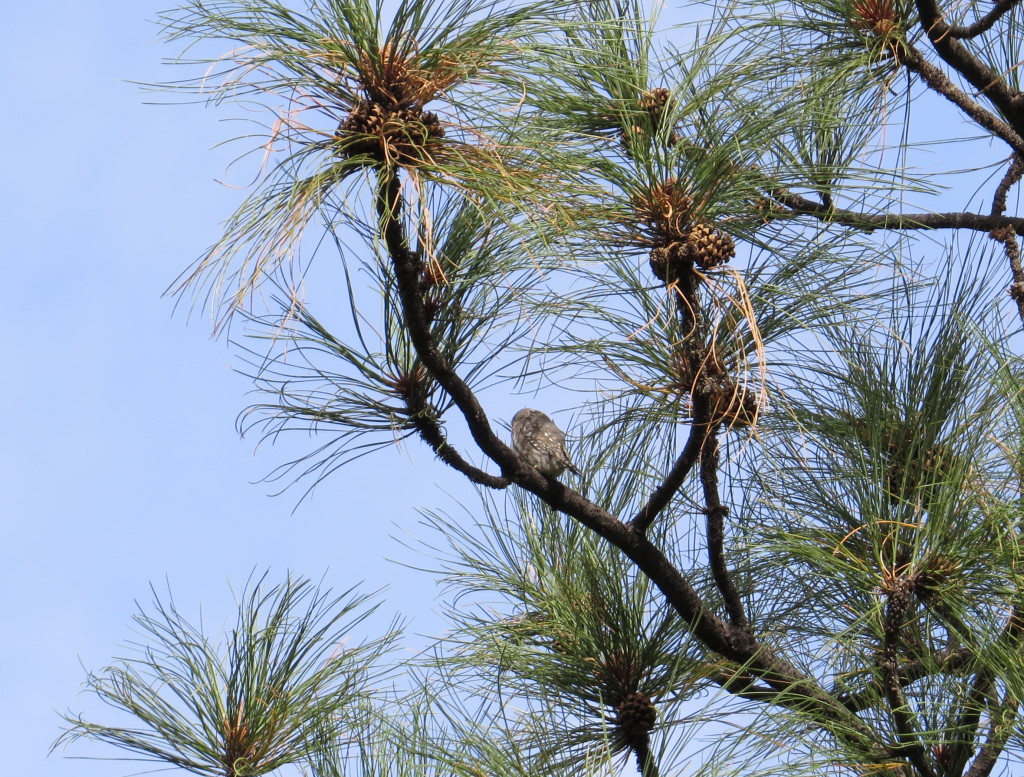 This was such a fun life bird. I was not expecting this one on this trip. Excuse the numerous photos–I was, and still am, very excited about this sighting.
This was such a fun life bird. I was not expecting this one on this trip. Excuse the numerous photos–I was, and still am, very excited about this sighting.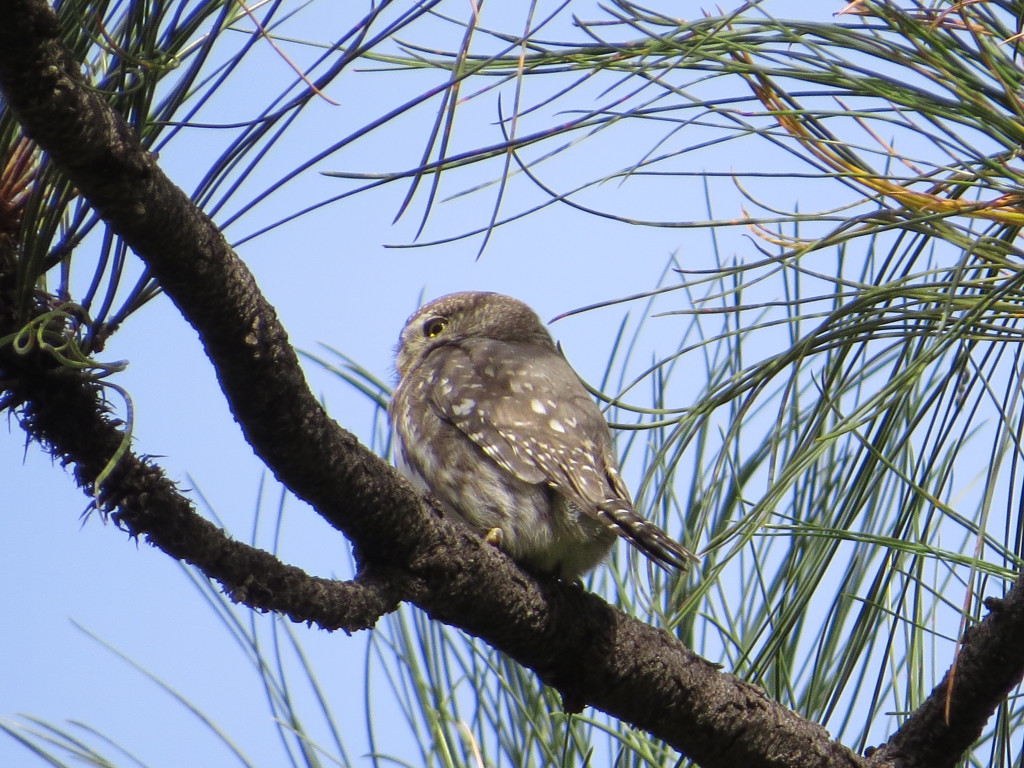
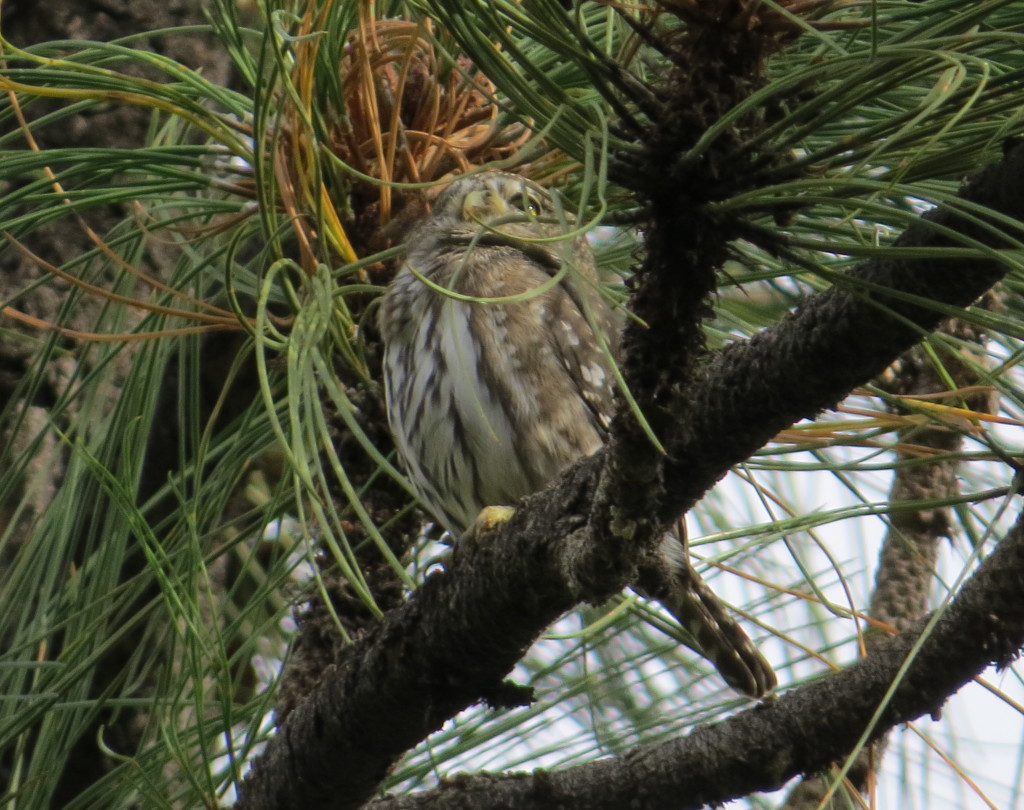
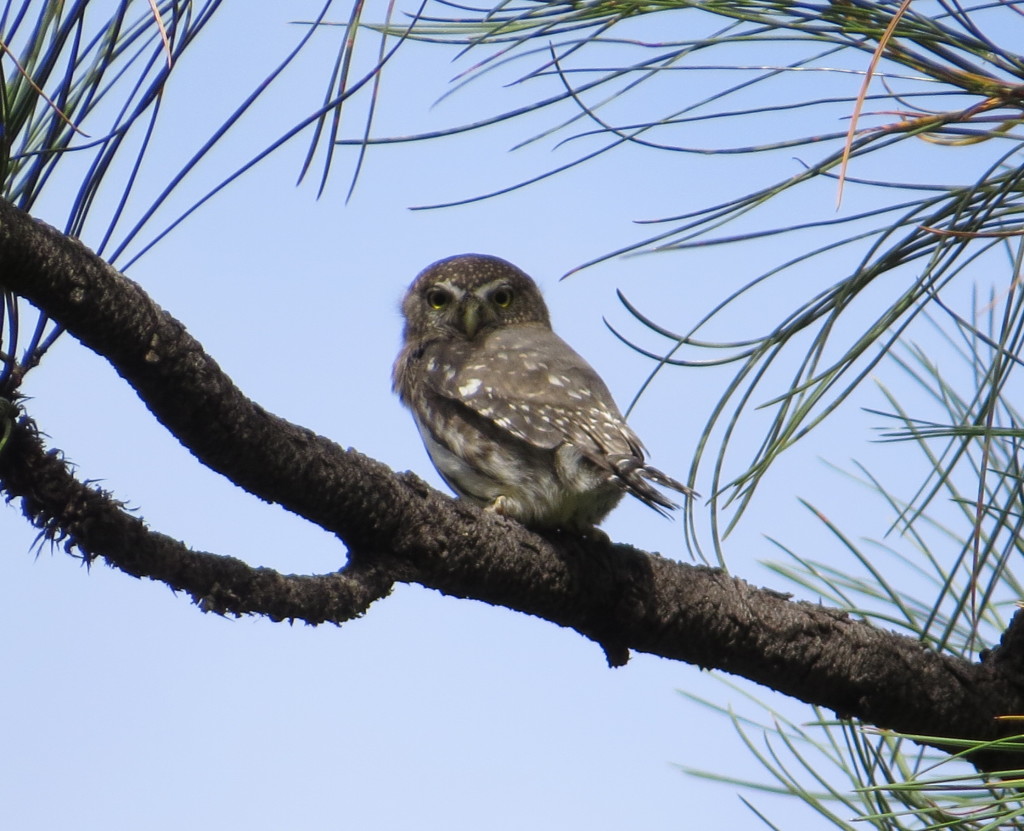 Time waits for no man, though, and neither do Rufous-capped Warblers. As I was photographing this cool Owl and trying for better angles, a Rufous-capped Warbler started singing nearby and Tommy was off again! In seconds Tommy got a visual on the bird and called me over. I’ve learned from Tommy and Gordon to first get a good look at a lifer with binoculars and then worry about a photo second. So that’s what I did. In no time at all, I also saw the Rufous-capped Warbler pop up for a second and got to see that amazingly yellow throat.
Time waits for no man, though, and neither do Rufous-capped Warblers. As I was photographing this cool Owl and trying for better angles, a Rufous-capped Warbler started singing nearby and Tommy was off again! In seconds Tommy got a visual on the bird and called me over. I’ve learned from Tommy and Gordon to first get a good look at a lifer with binoculars and then worry about a photo second. So that’s what I did. In no time at all, I also saw the Rufous-capped Warbler pop up for a second and got to see that amazingly yellow throat.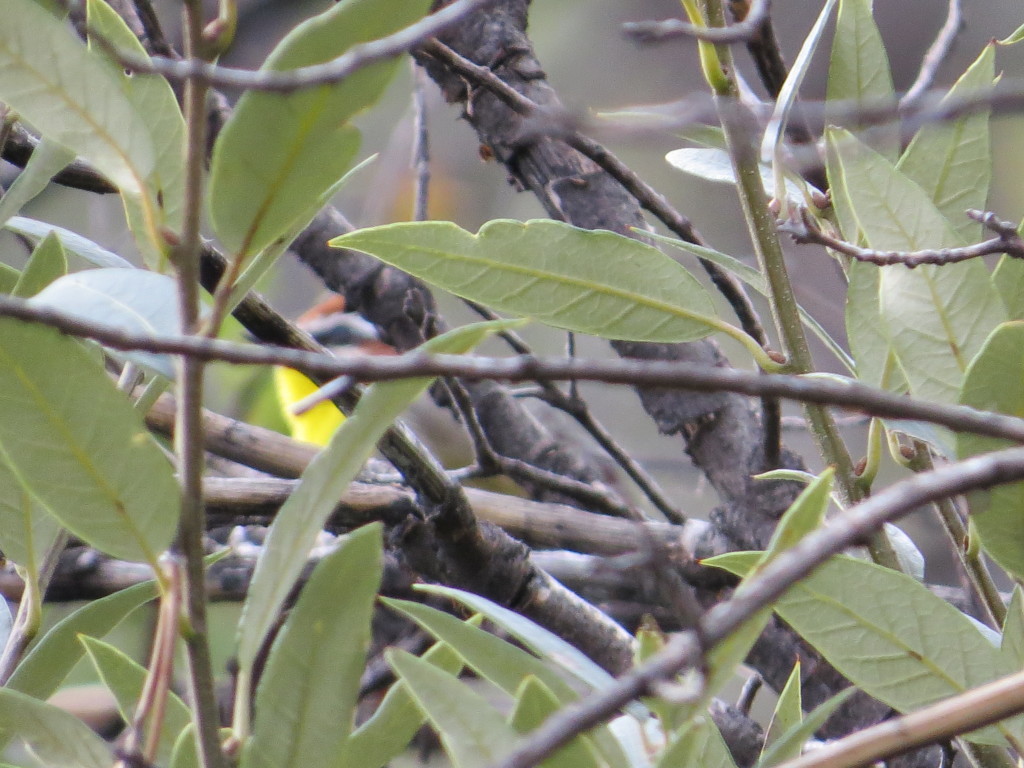
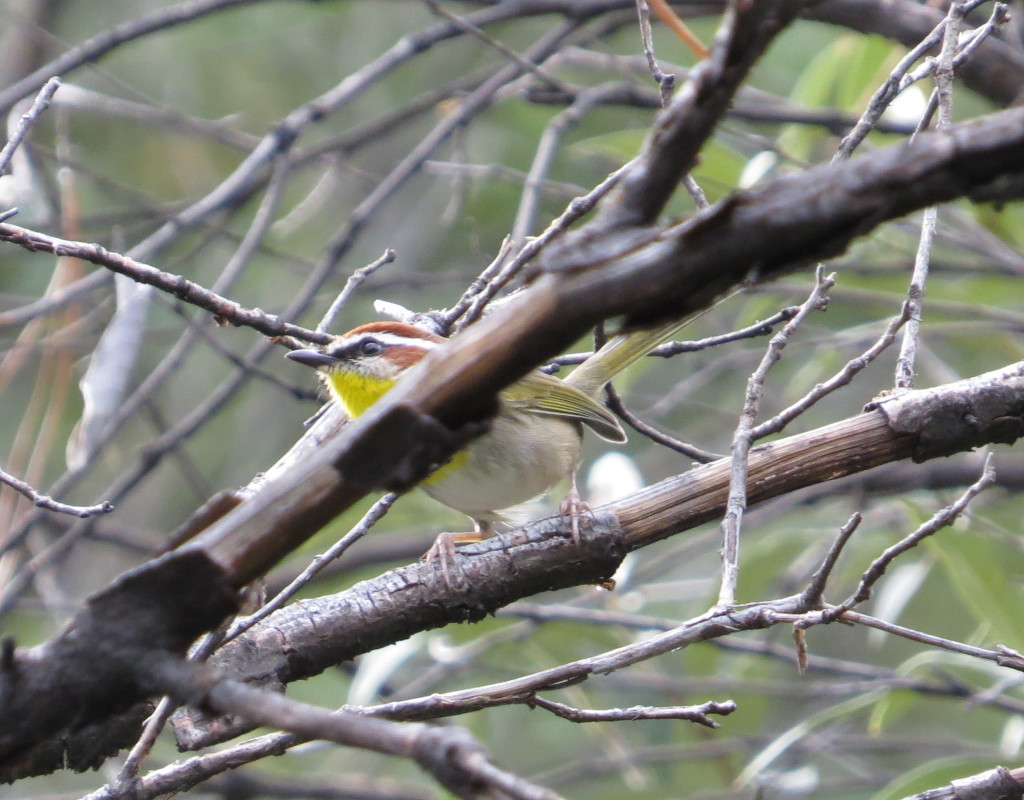
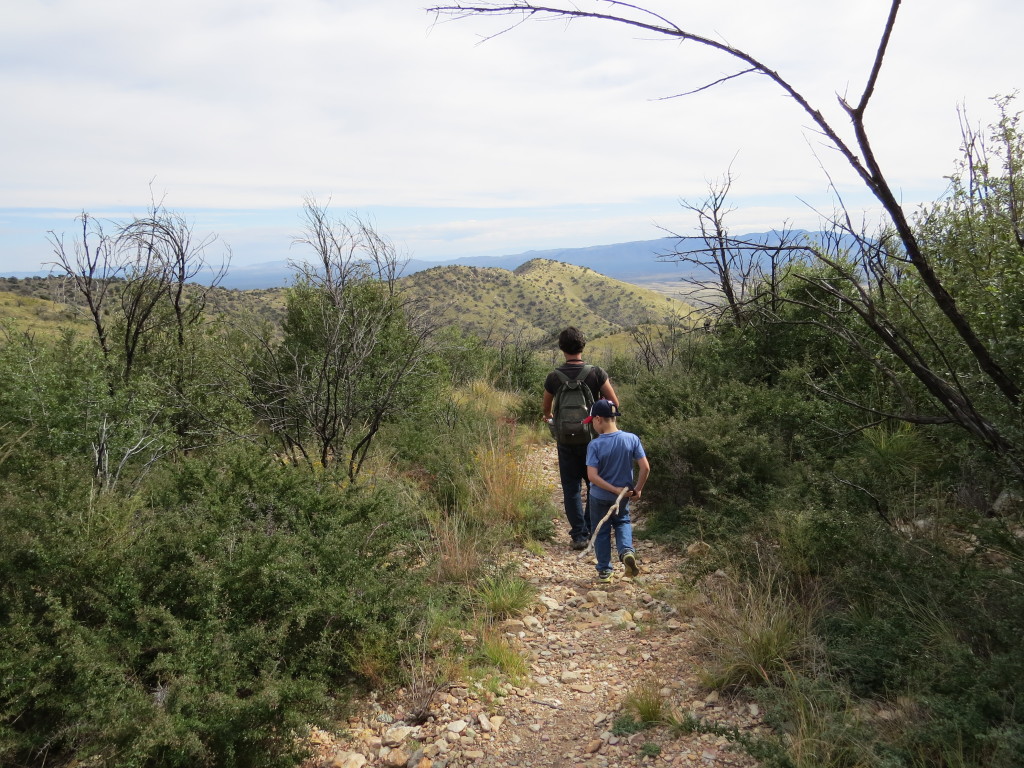 …and then go to next-door Miller Canyon and Ash Canyon for even more adventure! You don’t want to miss it–there will be coon dogs, guns, and yes, more cool lifers.
…and then go to next-door Miller Canyon and Ash Canyon for even more adventure! You don’t want to miss it–there will be coon dogs, guns, and yes, more cool lifers.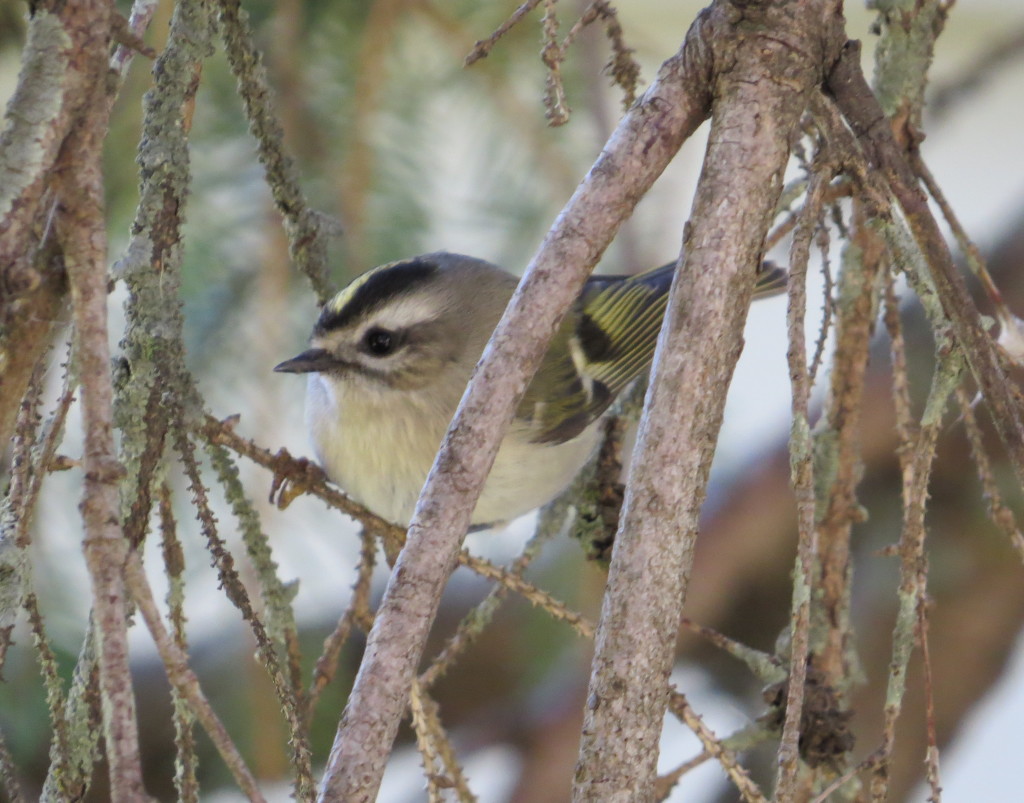
 The sun was sinking but things were still glaringly aglow around us as we Dodge Darted ourselves across town to Tempe Town Lake where
The sun was sinking but things were still glaringly aglow around us as we Dodge Darted ourselves across town to Tempe Town Lake where 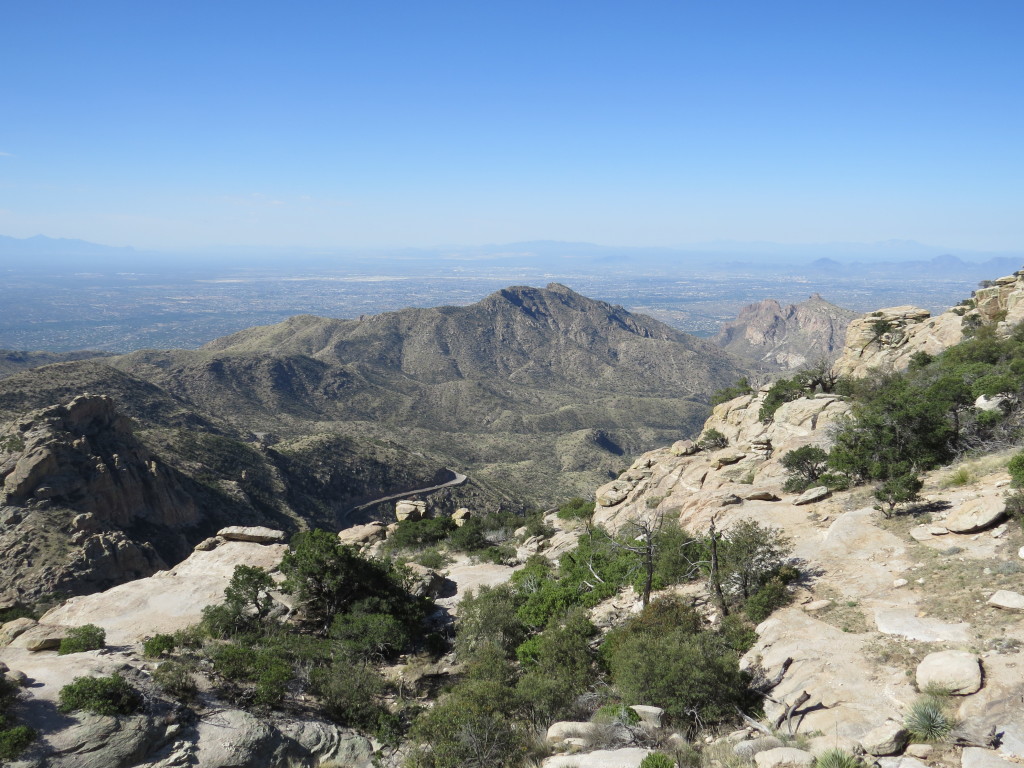
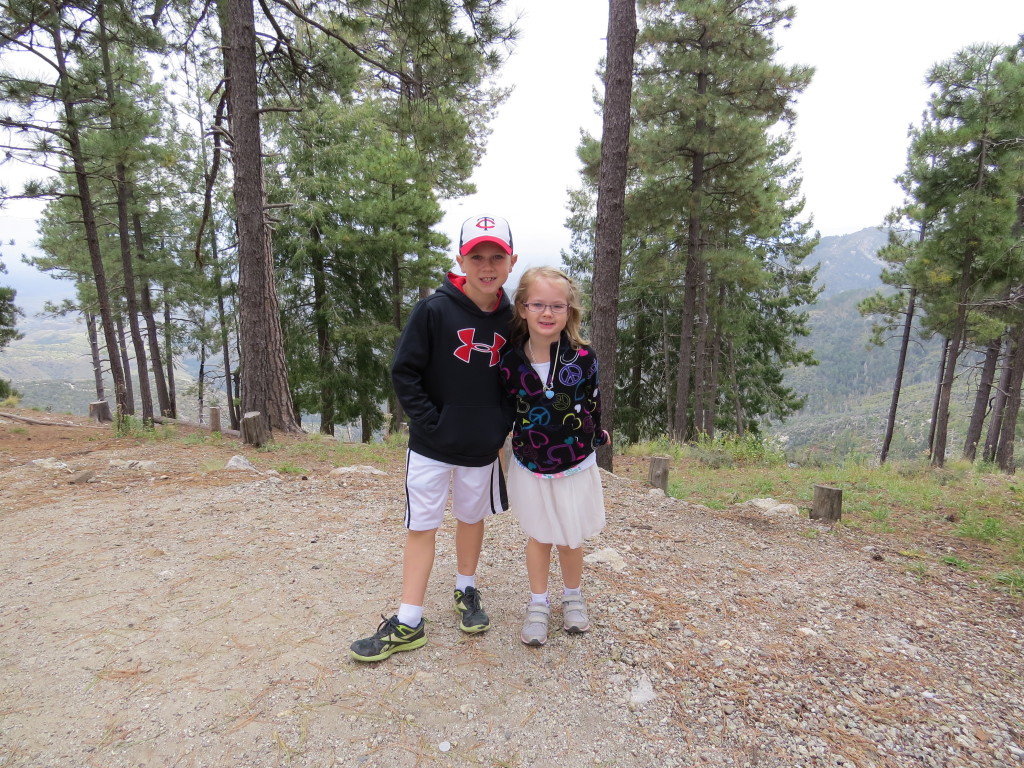 Once we completed the hour-long, 26 mile drive up to Summerhaven, I immediately started scanning for my target bird, a bird that
Once we completed the hour-long, 26 mile drive up to Summerhaven, I immediately started scanning for my target bird, a bird that 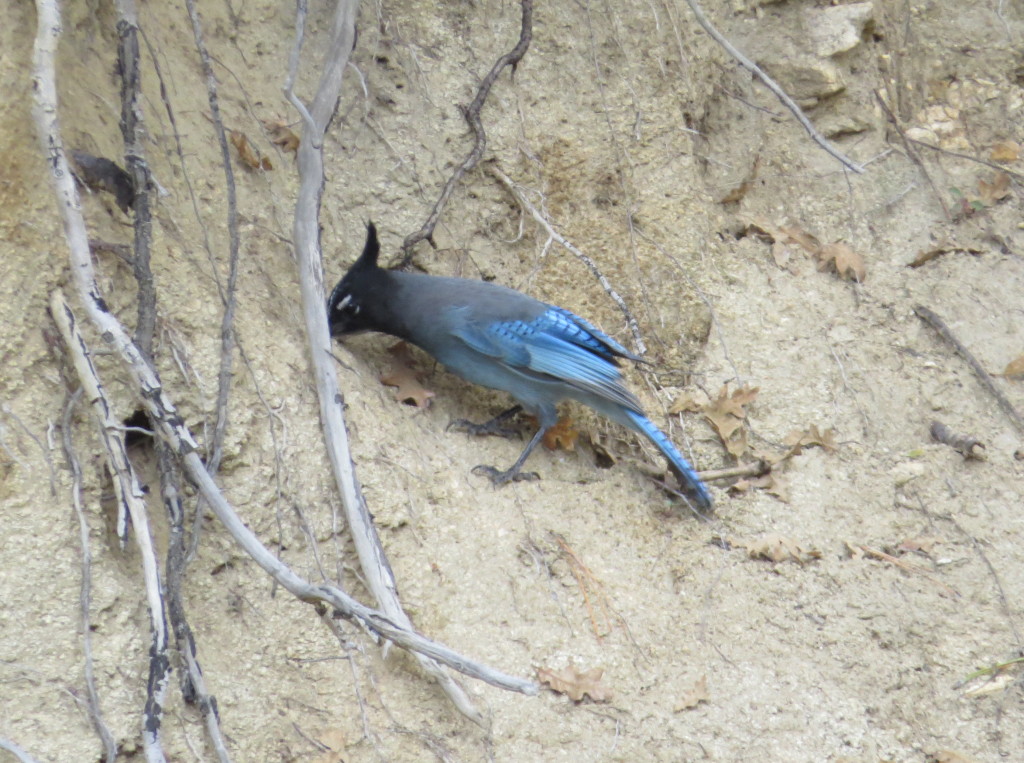
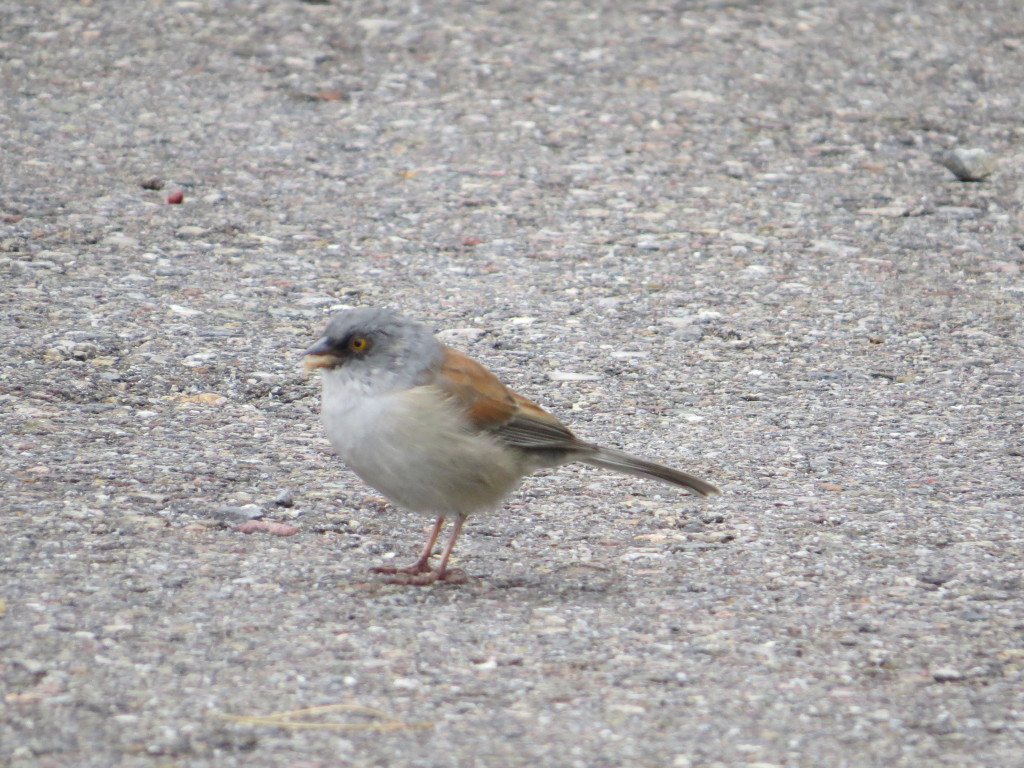
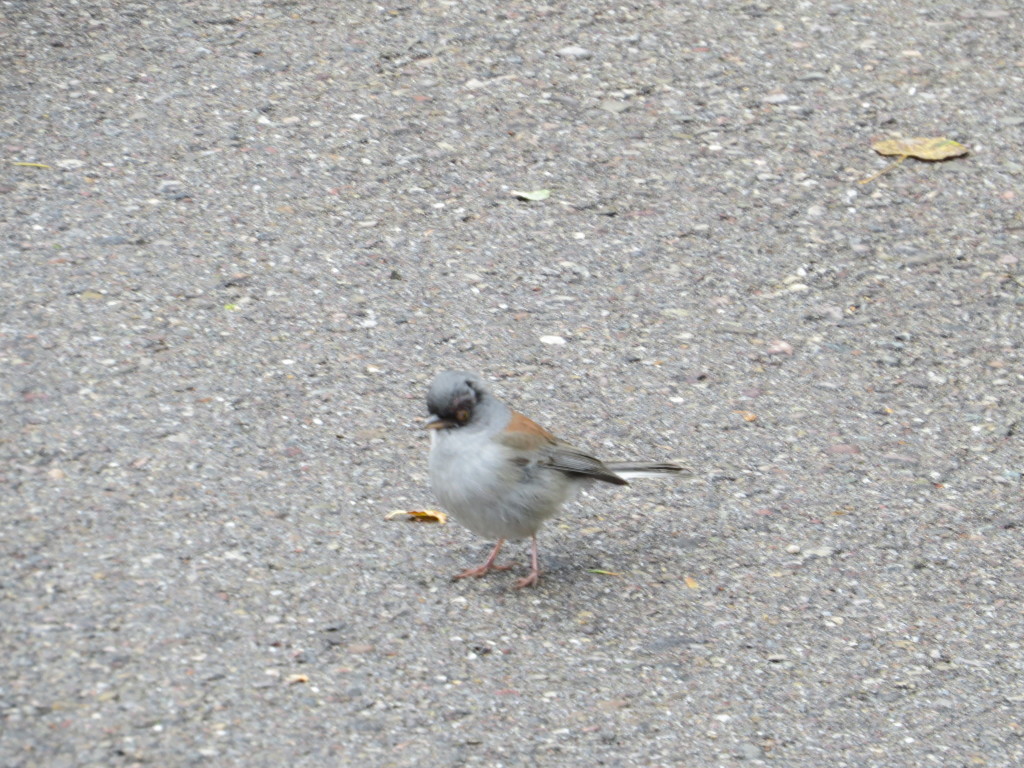
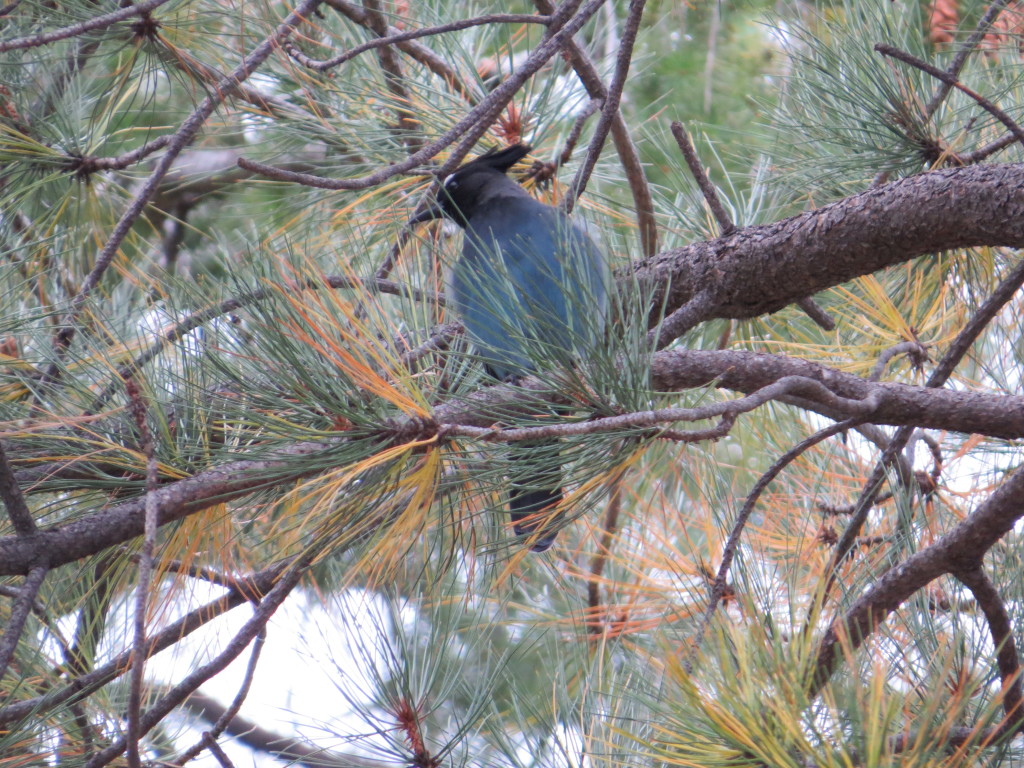
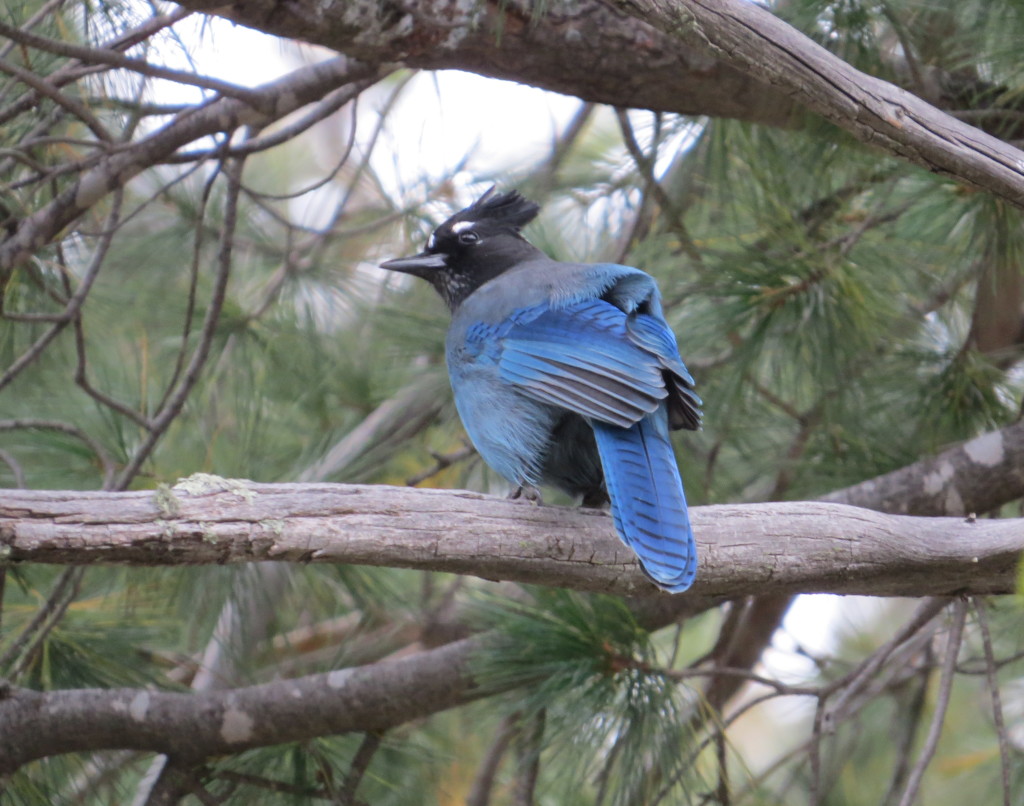 At least day two was going according to plan. Now, could we say the same for day three in the Huachuca Mountains where there was not only a Slate-throated Redstart but also SEVERAL Rufous-capped Warblers?
At least day two was going according to plan. Now, could we say the same for day three in the Huachuca Mountains where there was not only a Slate-throated Redstart but also SEVERAL Rufous-capped Warblers?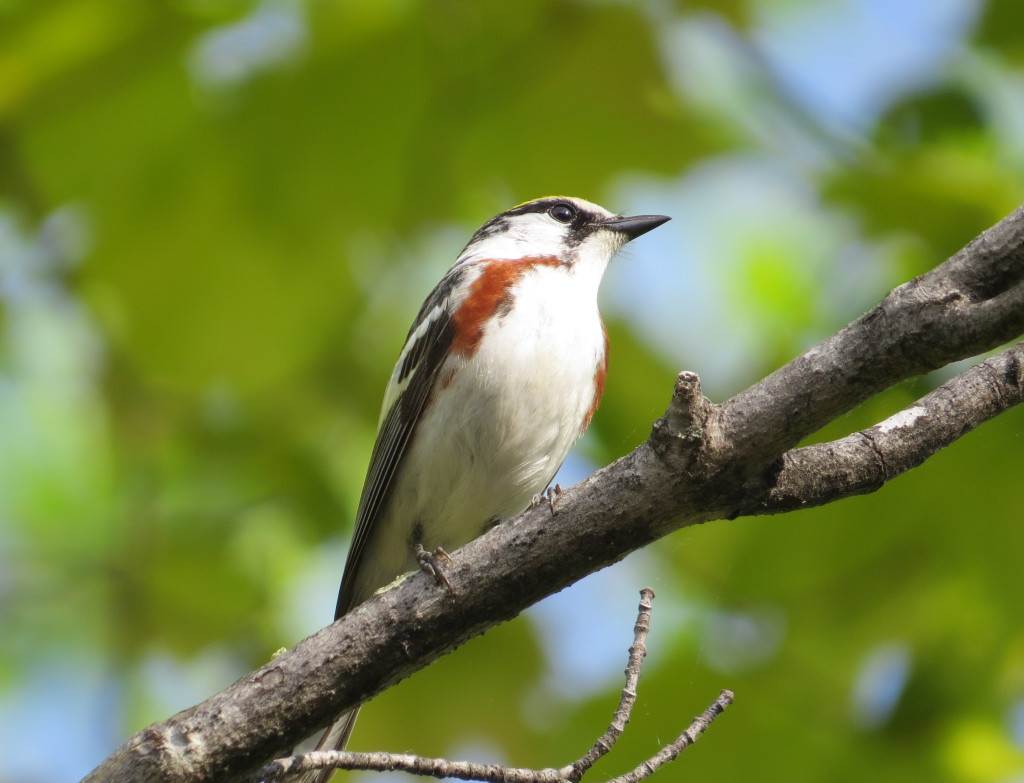
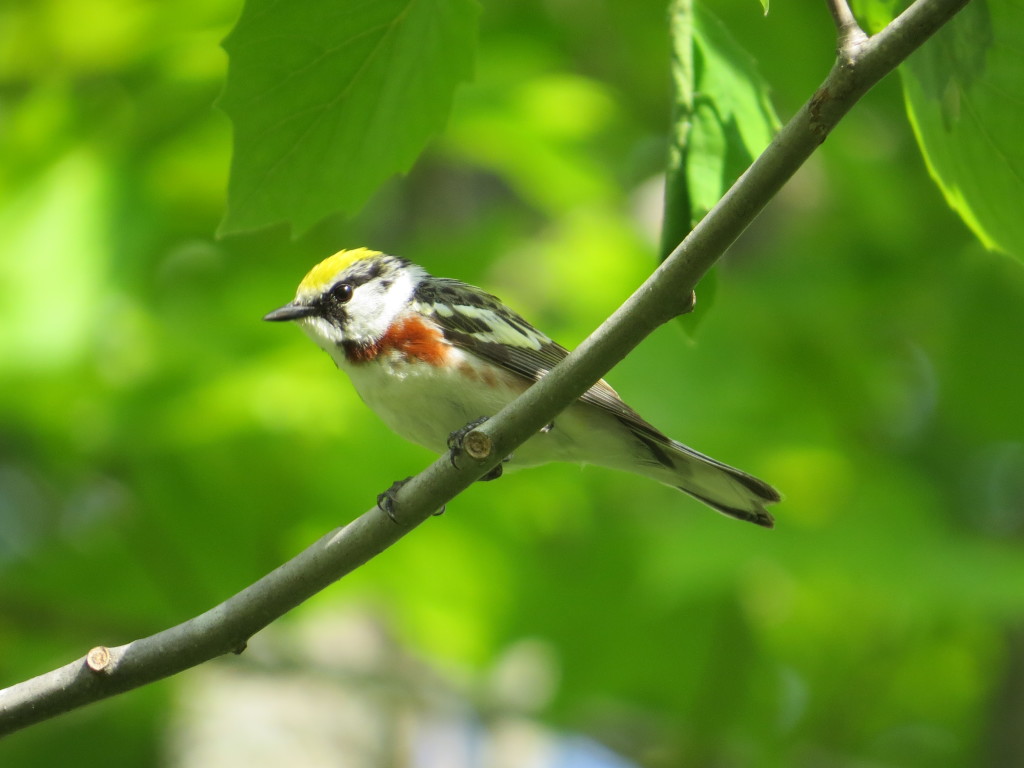
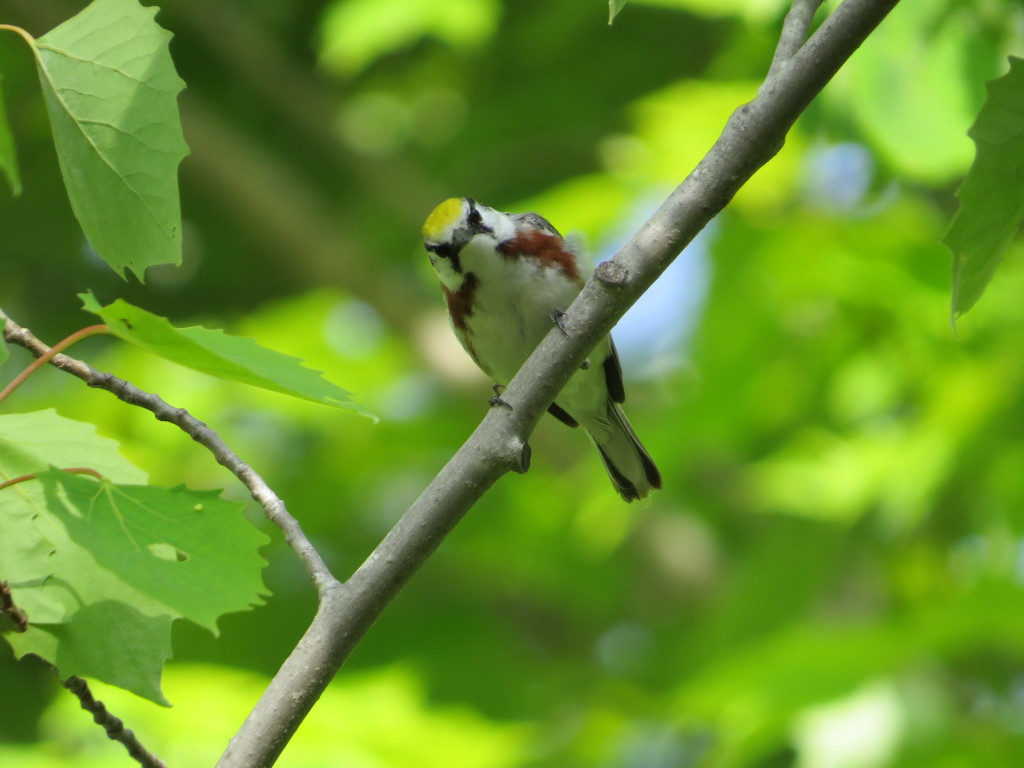
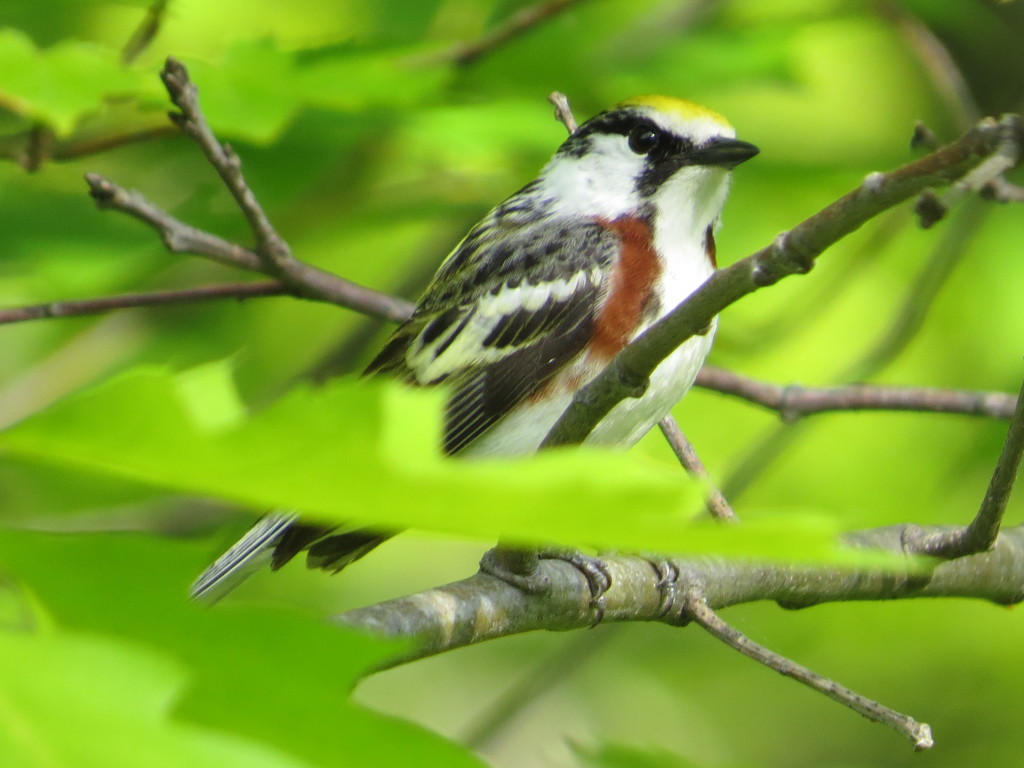
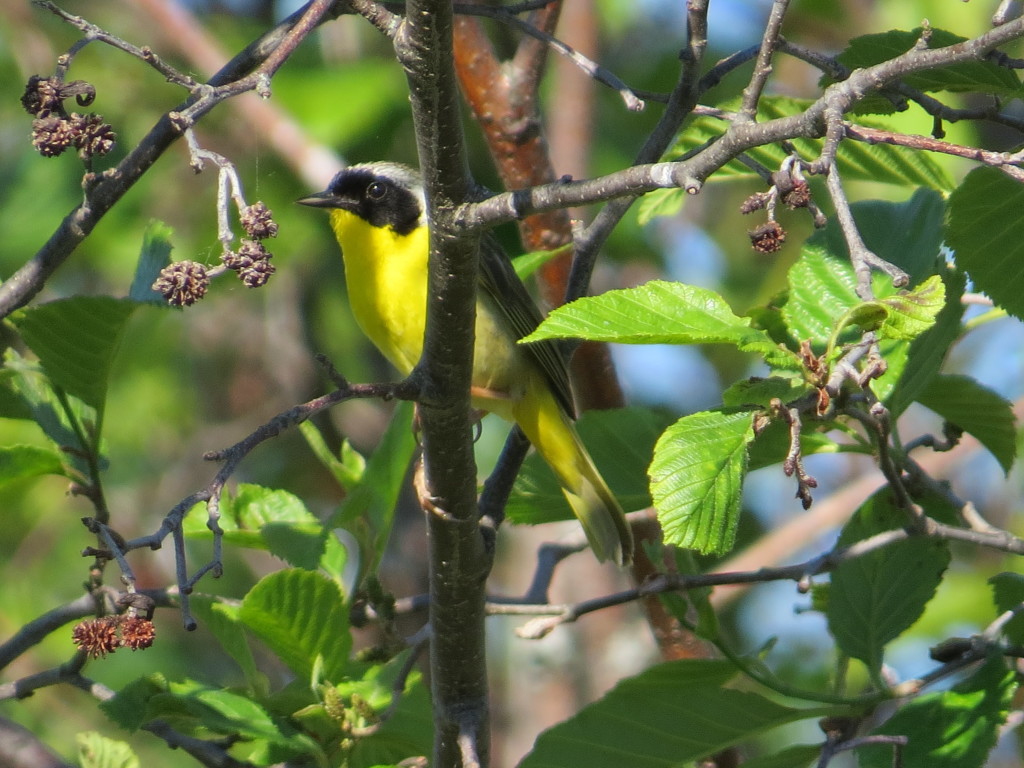
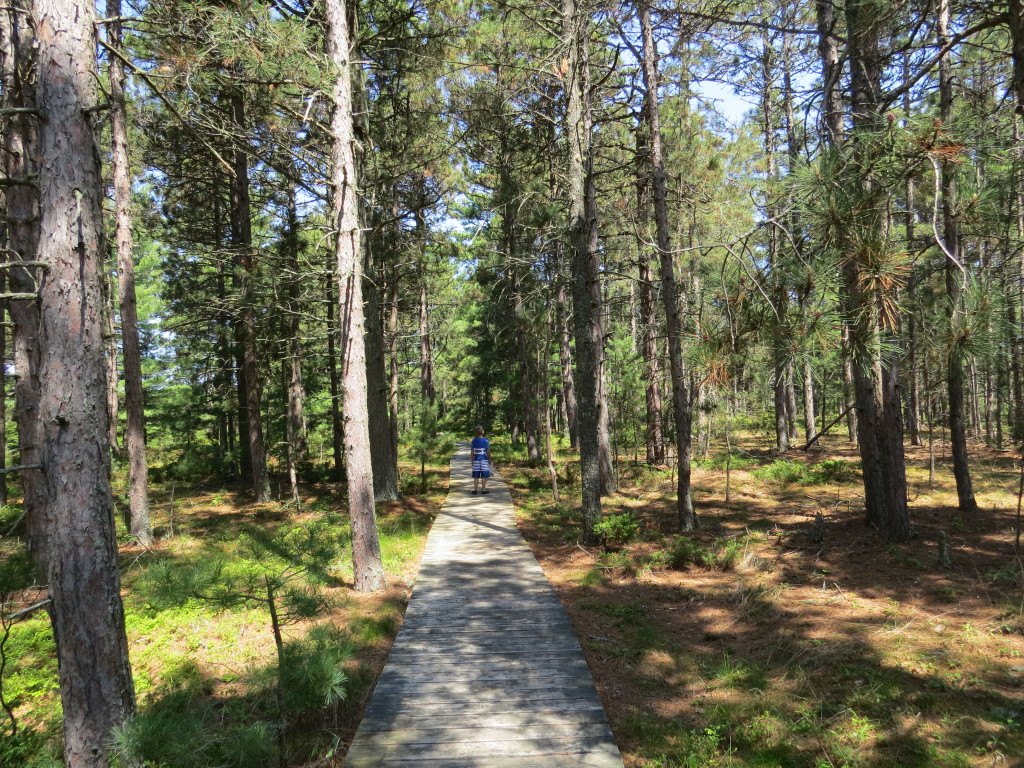 Kudos to Big Bay Town Park and Big Bay State Park for this awesome boardwalk and kudos to the PIWA for having the best habitat preference of all the northwoods Warblers.
Kudos to Big Bay Town Park and Big Bay State Park for this awesome boardwalk and kudos to the PIWA for having the best habitat preference of all the northwoods Warblers.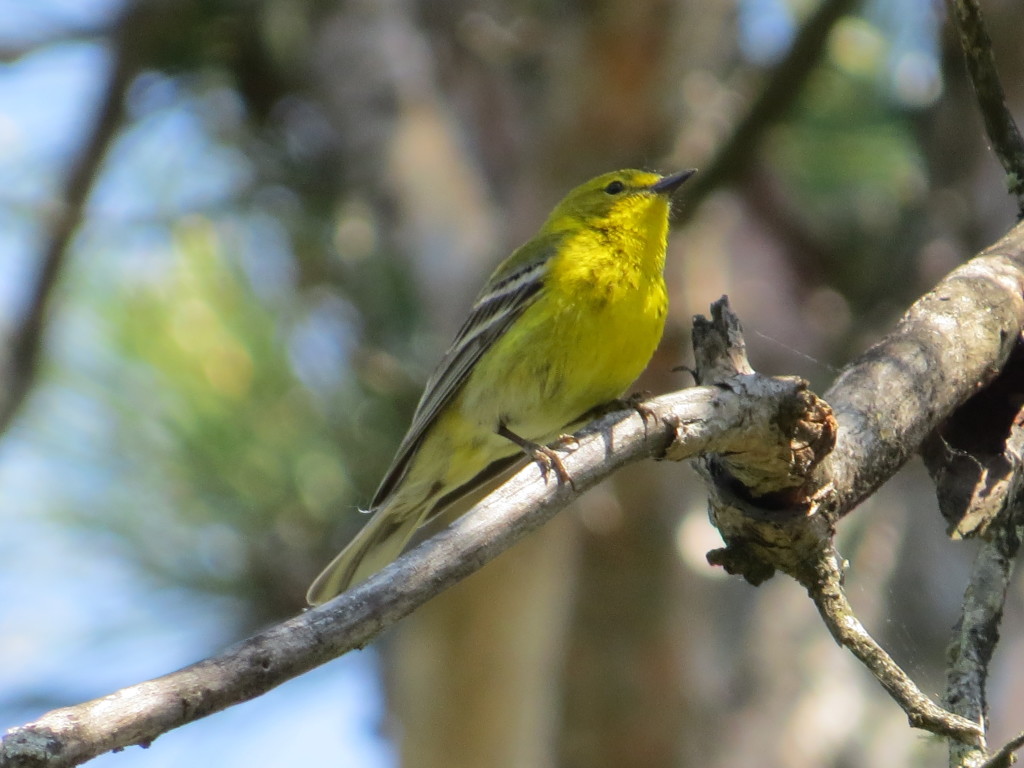
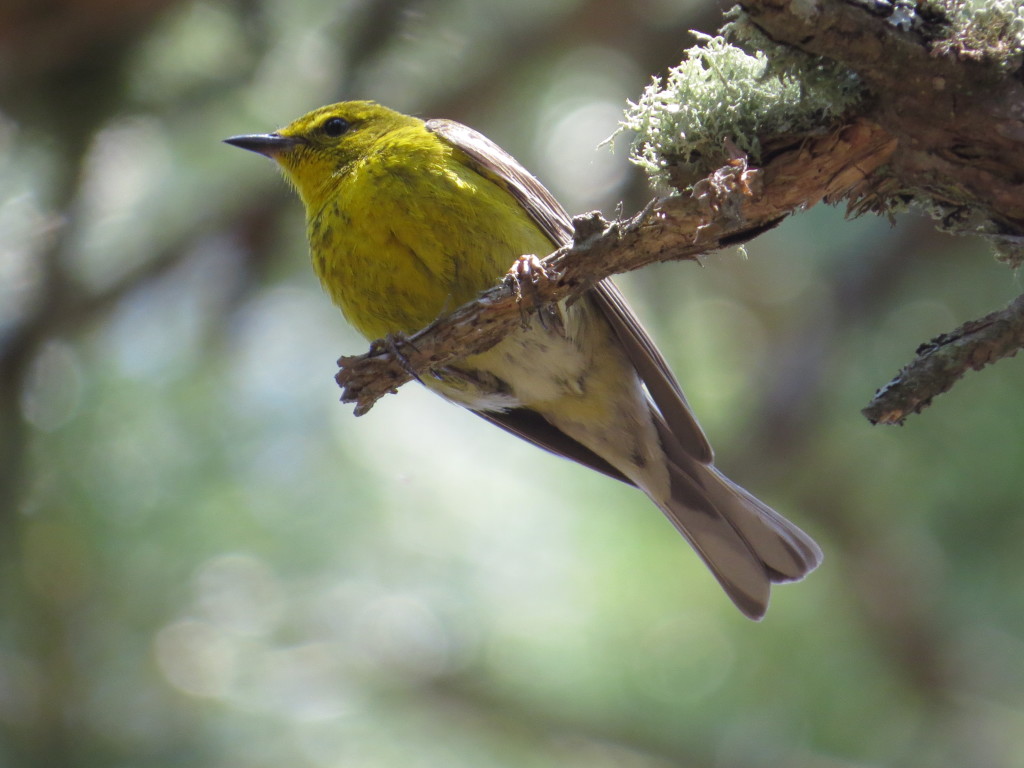
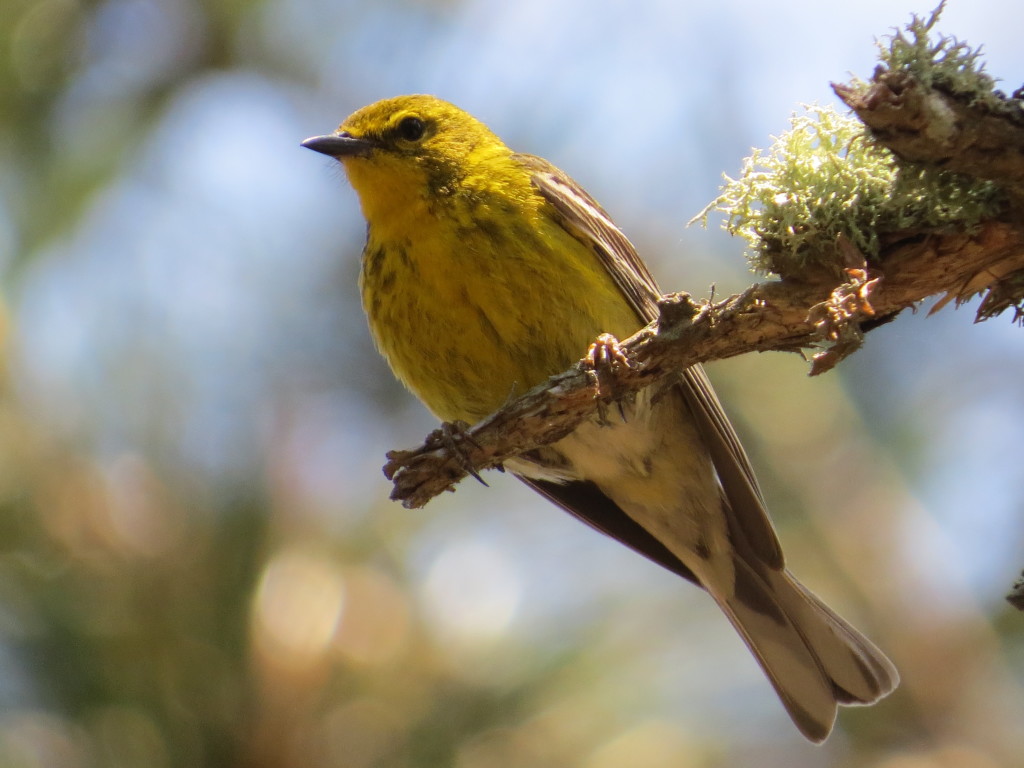
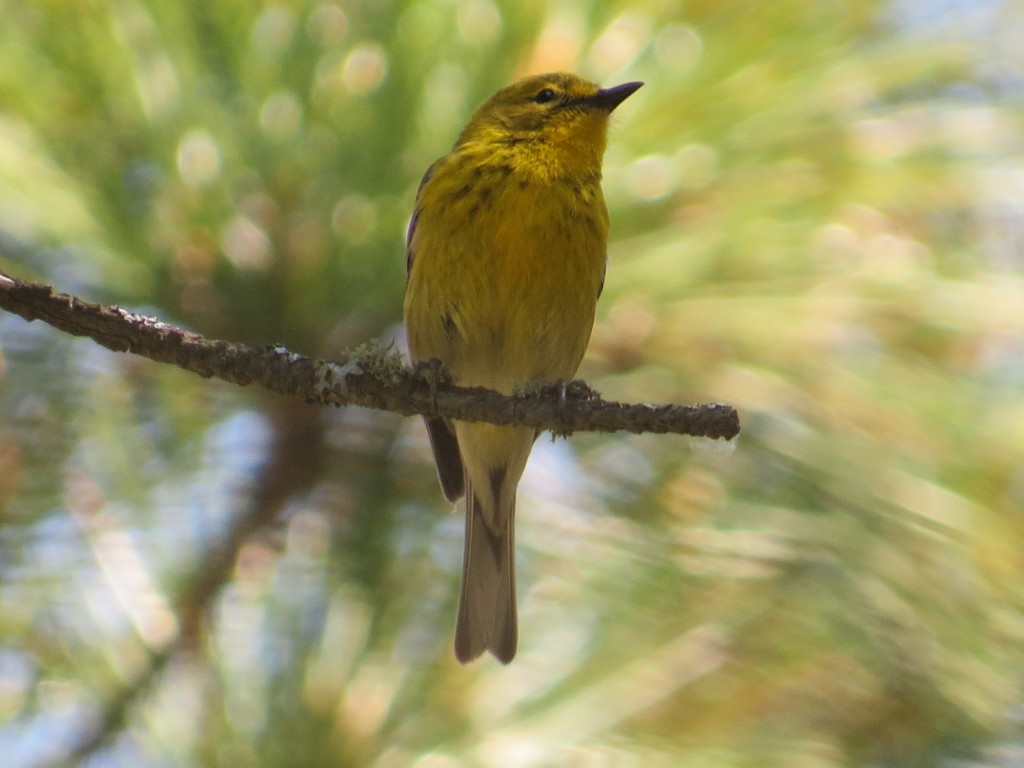
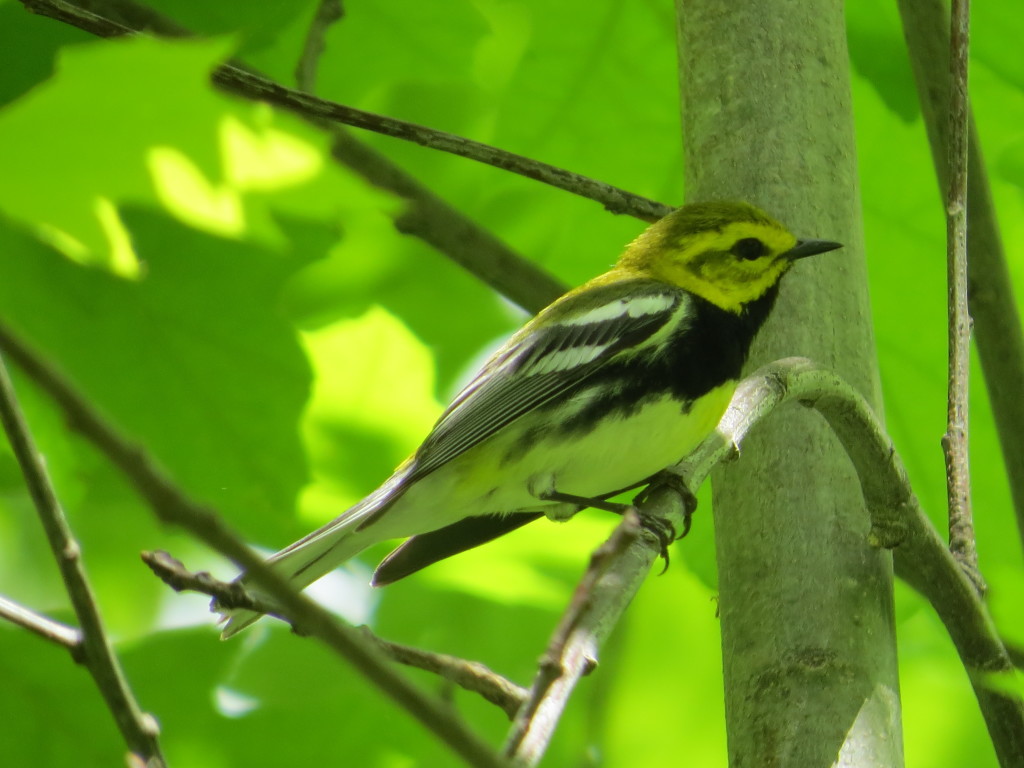
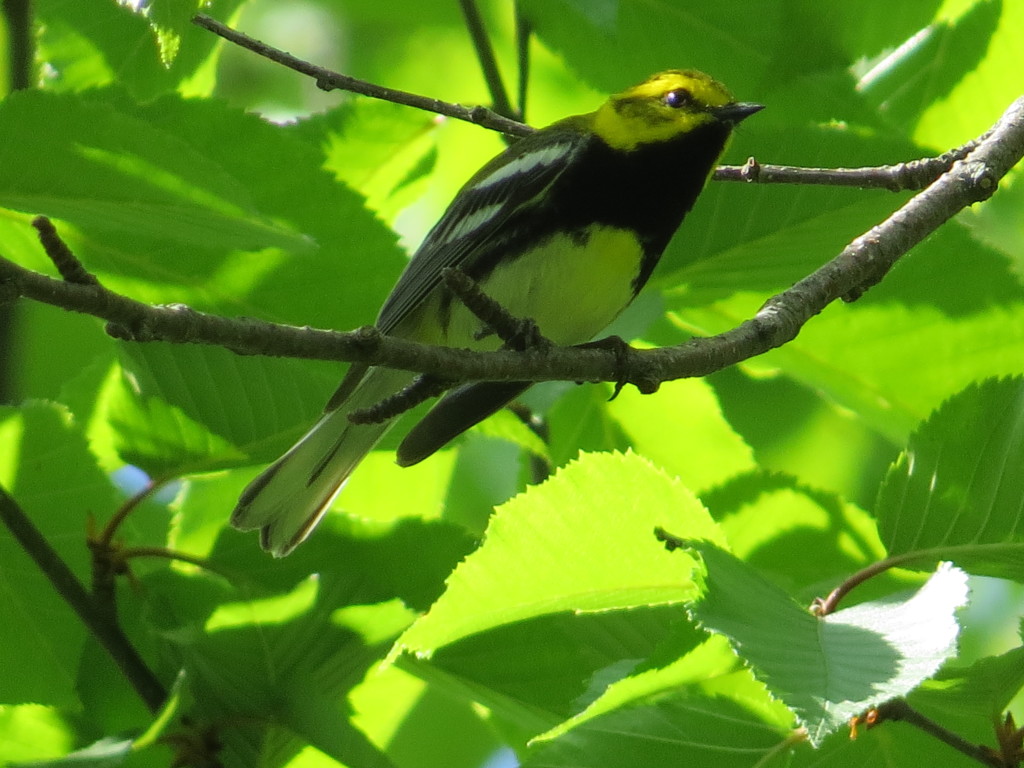 Not only did the Madeline Island Black-throated Greens have a preference for the lesser song, but they also preferred the lesser light, always perching underneath the leaves’ shade and casting them in weird, greenish light.
Not only did the Madeline Island Black-throated Greens have a preference for the lesser song, but they also preferred the lesser light, always perching underneath the leaves’ shade and casting them in weird, greenish light. 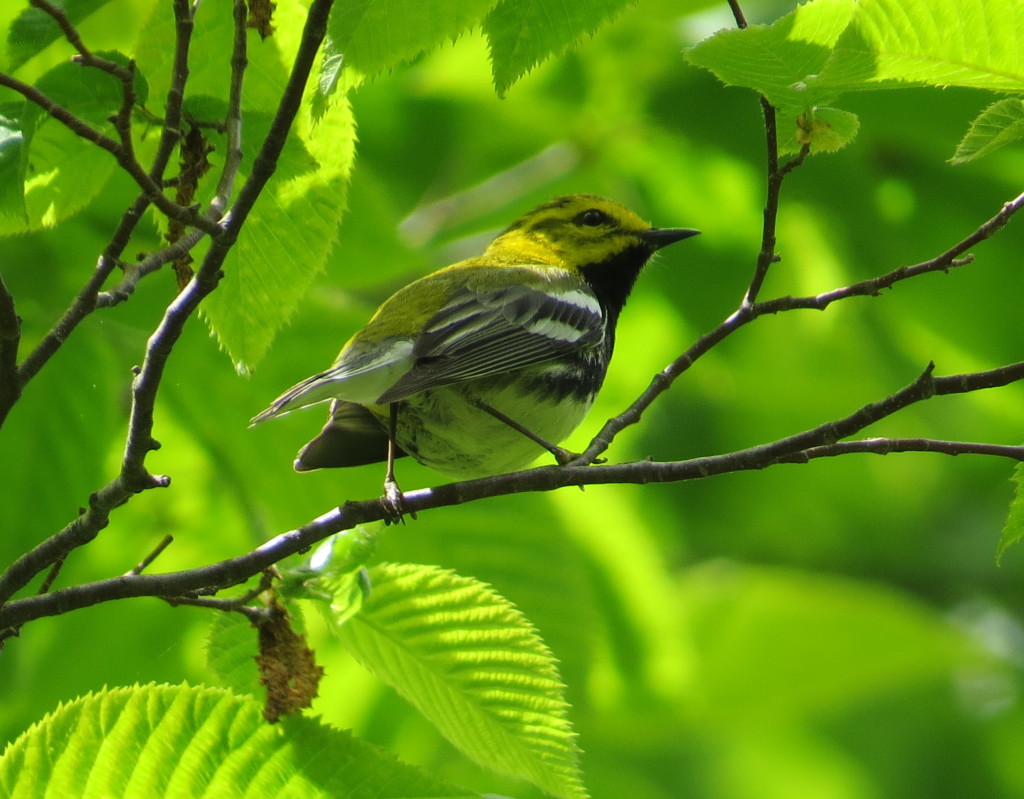 Black-bearded Green Warbler would probably be a more appropriate and much cooler name.
Black-bearded Green Warbler would probably be a more appropriate and much cooler name.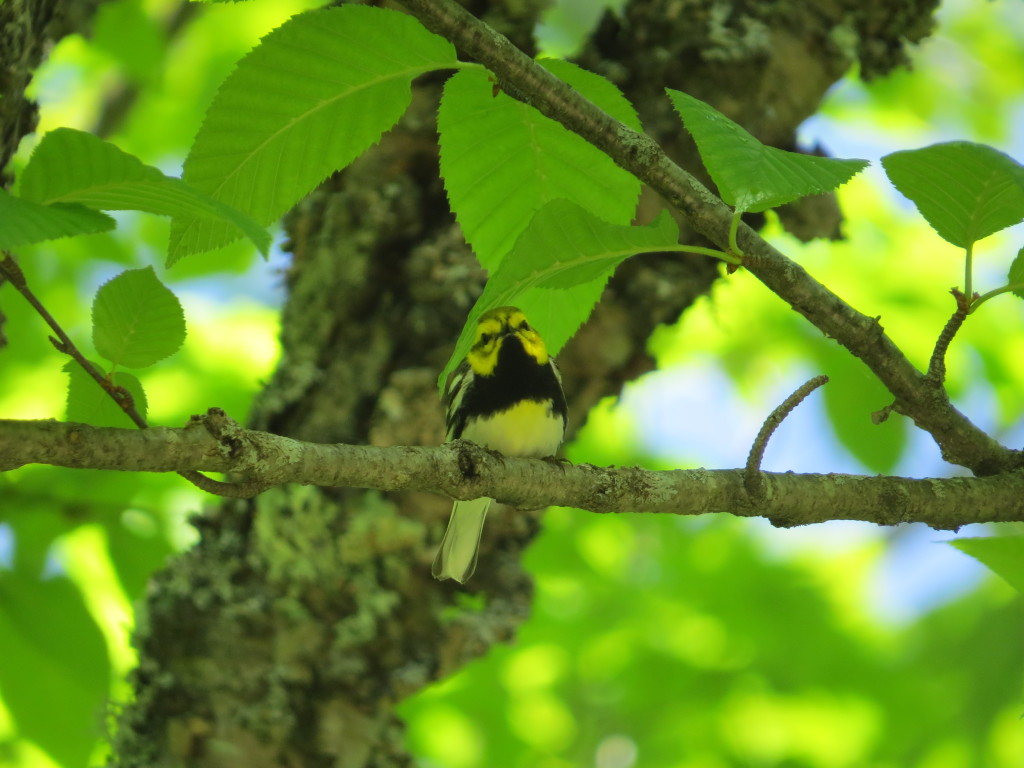
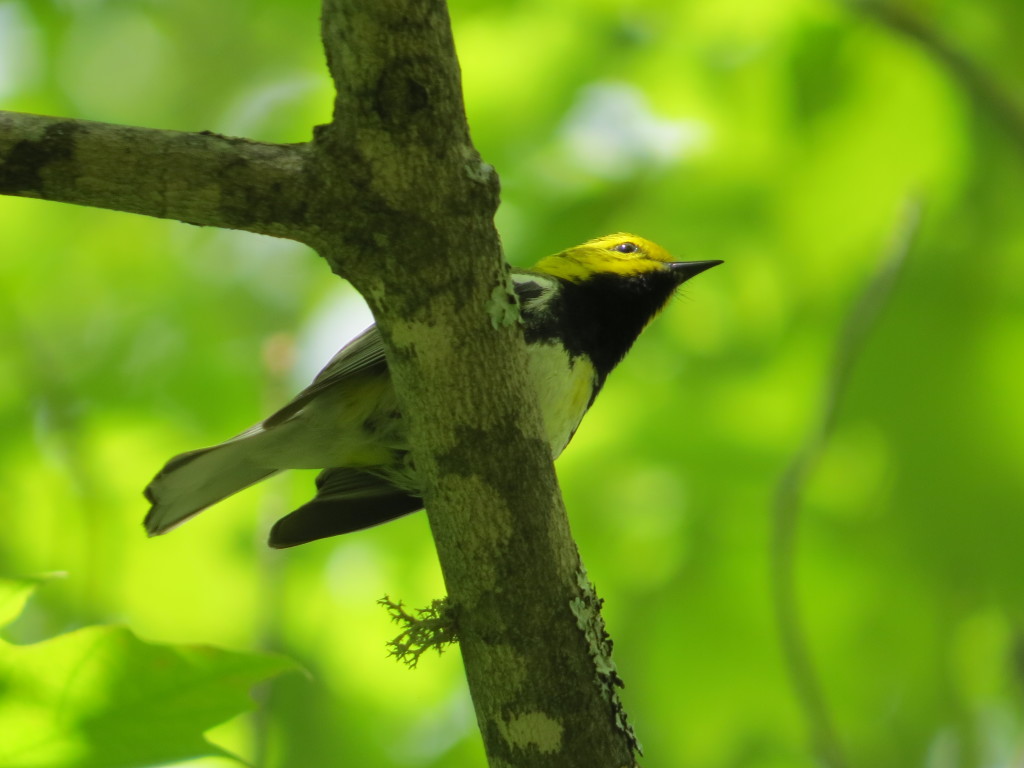 The Black-throated Greens were nice, but they really just whet my appetite for a much, much better Warbler with a black throat. Because of its stunning beauty and scarcity, the Black-throated Blue Warbler was one that I was yearning to see again since my initial viewing in 2013. It was one of my two main birding goals for the trip with the other being the Piping Plovers. I tried real hard to find one on the under-birded Madeline Island. Area birder Nick Anich had described the very particular habitat choice this species likes: mature Maple forests with a high canopy, a fairly open midstory, and a thick understory full of saplings. I’m not sure what it is they like about the Maples, but that is the same type of habitat where the Black-throated Blues are found on Oberg Mountain in Minnesota. Schoolhouse Road on Madeline Island seemed the best I could find to match this habitat description, but I just couldn’t pick out a zoo-zoo-zoo-zoo-zee from the zee-zee-zee-zoo-zees or the zoo-zee-zoo-zoo-zees of the Black-throated Greens.
The Black-throated Greens were nice, but they really just whet my appetite for a much, much better Warbler with a black throat. Because of its stunning beauty and scarcity, the Black-throated Blue Warbler was one that I was yearning to see again since my initial viewing in 2013. It was one of my two main birding goals for the trip with the other being the Piping Plovers. I tried real hard to find one on the under-birded Madeline Island. Area birder Nick Anich had described the very particular habitat choice this species likes: mature Maple forests with a high canopy, a fairly open midstory, and a thick understory full of saplings. I’m not sure what it is they like about the Maples, but that is the same type of habitat where the Black-throated Blues are found on Oberg Mountain in Minnesota. Schoolhouse Road on Madeline Island seemed the best I could find to match this habitat description, but I just couldn’t pick out a zoo-zoo-zoo-zoo-zee from the zee-zee-zee-zoo-zees or the zoo-zee-zoo-zoo-zees of the Black-throated Greens.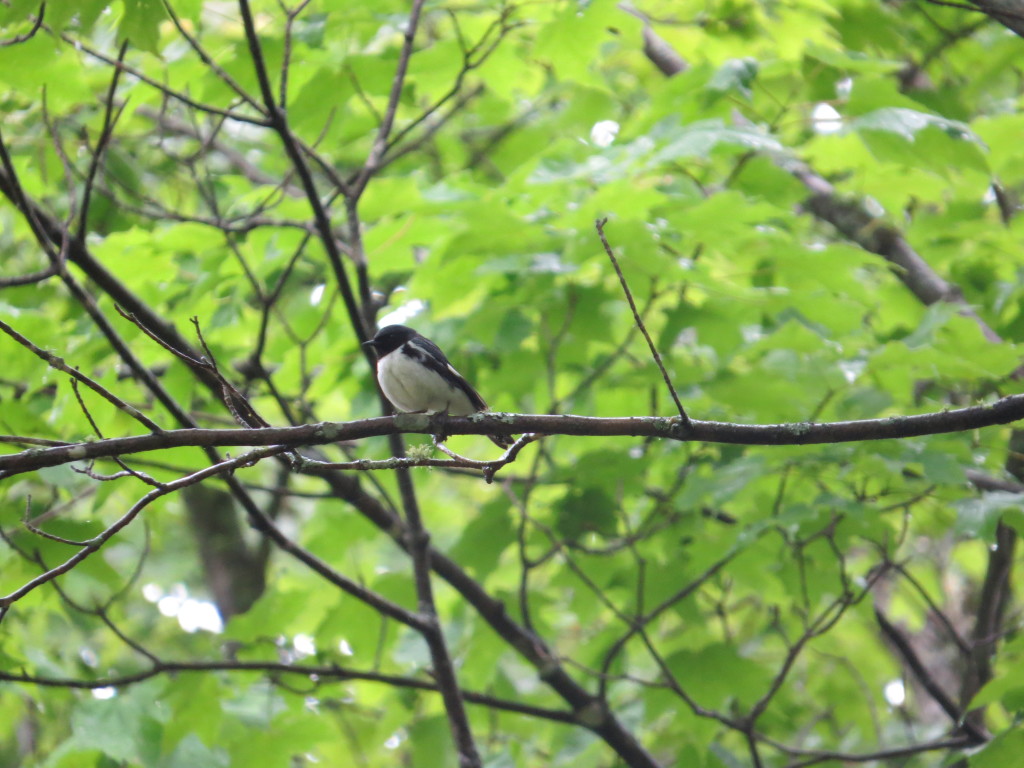 Just as presidential hopefuls are emerging left and right declaring their intentions, I, too, am now making a bold announcement: the Black-throated Blue Warbler is my favorite Warbler. Though I was hooked by the Chestnut-sided, though I’ve stood in awe of the Blackburnian, and though I’ve been dazzled by Painted Redstarts at my feet, the Black-throated Blue is simply the best in my book. I have yet to see the Red-faced, but I don’t even think that beauty could change my mind. My wardrobe is disproportionately blue after all.
Just as presidential hopefuls are emerging left and right declaring their intentions, I, too, am now making a bold announcement: the Black-throated Blue Warbler is my favorite Warbler. Though I was hooked by the Chestnut-sided, though I’ve stood in awe of the Blackburnian, and though I’ve been dazzled by Painted Redstarts at my feet, the Black-throated Blue is simply the best in my book. I have yet to see the Red-faced, but I don’t even think that beauty could change my mind. My wardrobe is disproportionately blue after all.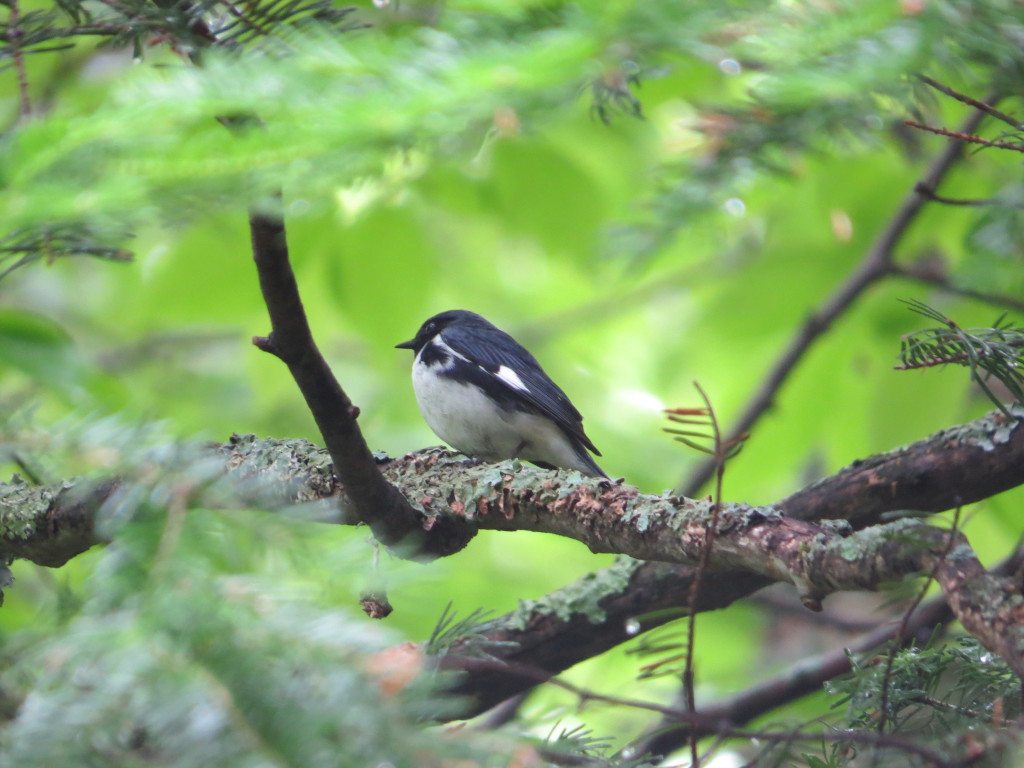
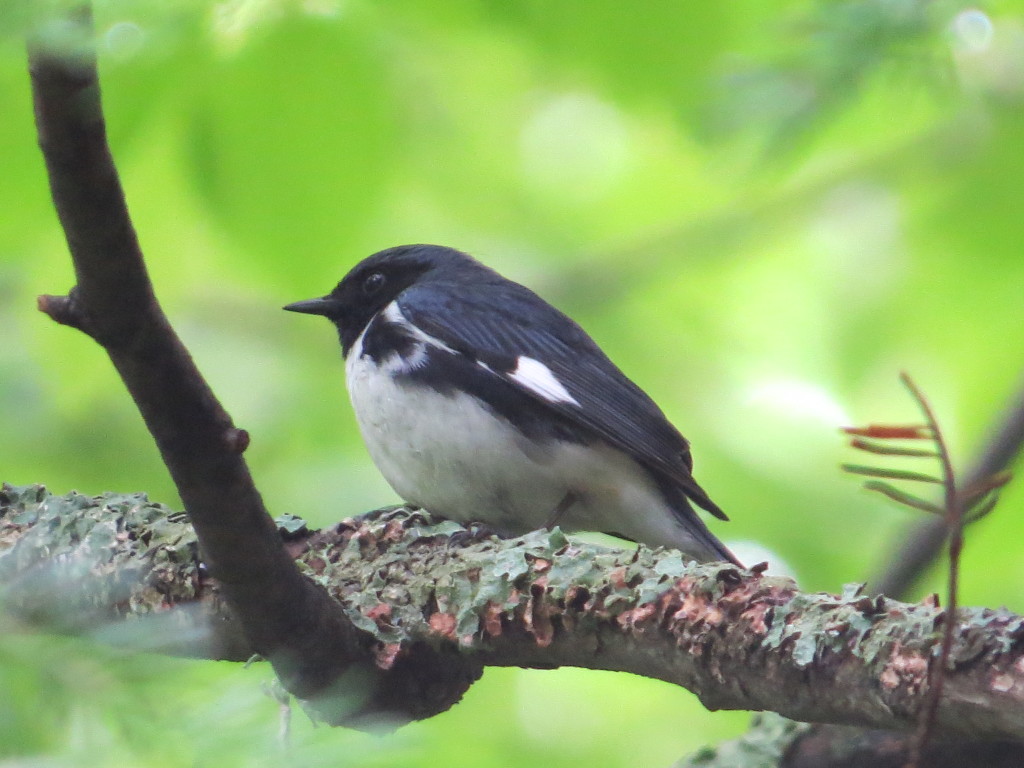
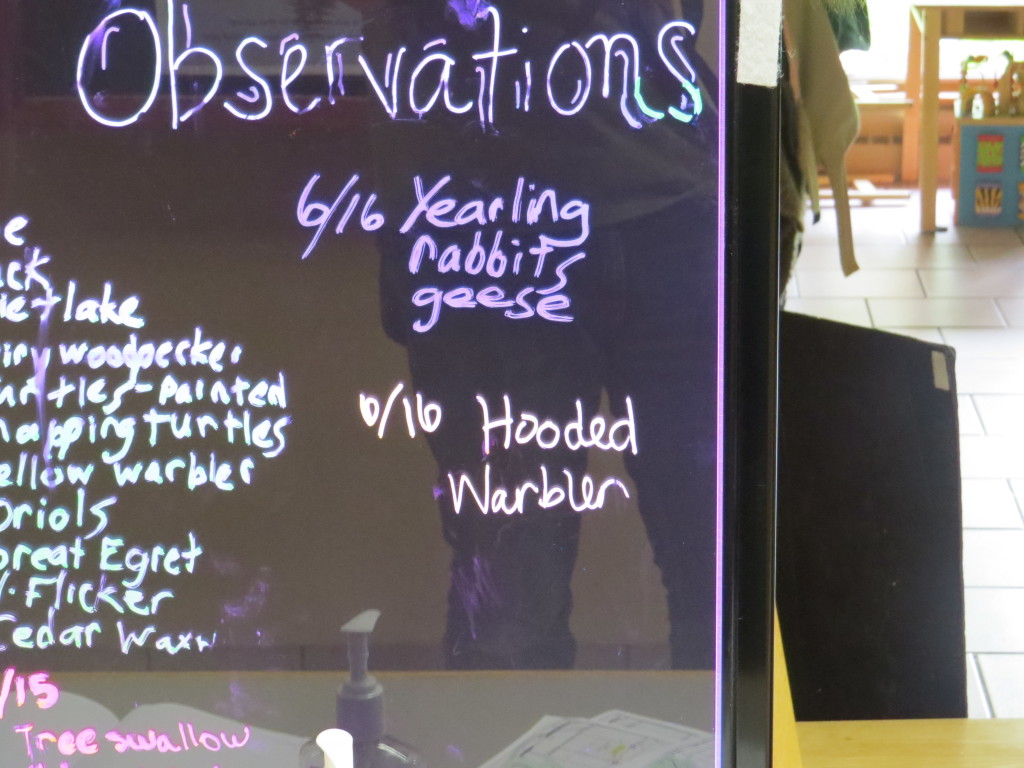
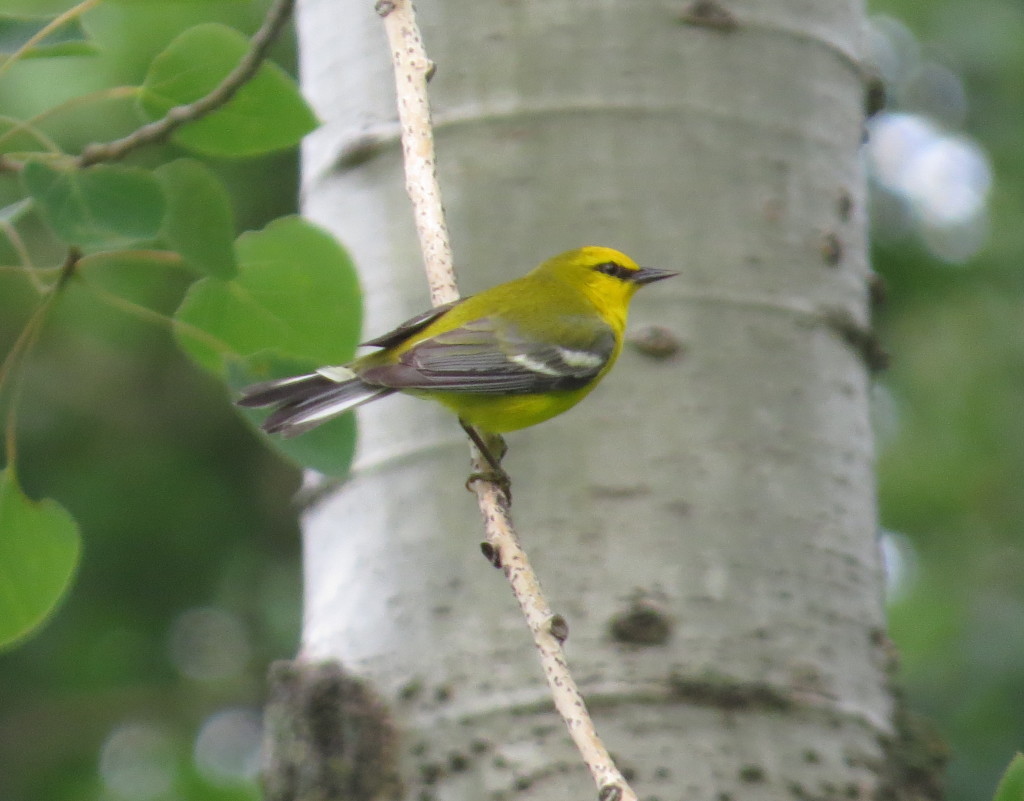
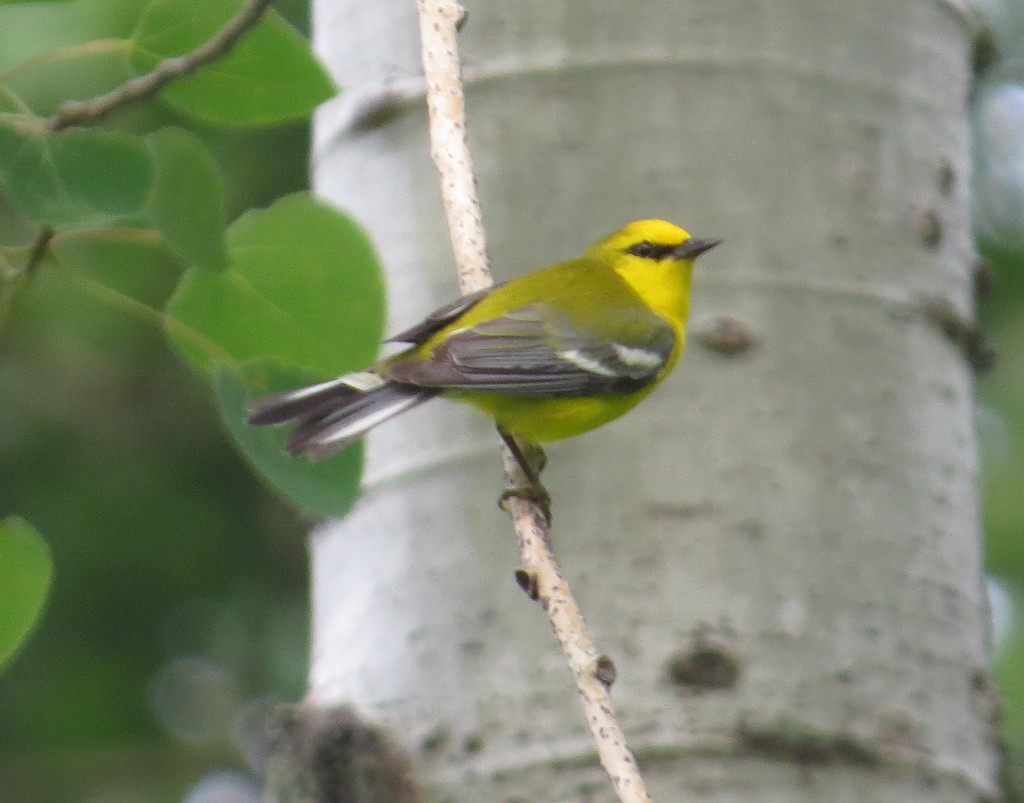 There are more Warblers on the horizon as I have since made two post-MI trips to northern MN with a third one coming this weekend. But first, what could make a Woodpecker chase so compelling?
There are more Warblers on the horizon as I have since made two post-MI trips to northern MN with a third one coming this weekend. But first, what could make a Woodpecker chase so compelling?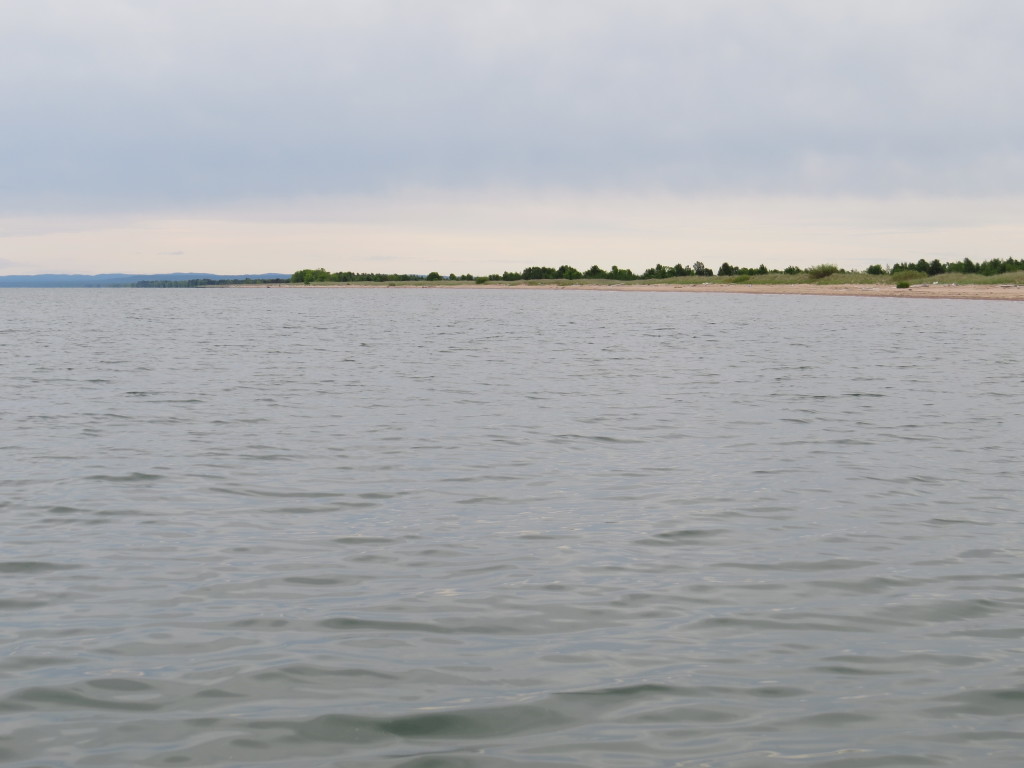
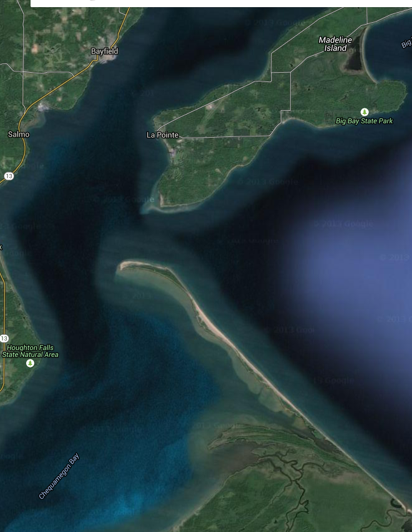
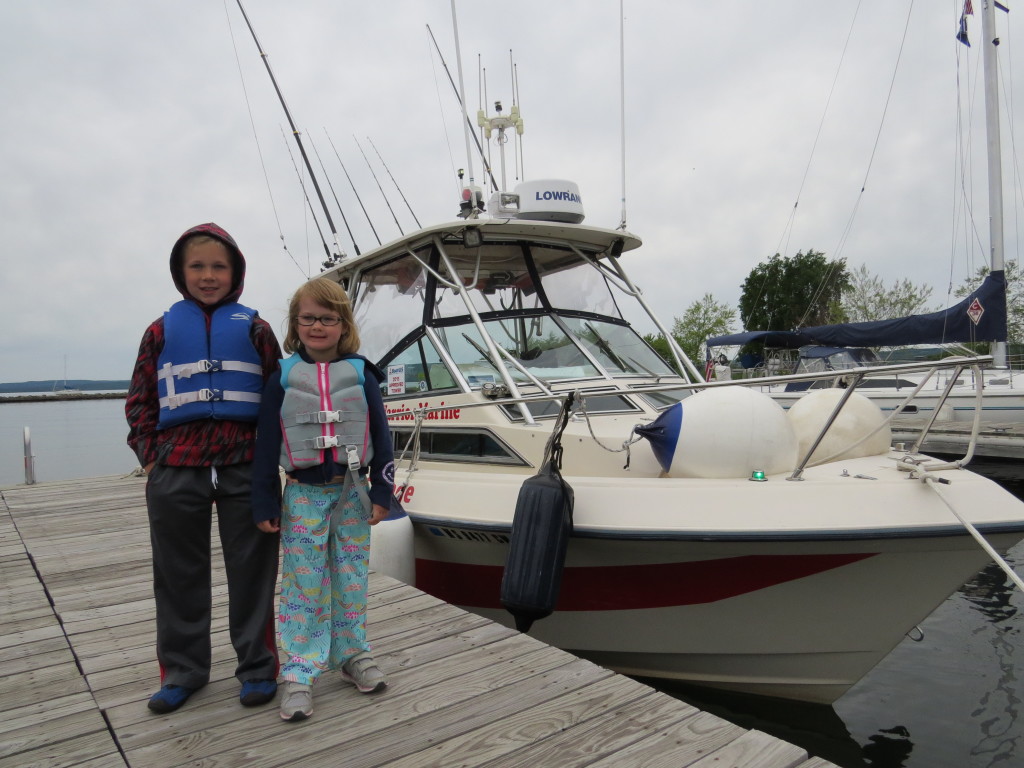 This was definitely the most I’ve paid for a single life bird. Other trips, like Arizona, are much more expensive, but the huge numbers of lifers down there makes the cost per bird pretty reasonable. In any birding trip, though, you just can’t put a price on the side-benefits, like a family speed-boat ride on Lake Superior.
This was definitely the most I’ve paid for a single life bird. Other trips, like Arizona, are much more expensive, but the huge numbers of lifers down there makes the cost per bird pretty reasonable. In any birding trip, though, you just can’t put a price on the side-benefits, like a family speed-boat ride on Lake Superior.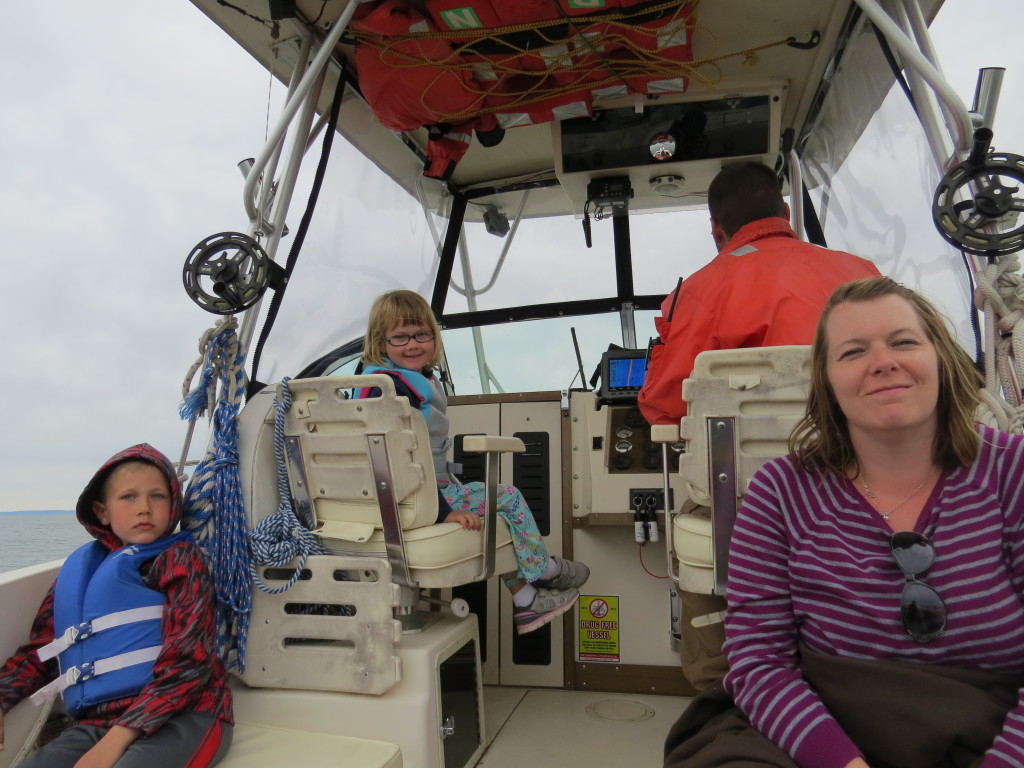
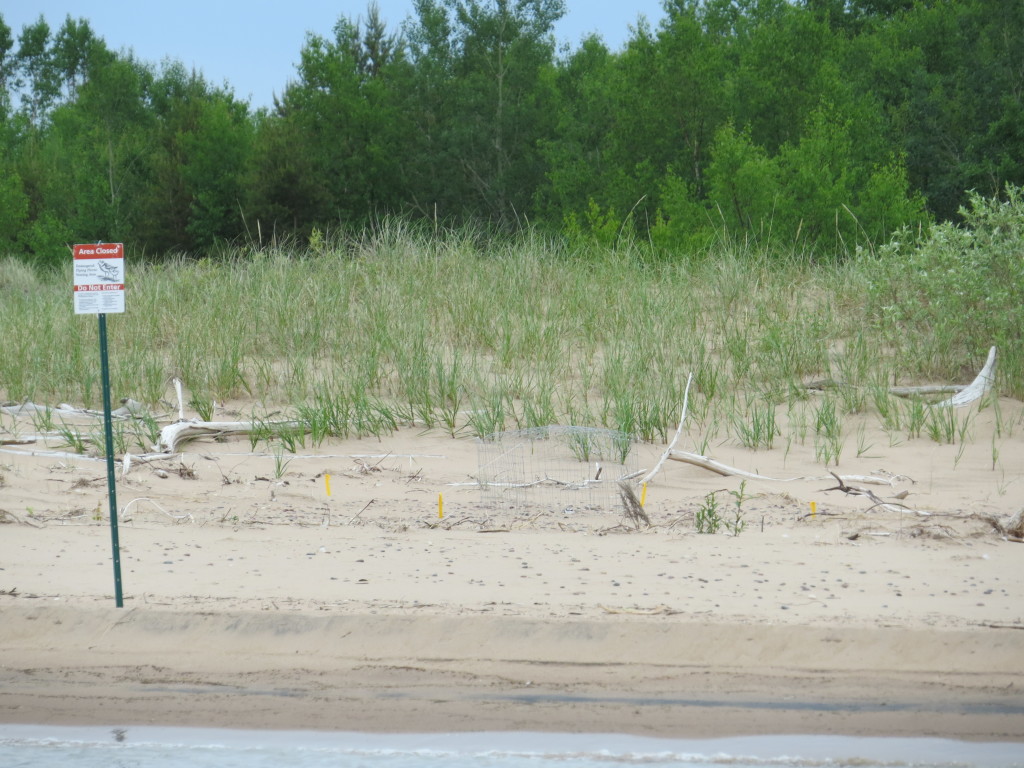 Here’s a cropped view of the above photo showing the male Piping Plover taking his turn on the nest.
Here’s a cropped view of the above photo showing the male Piping Plover taking his turn on the nest. 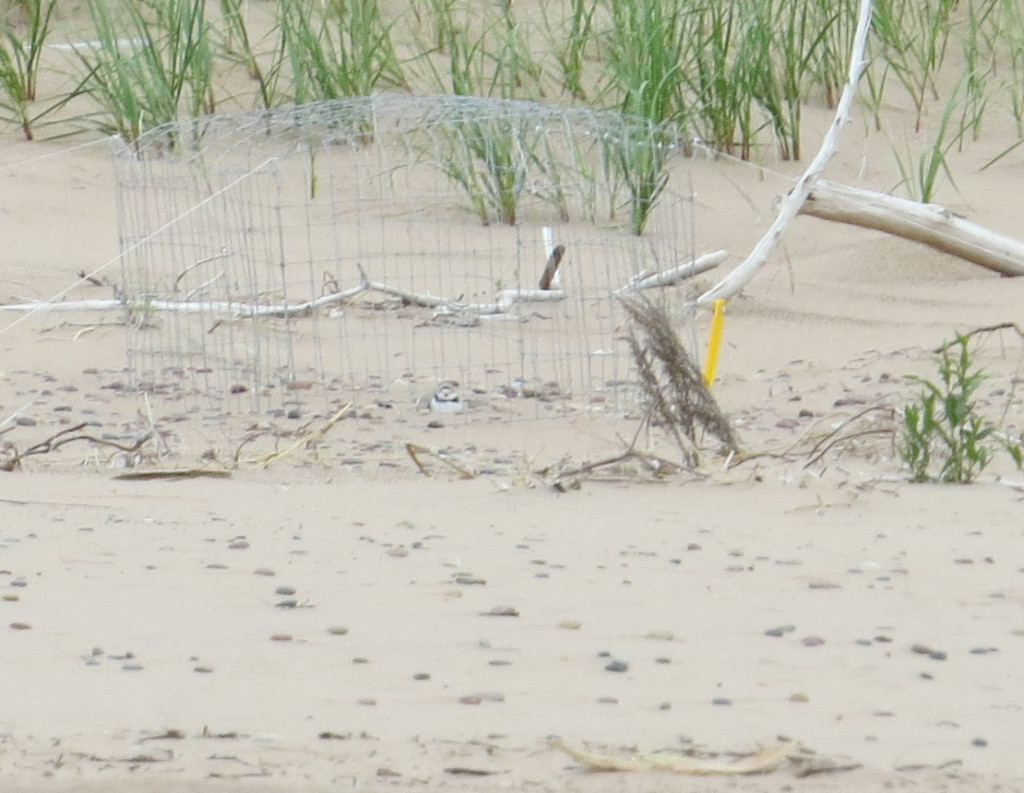 The remoteness of Long Island coupled with miles of perfect beach habitat make this an ideal place for the Piping Plovers to set up shop. Even still, the NPS takes no chances. Since Long Island (a peninsula really) is only accessible by boat, the psychological fencing is placed right at the water’s edge to ward off any beaching watercraft.
The remoteness of Long Island coupled with miles of perfect beach habitat make this an ideal place for the Piping Plovers to set up shop. Even still, the NPS takes no chances. Since Long Island (a peninsula really) is only accessible by boat, the psychological fencing is placed right at the water’s edge to ward off any beaching watercraft.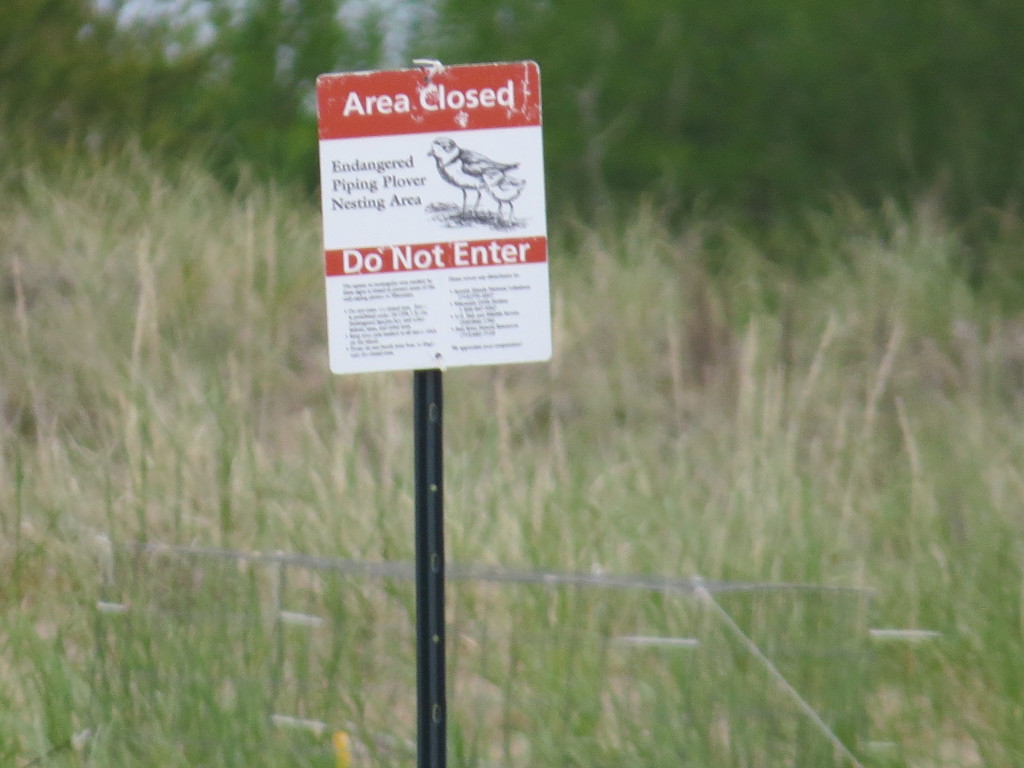
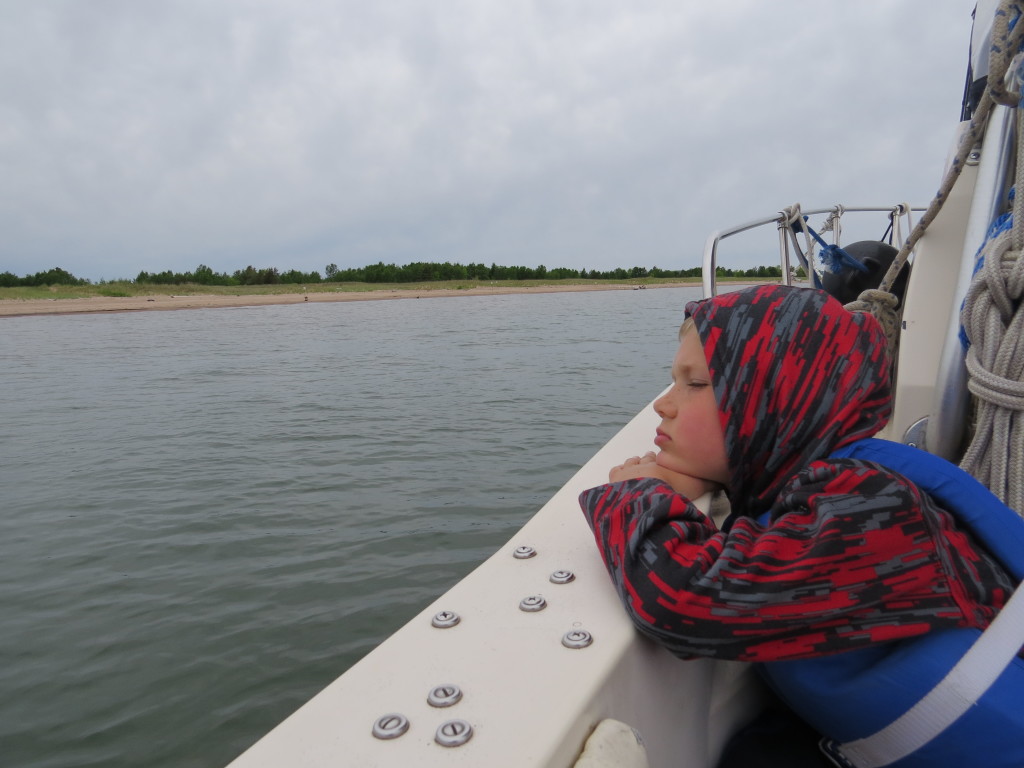
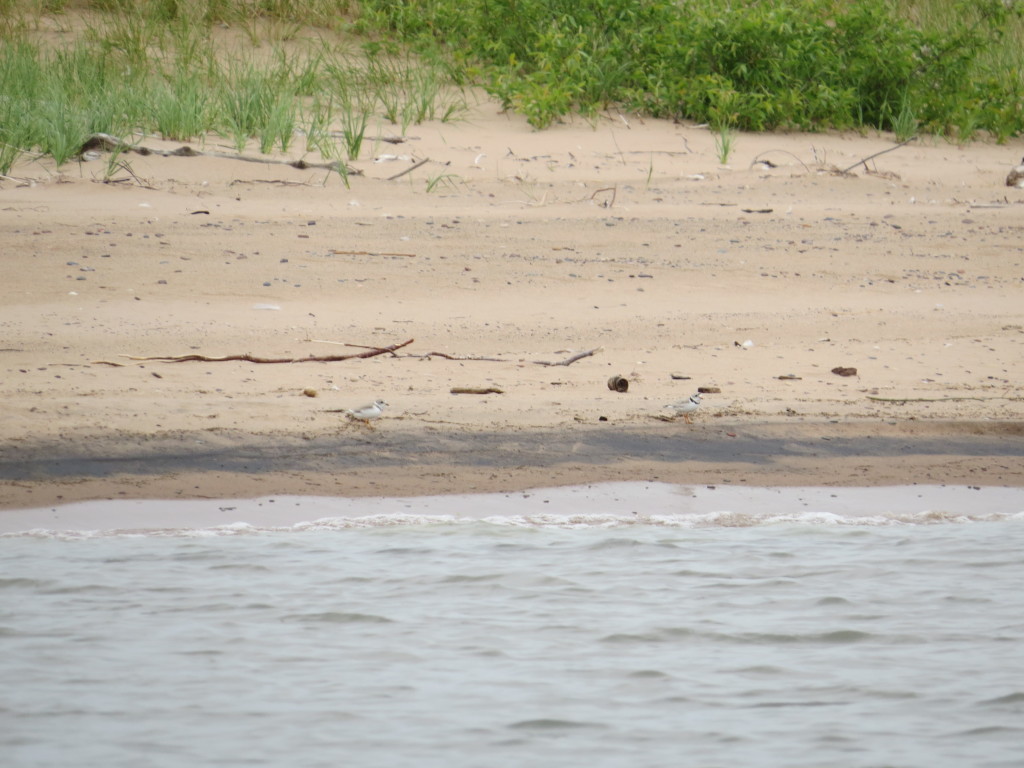
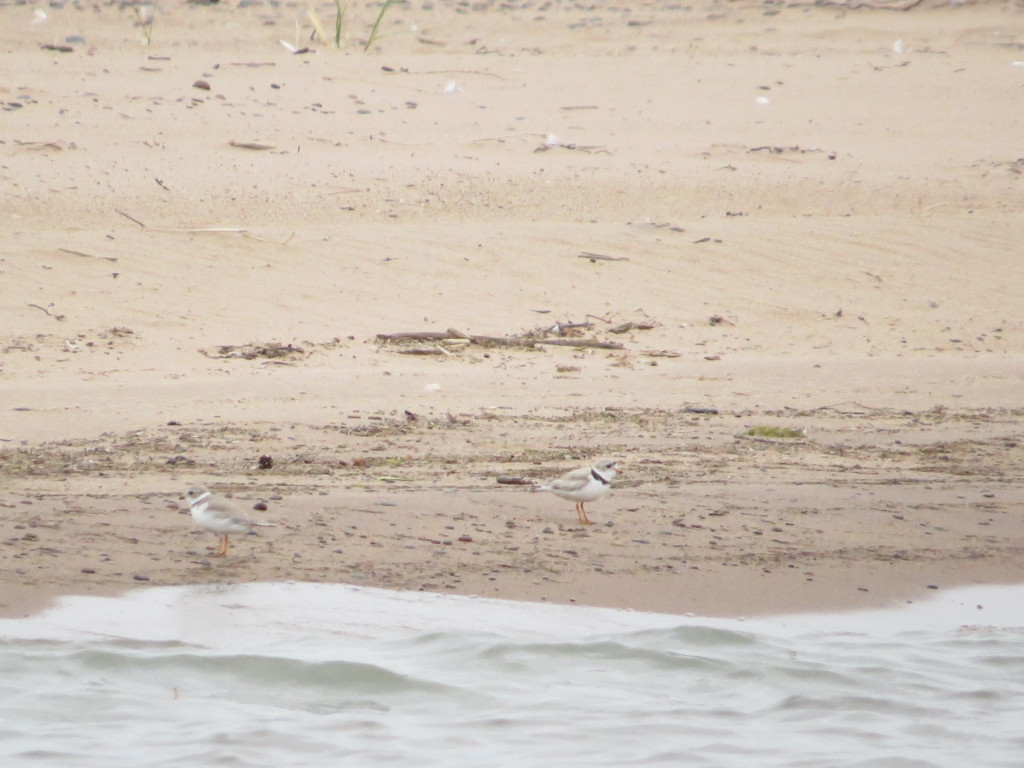 My photos are not the best, but honestly, I’d be an irresponsible birder if I did show you great photos from this outing because it would mean I was close to them. The well-being of these birds–the well-being of a species–comes first. And these guys need a lot of space to do well. Even so, I got some bloggable shots of both sexes. Ladies first.
My photos are not the best, but honestly, I’d be an irresponsible birder if I did show you great photos from this outing because it would mean I was close to them. The well-being of these birds–the well-being of a species–comes first. And these guys need a lot of space to do well. Even so, I got some bloggable shots of both sexes. Ladies first.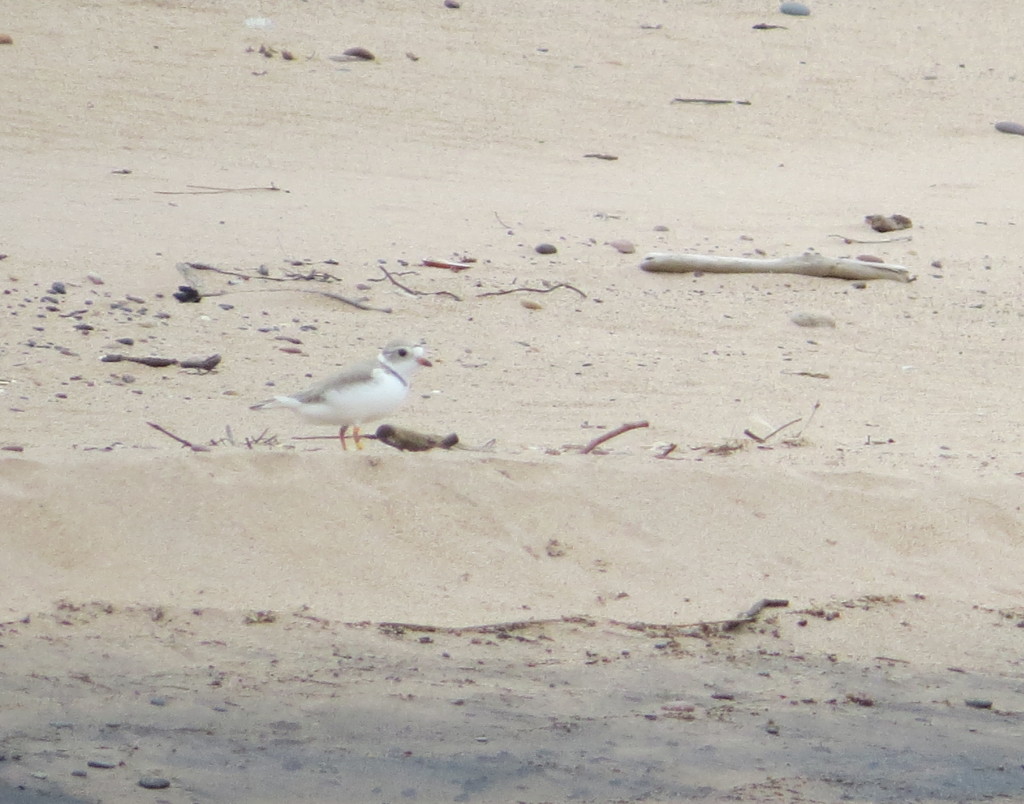
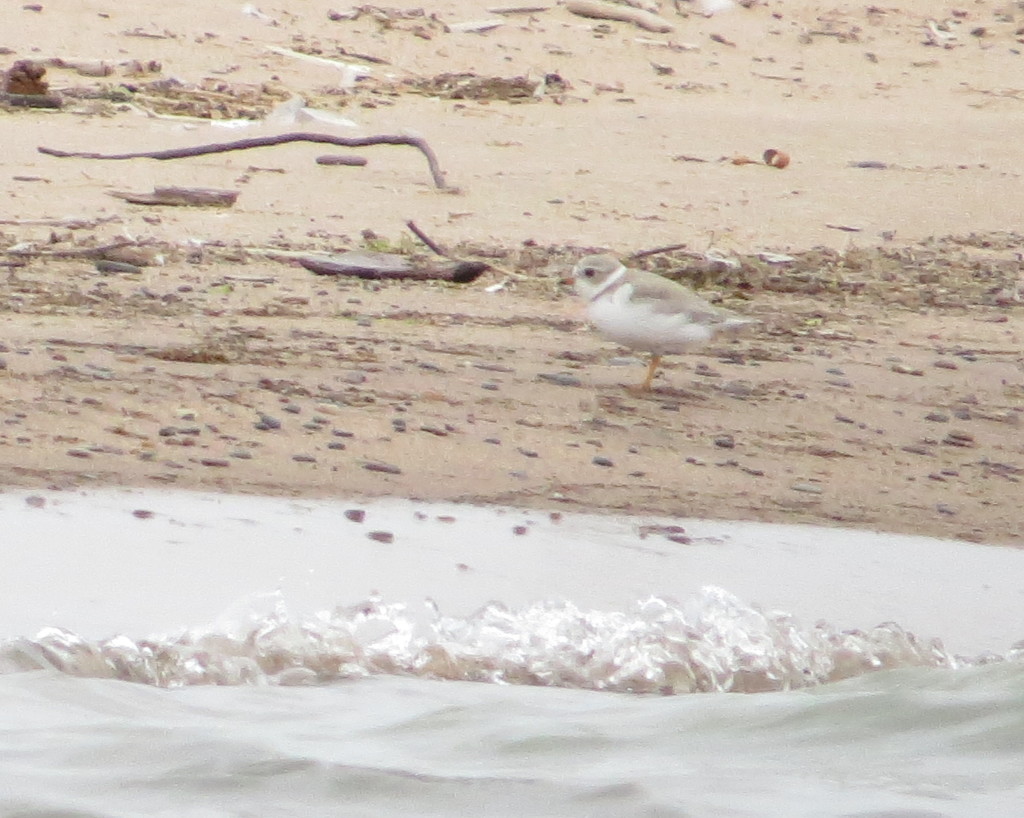
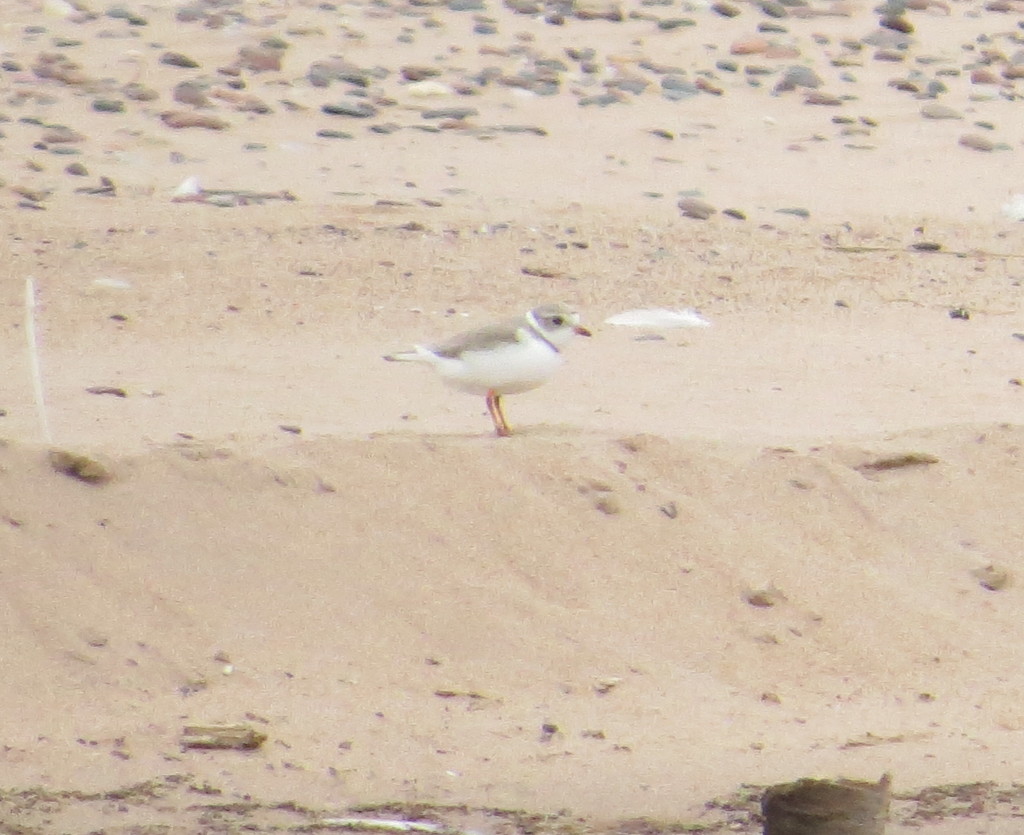
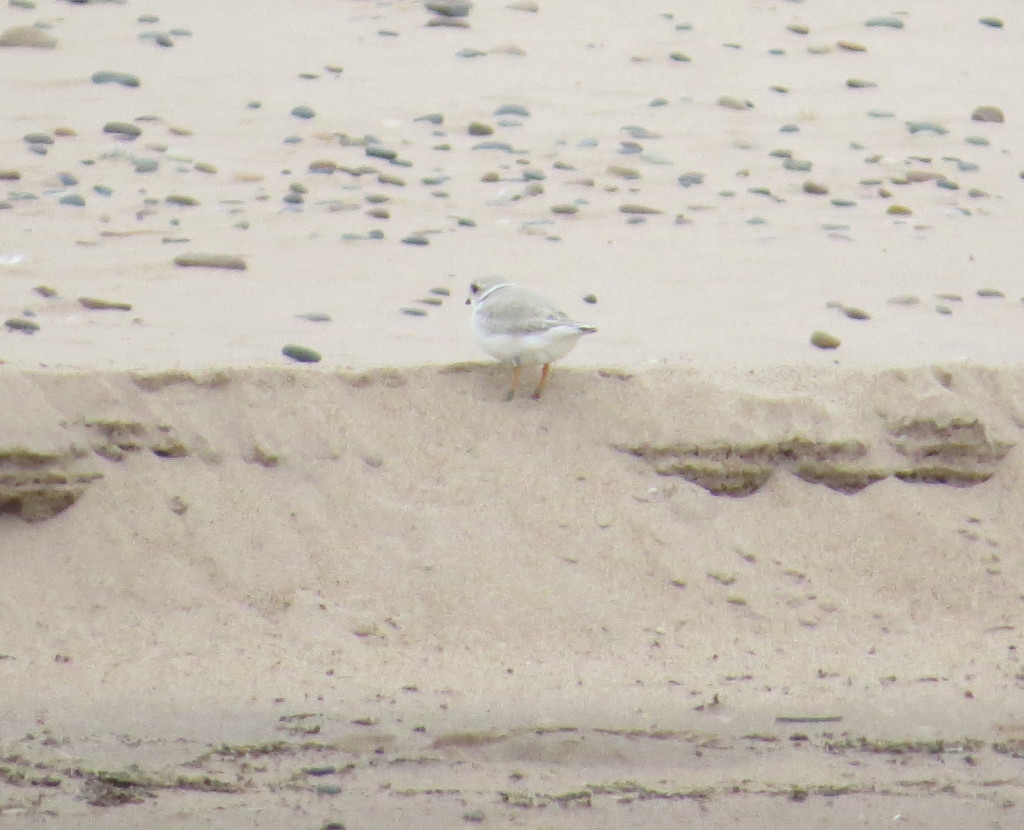
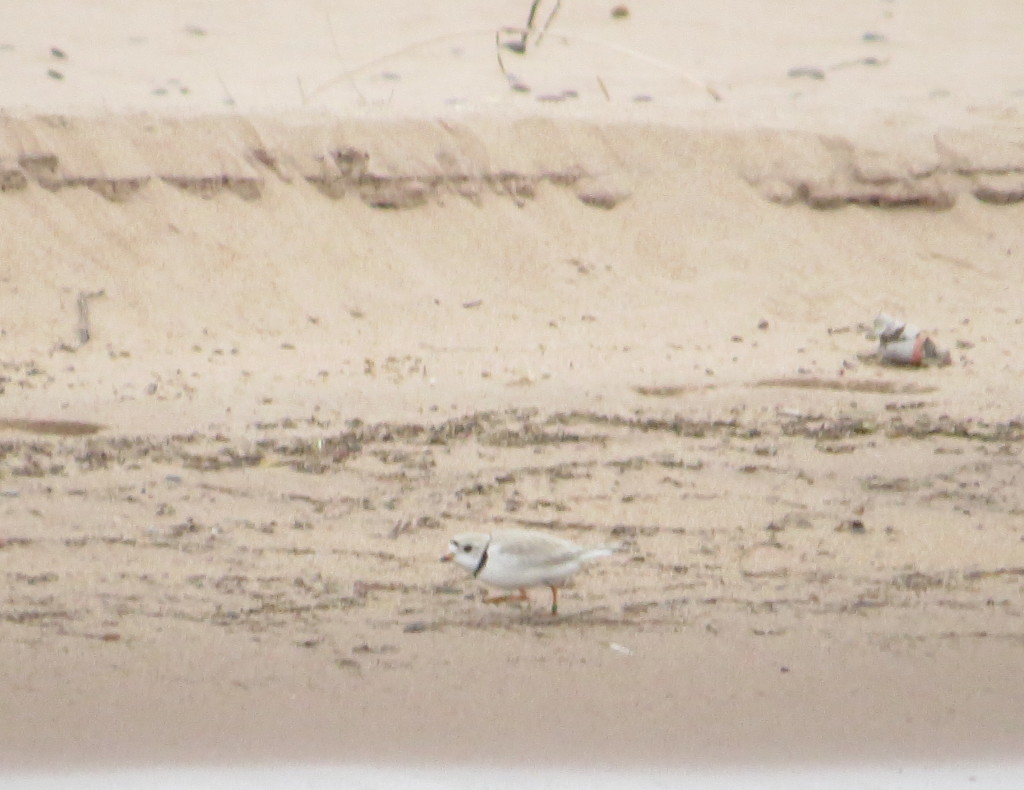
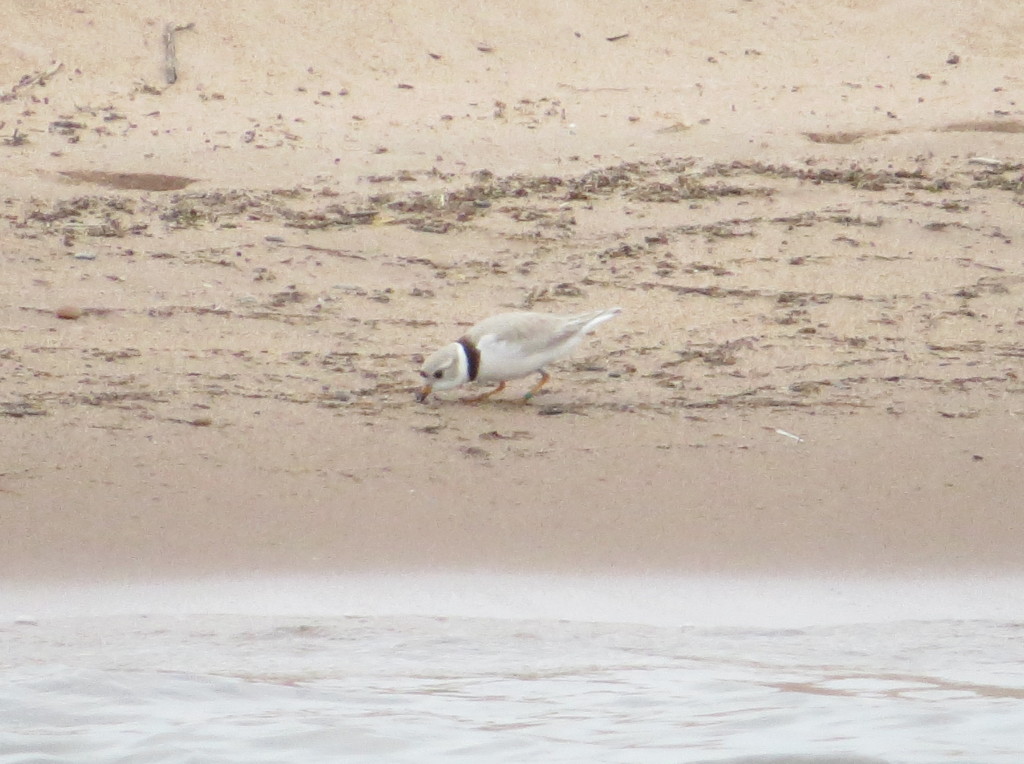
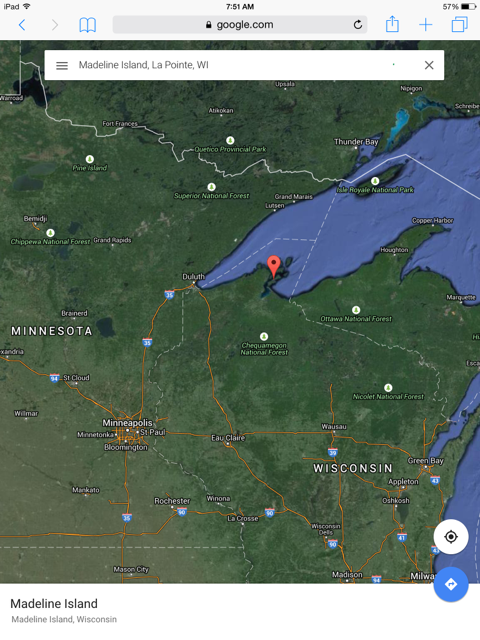
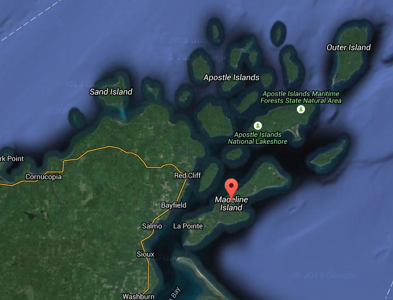

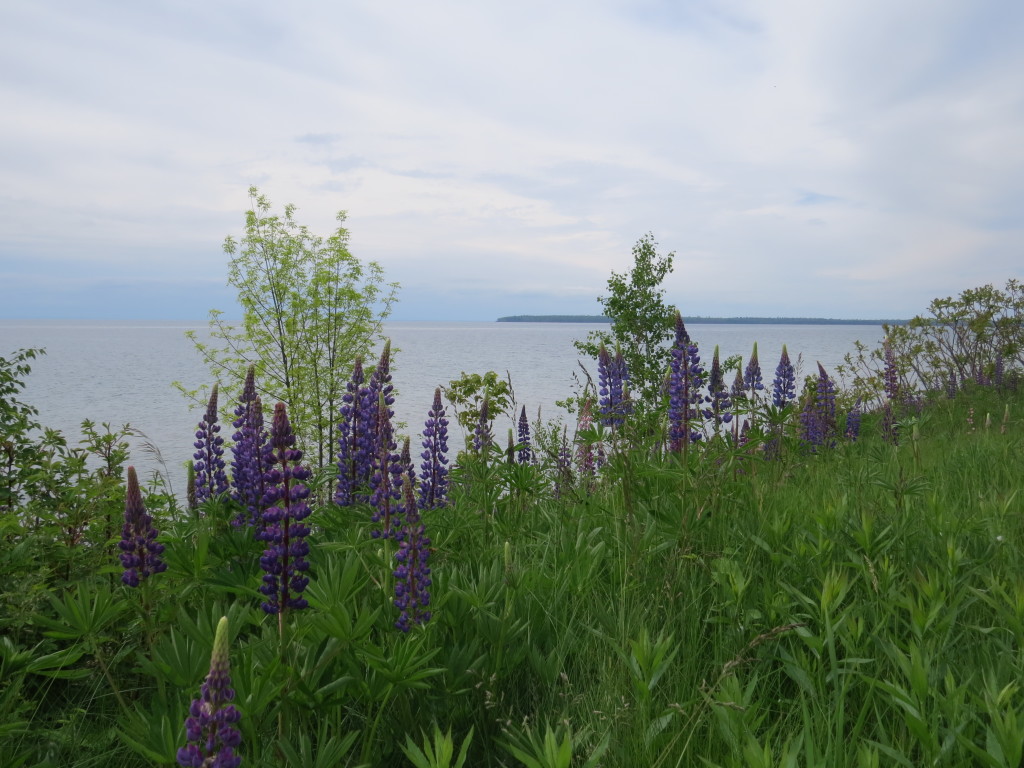
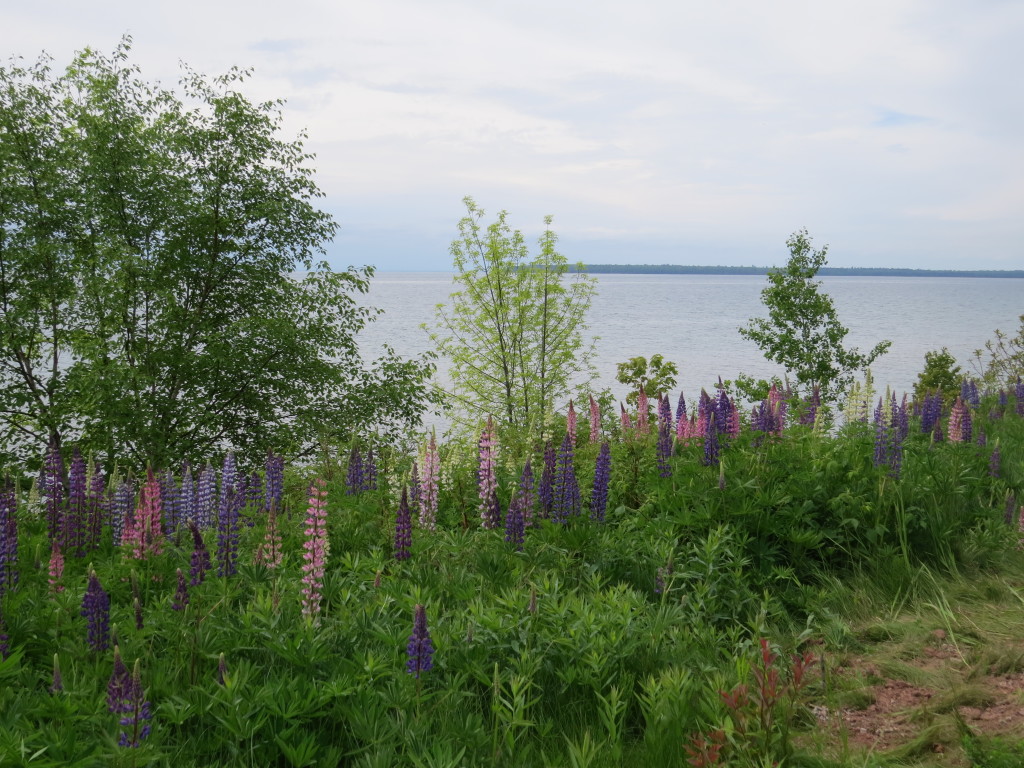
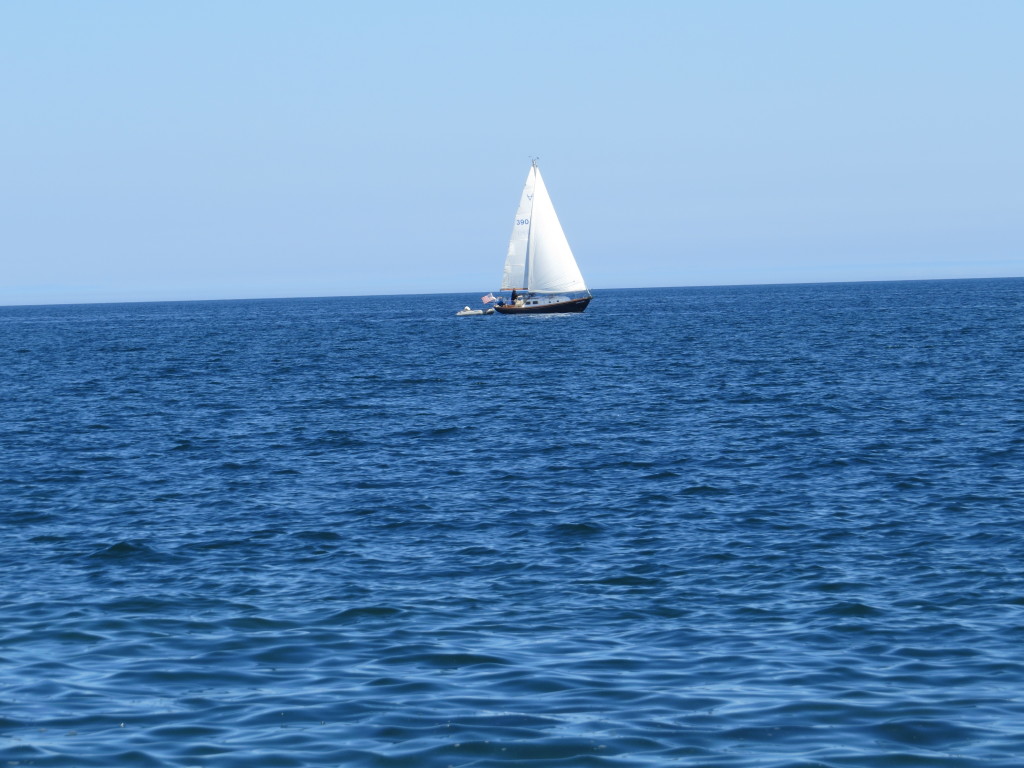 This place of adrenaline.
This place of adrenaline.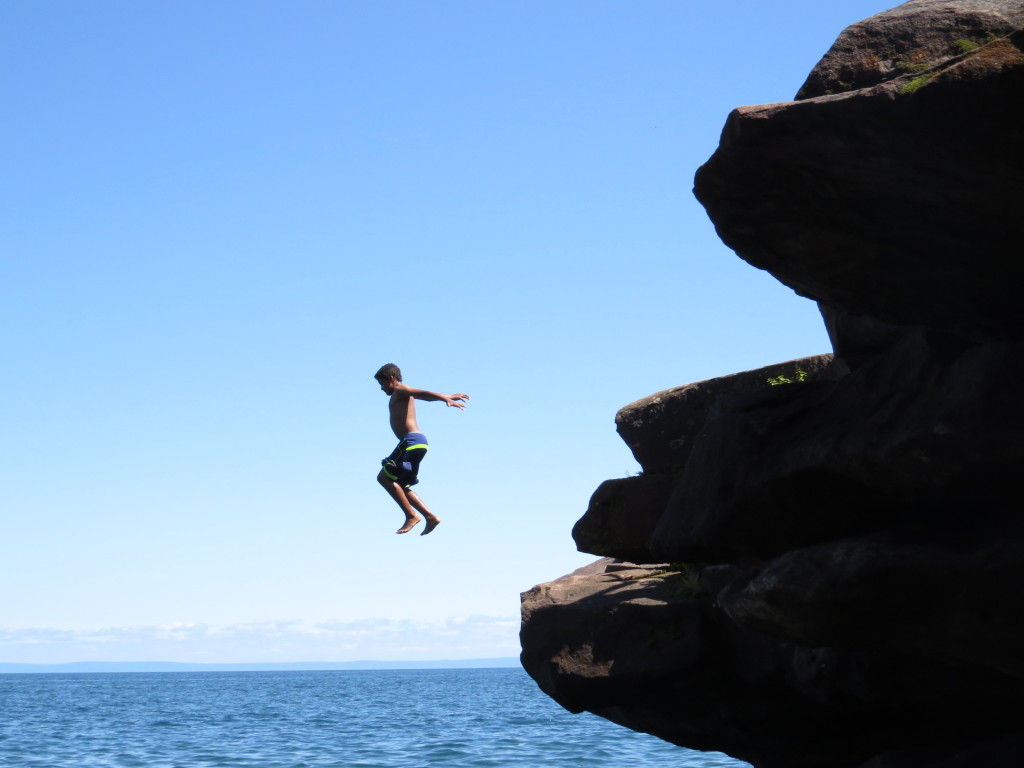
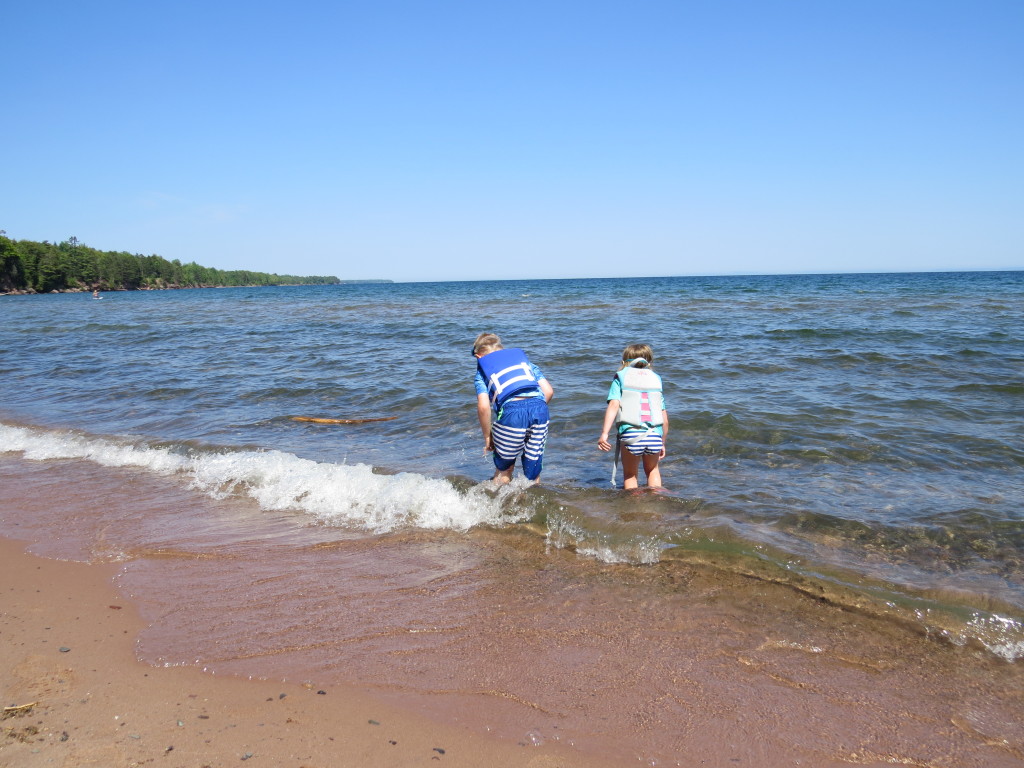
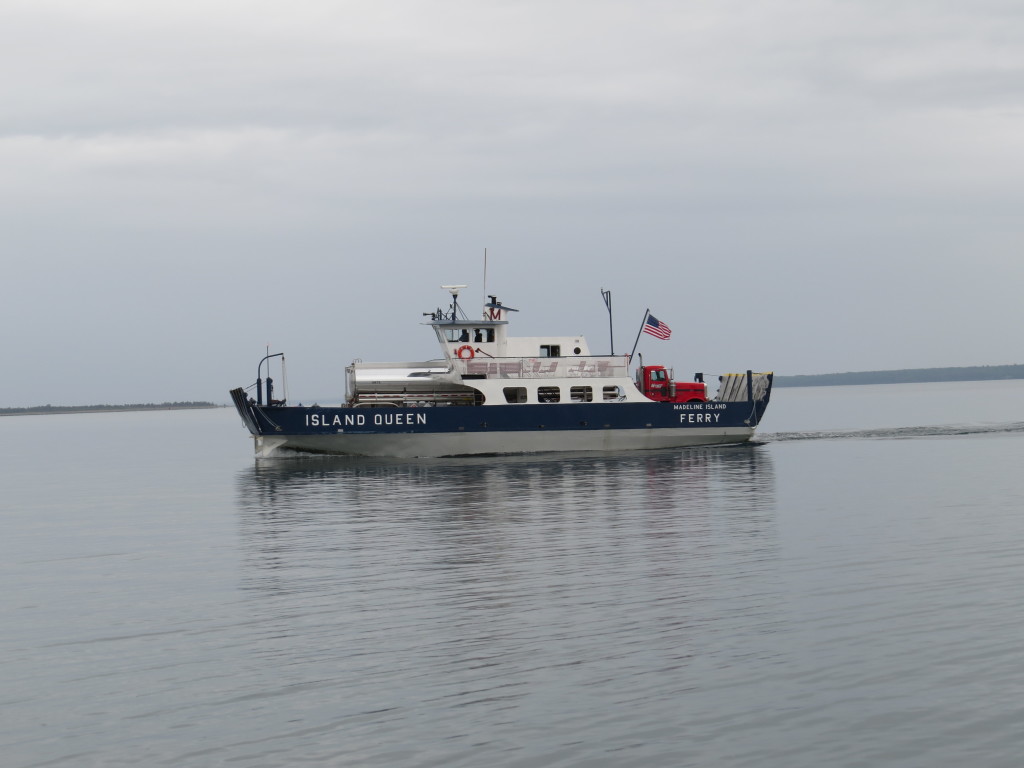
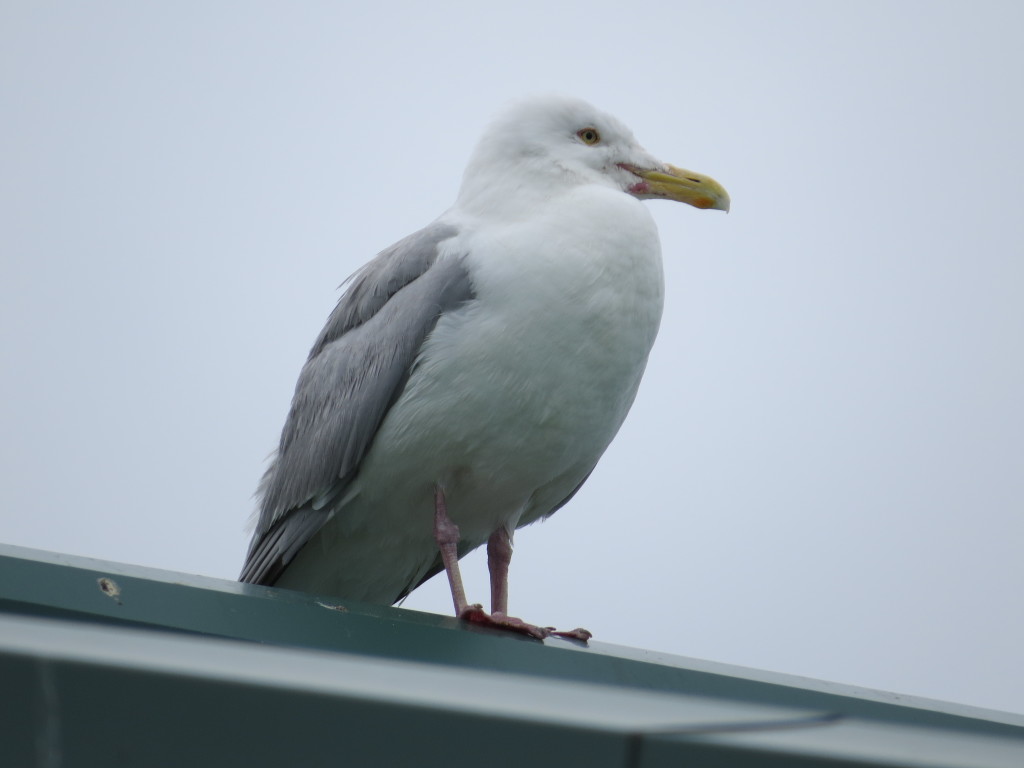
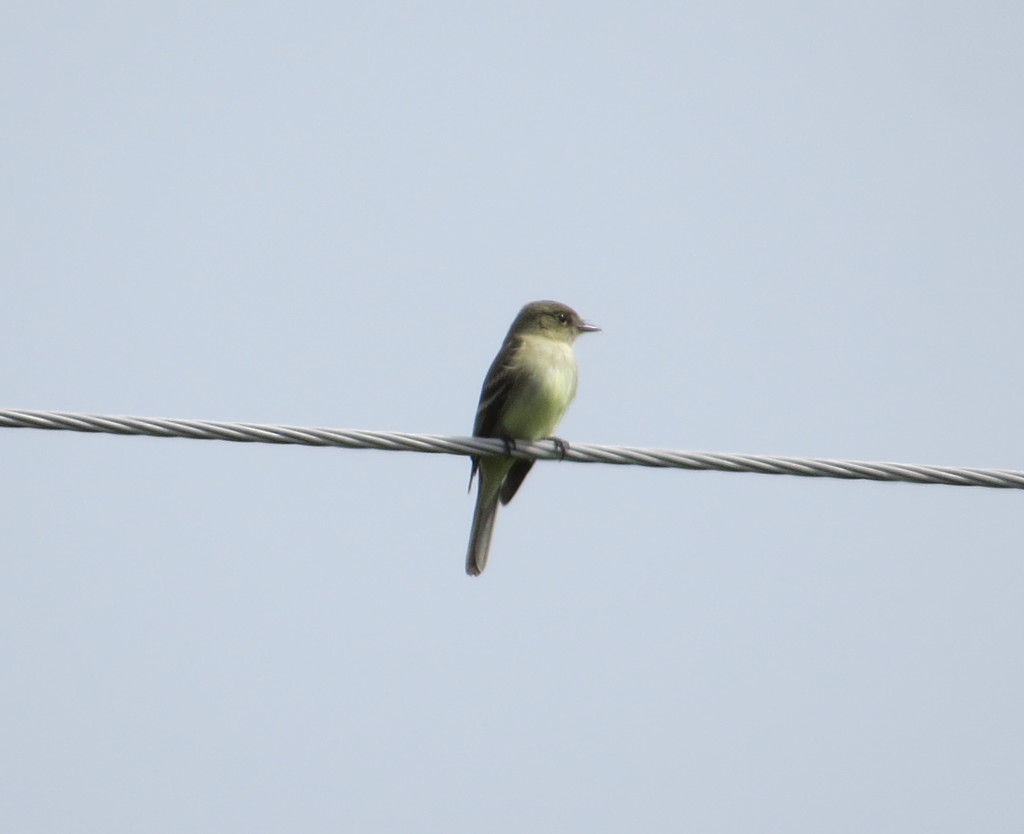
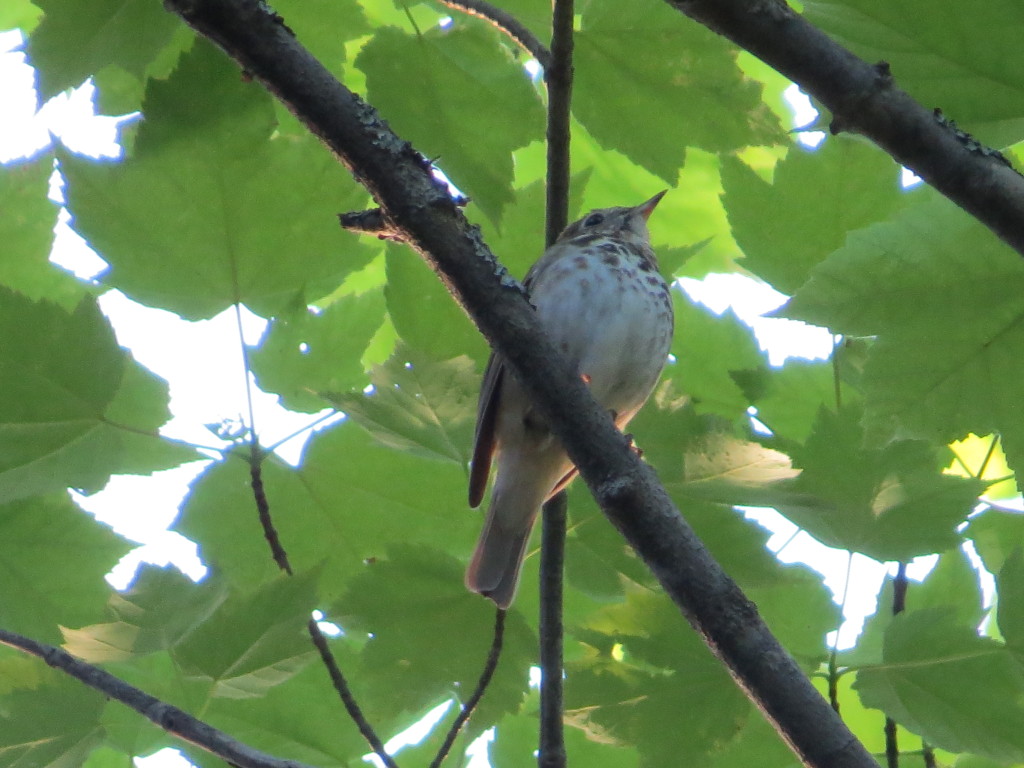
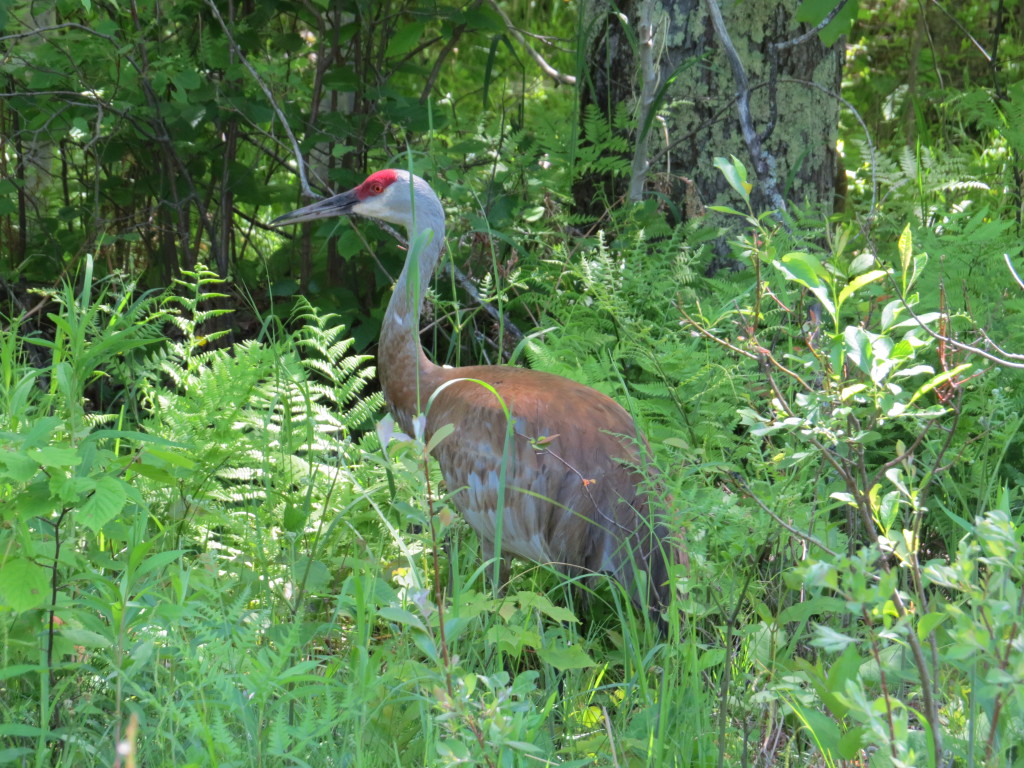
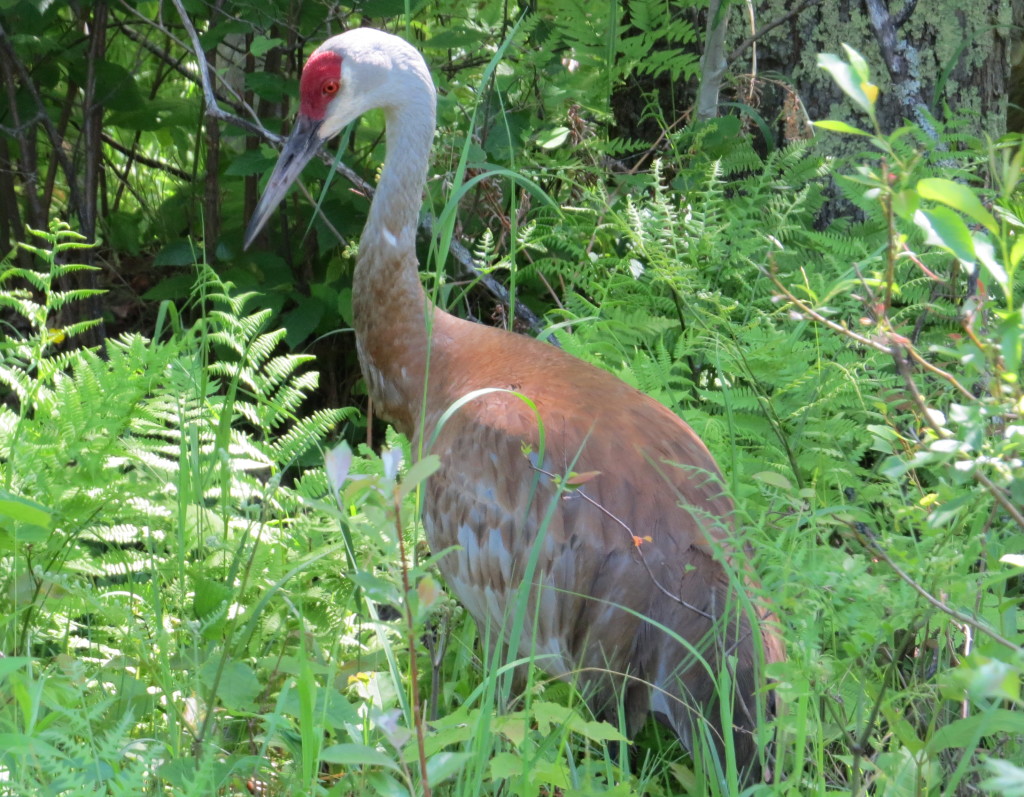
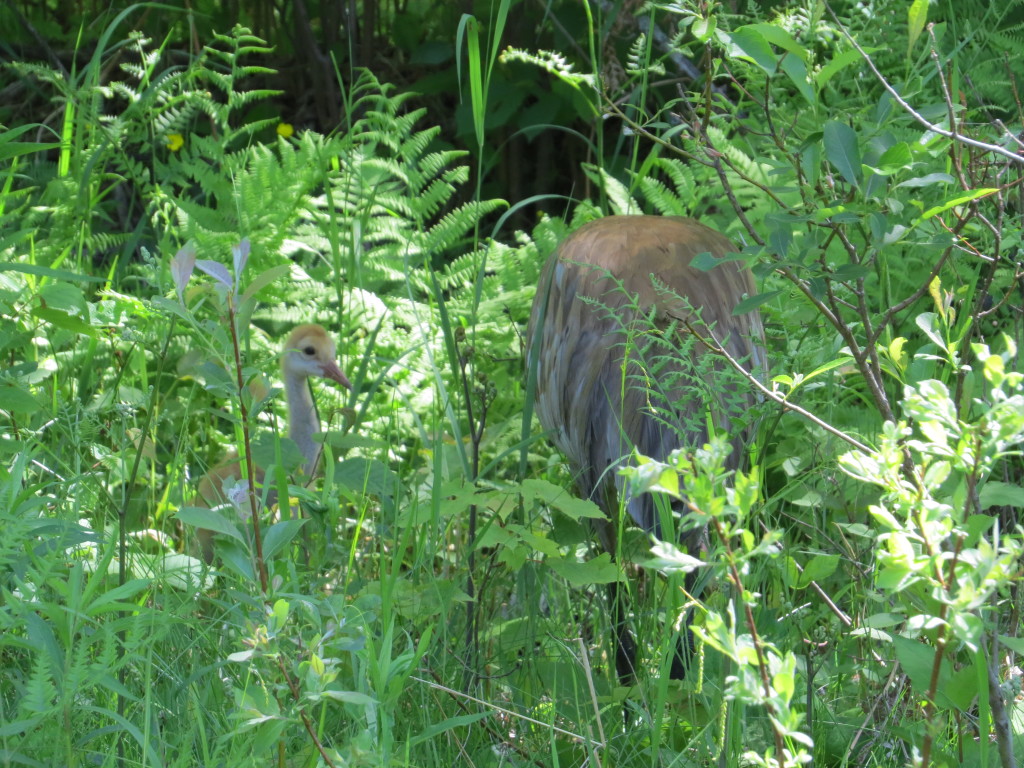
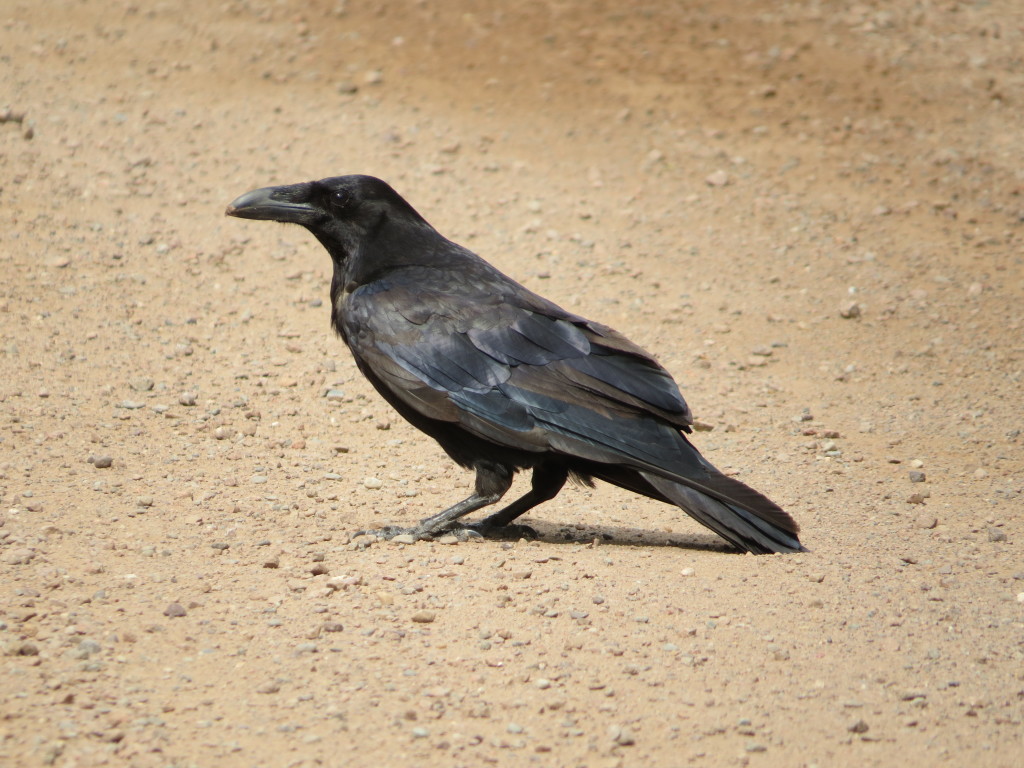
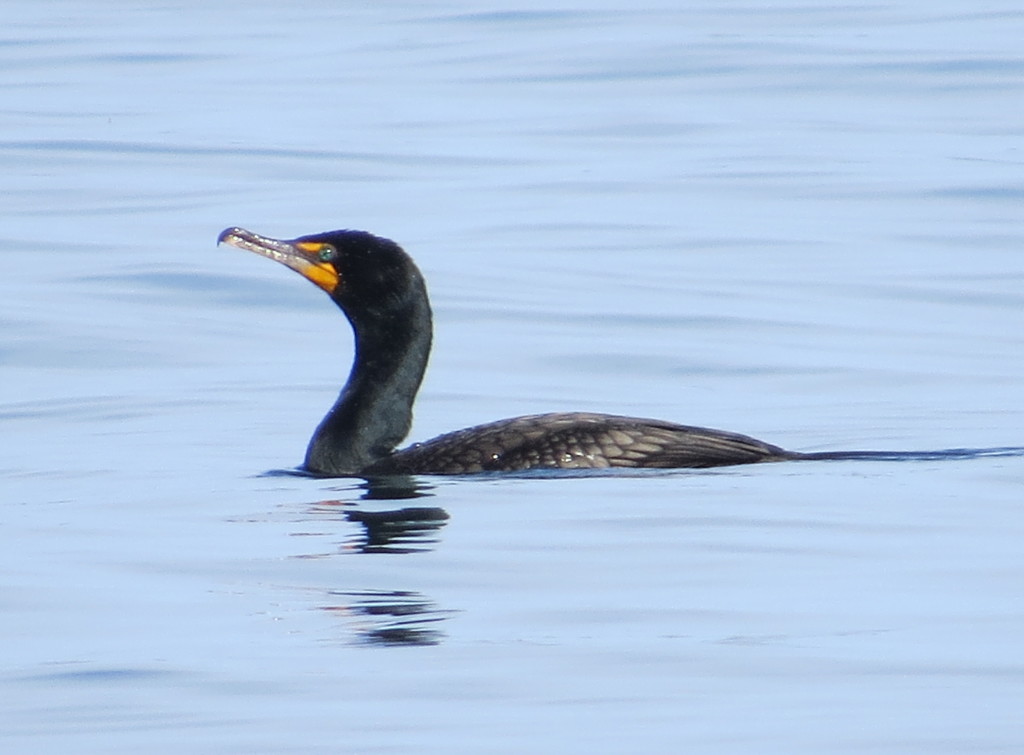
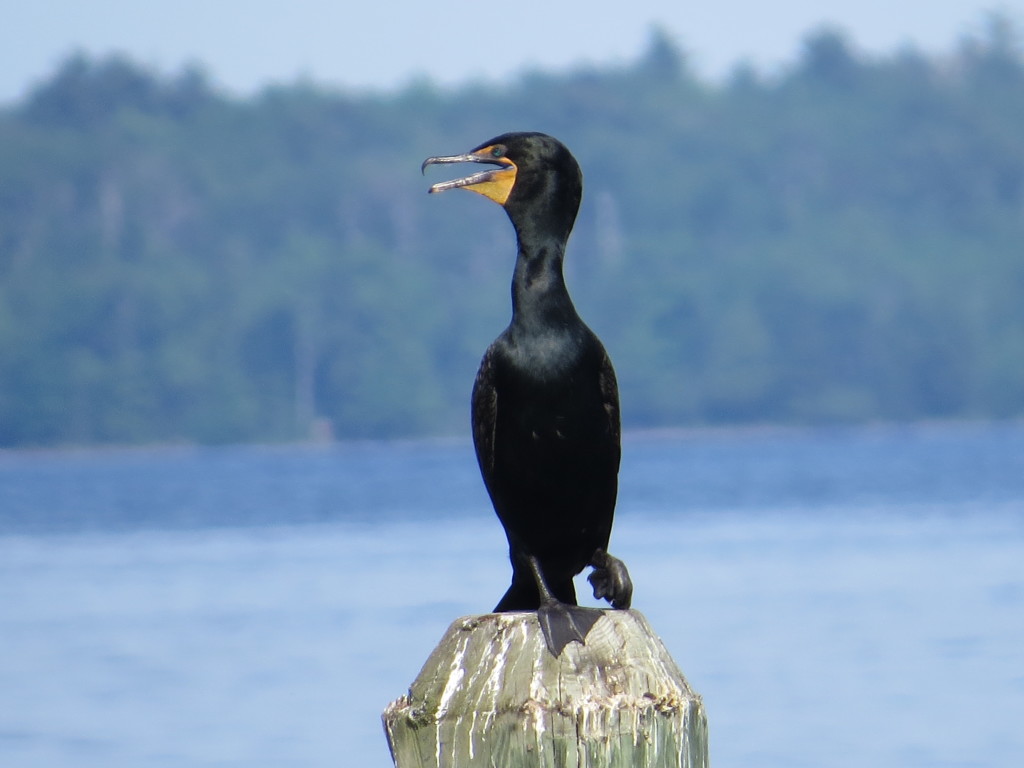
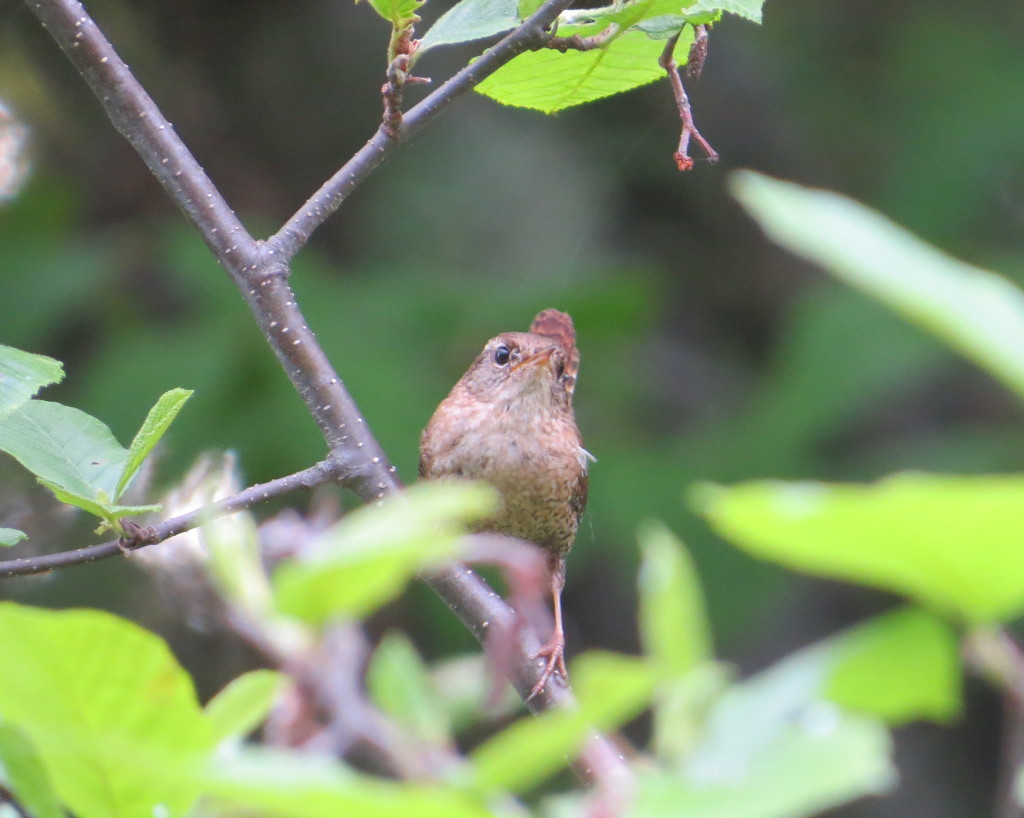
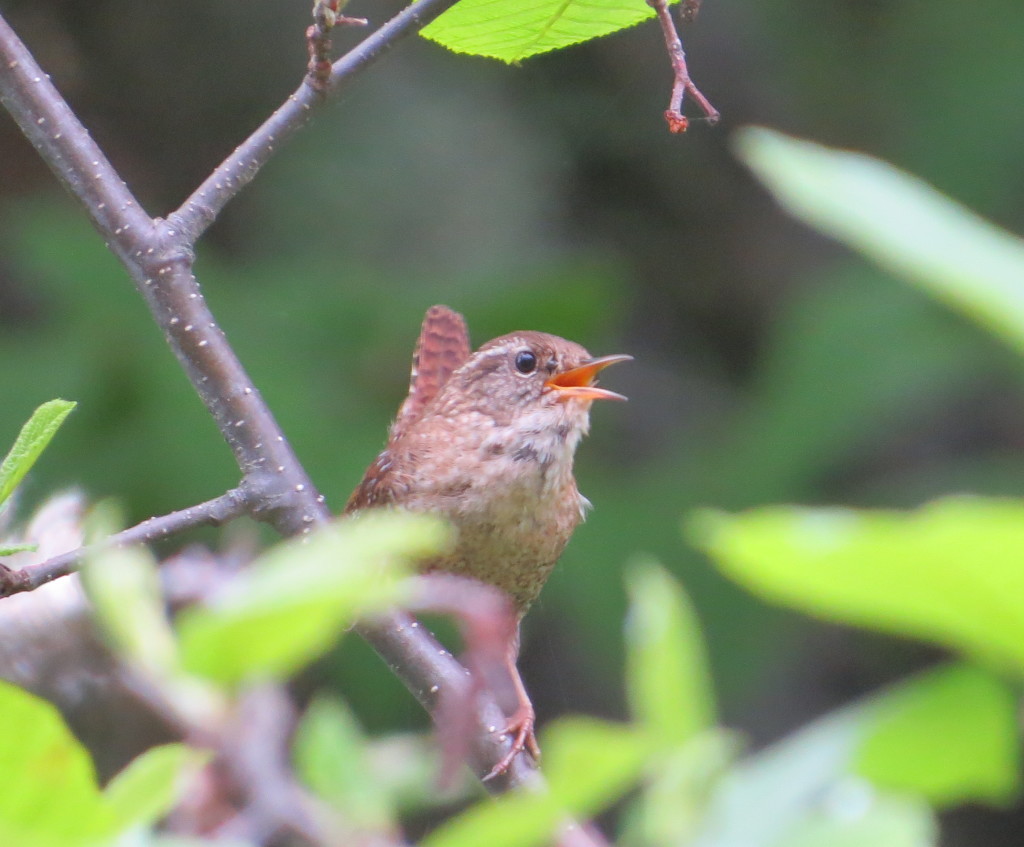 I’m human, I make mistakes. Awhile back I prematurely declared on this blog that Canyon Wren is the best Wren. I now retract that statement. Sorry, AZ friends, but I’m declaring WIWR the best Wren now.
I’m human, I make mistakes. Awhile back I prematurely declared on this blog that Canyon Wren is the best Wren. I now retract that statement. Sorry, AZ friends, but I’m declaring WIWR the best Wren now.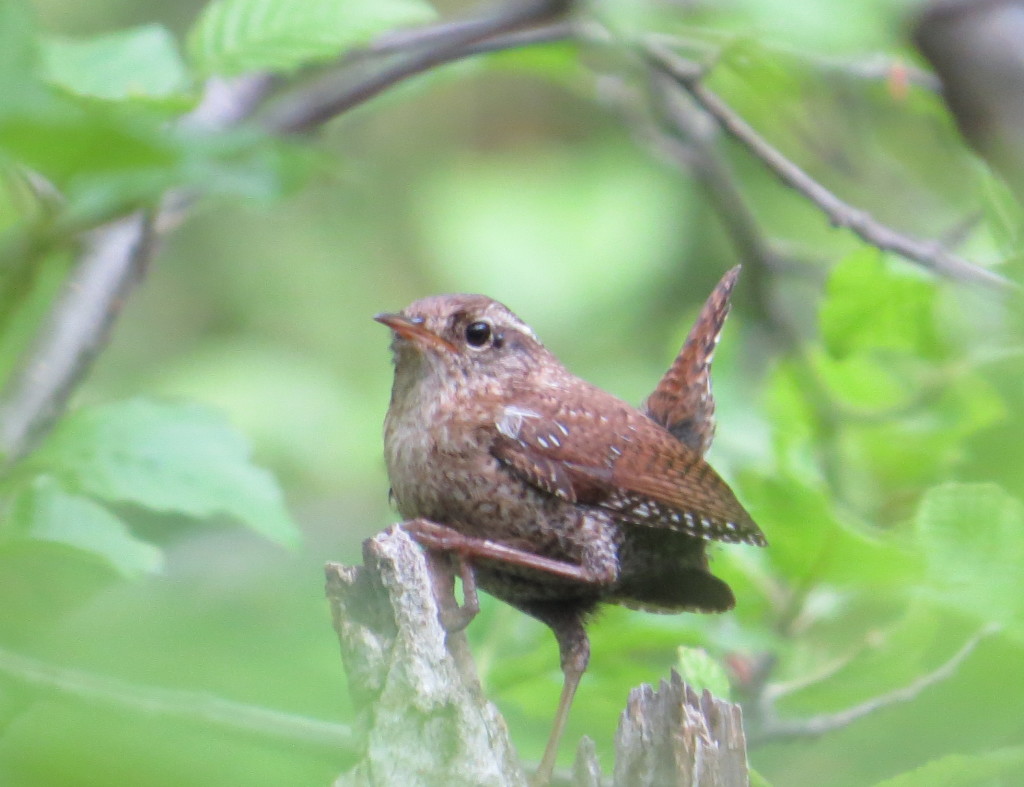
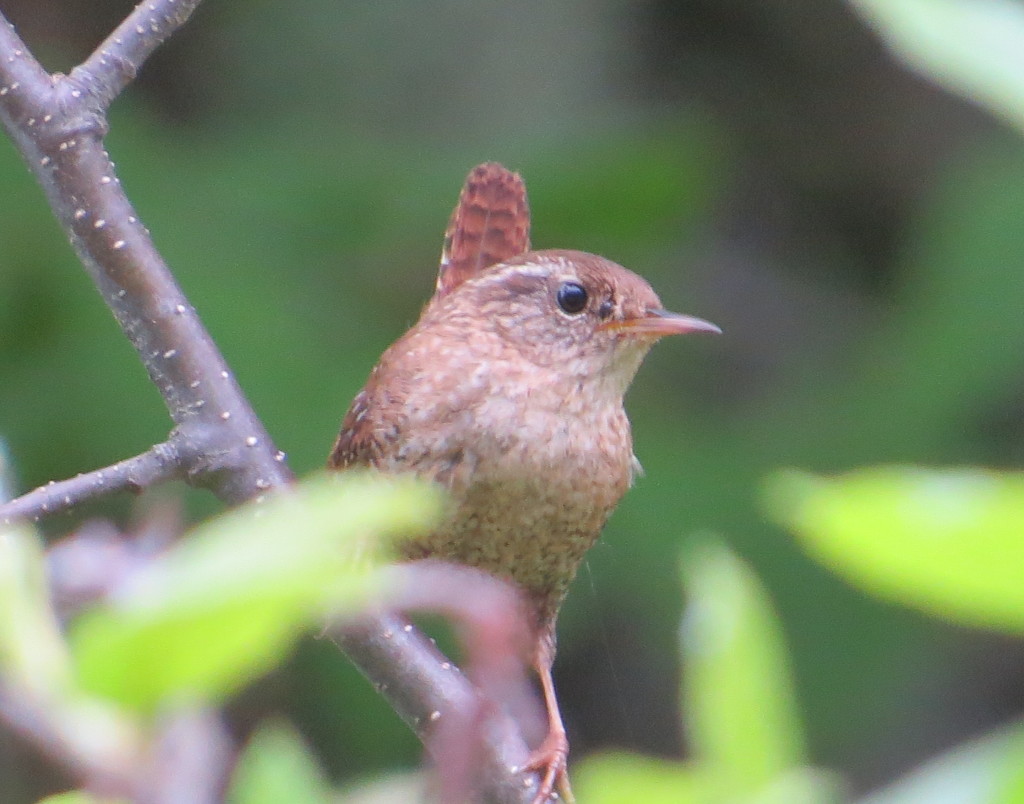 The WIWR was a huge highlight, but perhaps even more thrilling because of the bird’s vibrant colors was finding a Mourning Warbler. Unlike the Wren, I have seen MOWA well before but always briefly, certainly never long enough to photograph. That changed on this trip.
The WIWR was a huge highlight, but perhaps even more thrilling because of the bird’s vibrant colors was finding a Mourning Warbler. Unlike the Wren, I have seen MOWA well before but always briefly, certainly never long enough to photograph. That changed on this trip.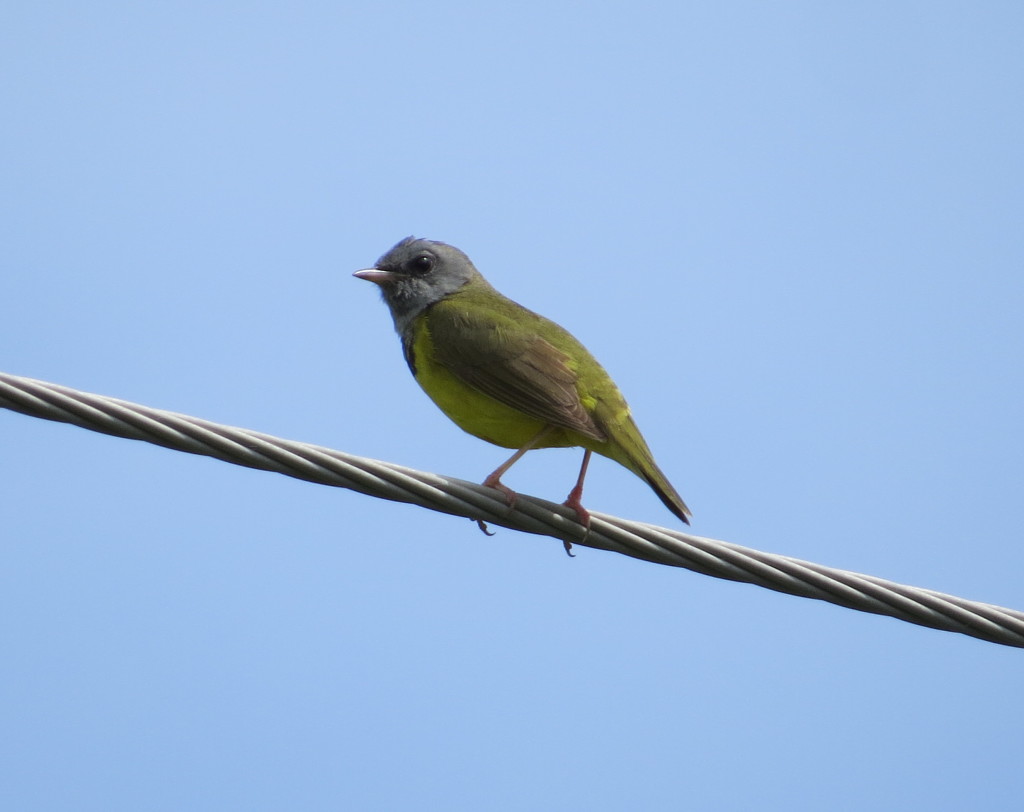
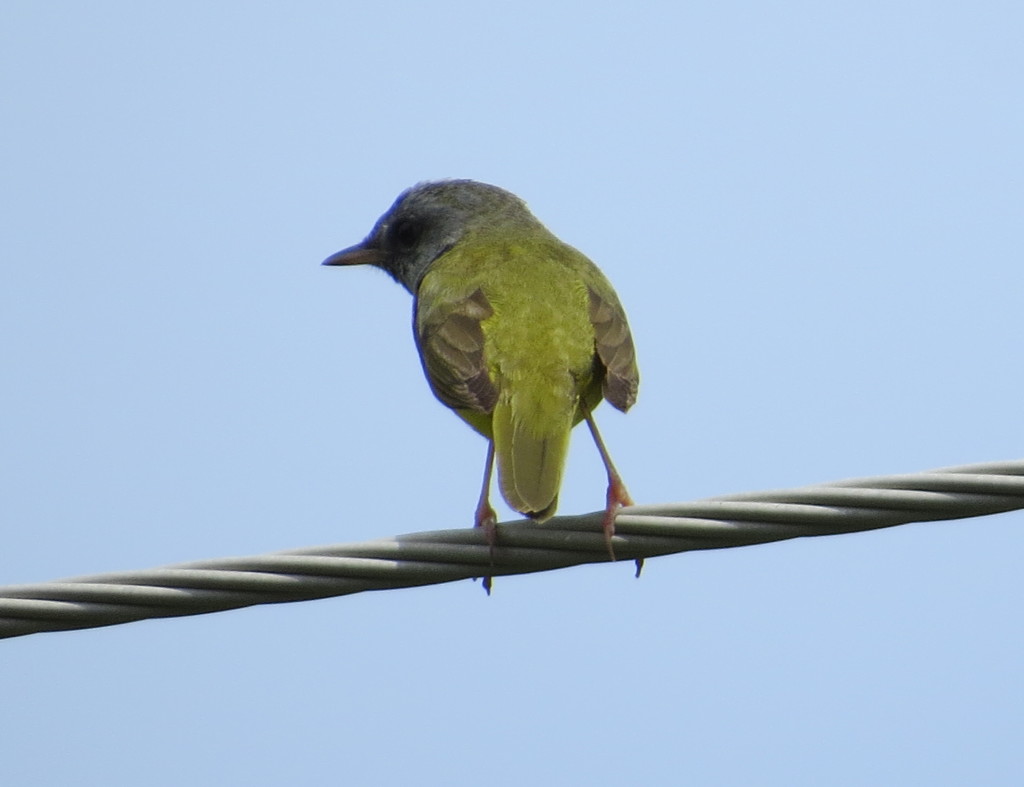
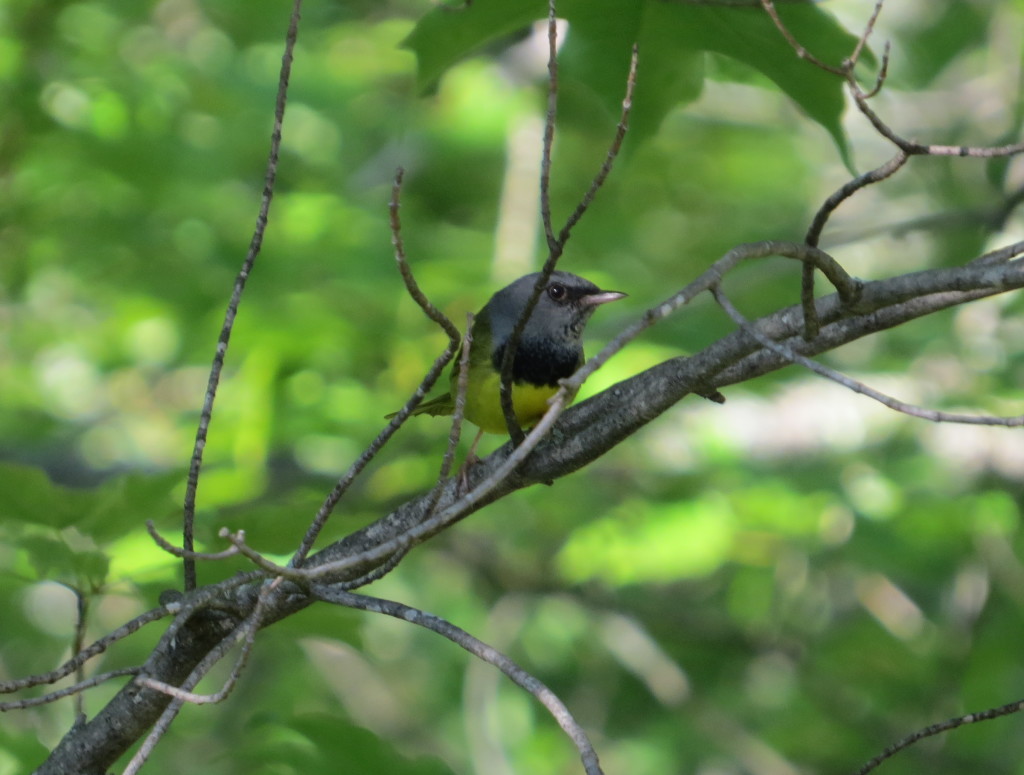
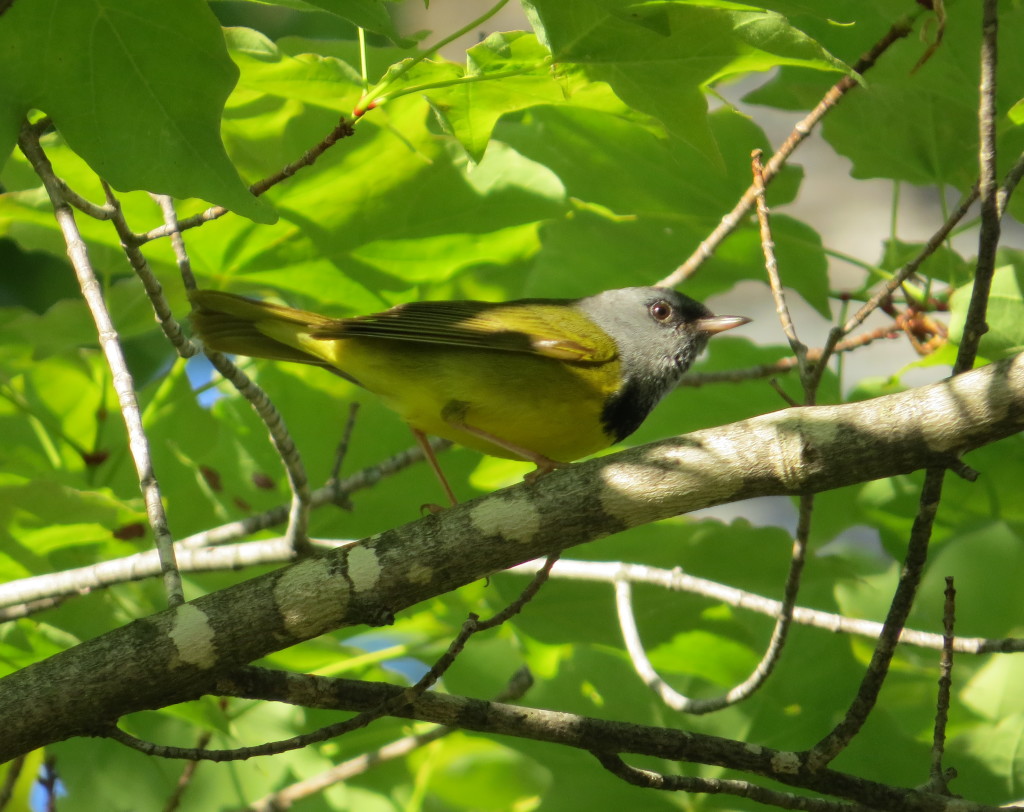
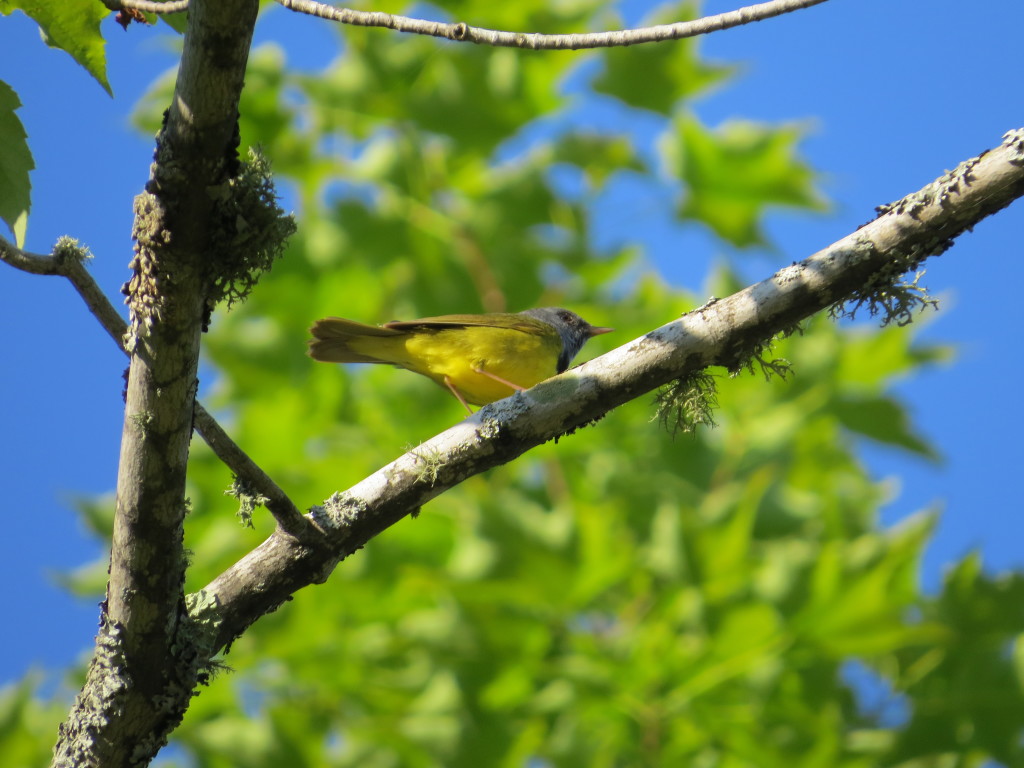
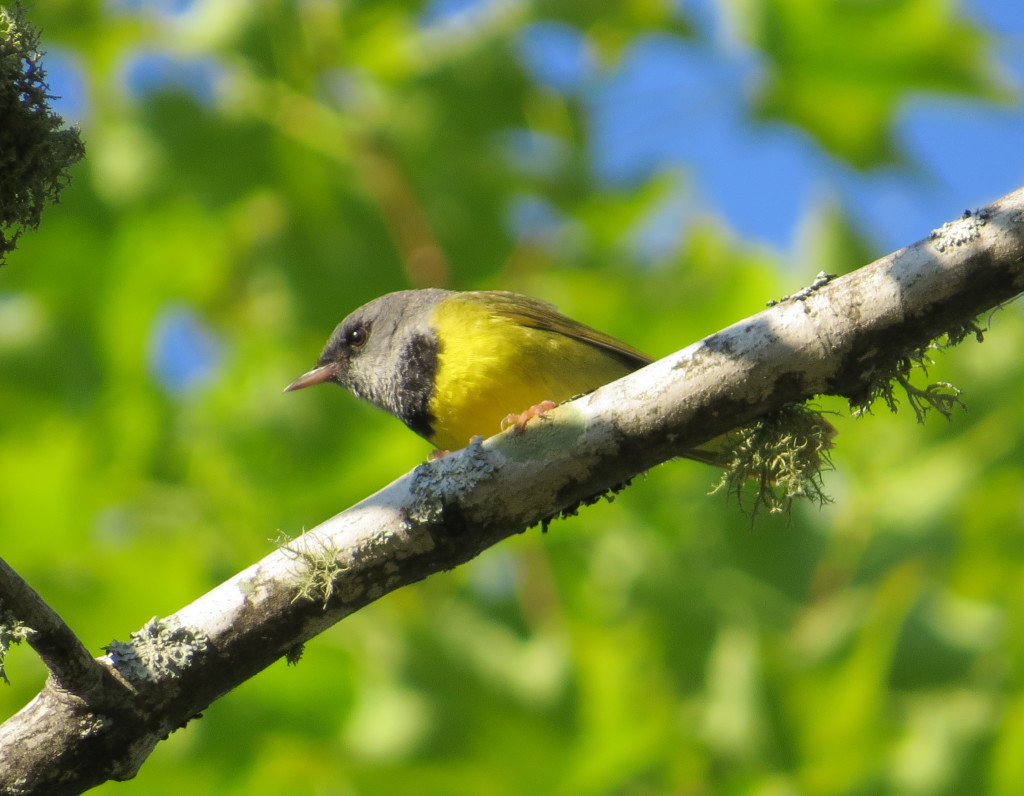 It felt good to get back to the island…so good after the disappointment of 2013. The last time I was at Madeline Island in 2011 I wasn’t even a birder. I didn’t even know what a Warbler was. This return to MI was incredible in many regards, but especially for seeing birds and photographing them. For the next post I honestly can’t decide what to share with you first–the high seas outing to get an endangered species lifer or the meatiest, crushiest mega-Warbler post I’ve ever done. Wait and see, I guess.
It felt good to get back to the island…so good after the disappointment of 2013. The last time I was at Madeline Island in 2011 I wasn’t even a birder. I didn’t even know what a Warbler was. This return to MI was incredible in many regards, but especially for seeing birds and photographing them. For the next post I honestly can’t decide what to share with you first–the high seas outing to get an endangered species lifer or the meatiest, crushiest mega-Warbler post I’ve ever done. Wait and see, I guess.